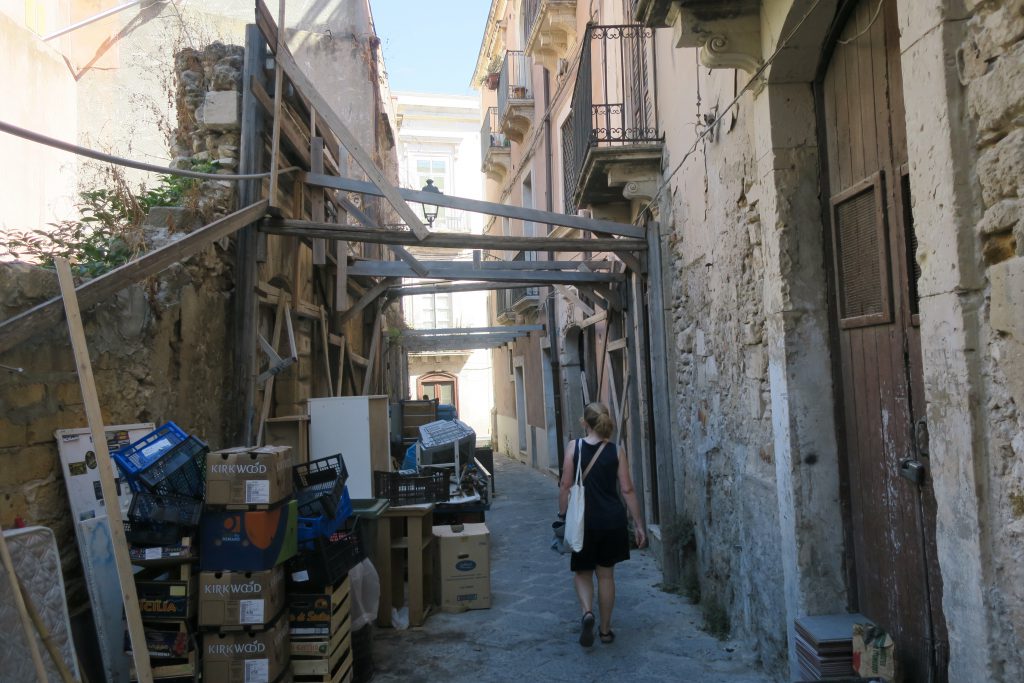
Long ago and far away. 2018, in the back streets of Ortigia. Before Brexit and before Covid, when holidays were not so unusual. I’m looking back at old photos as a kind of vicarious vacation, an escape from our day to day to yesterday. We’d been here for a couple of weeks, exploring the island and the countryside round about. On this day we walked from Ortigia back into mainland Siracusa to discover the Latomia dei Cappuccini and the Catacombs of San Giovanni.
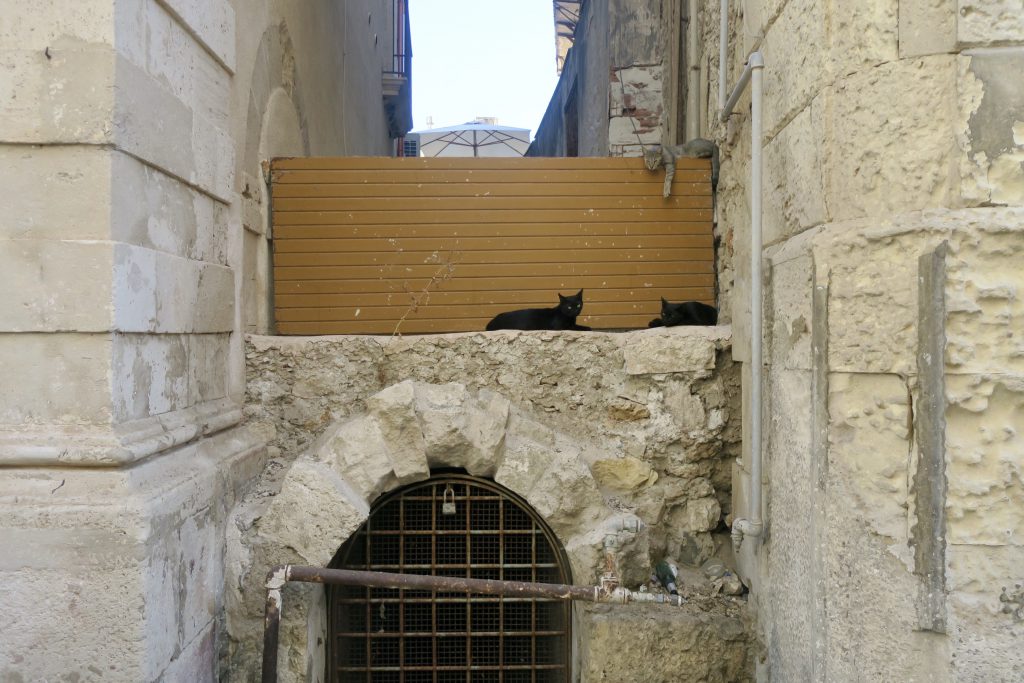
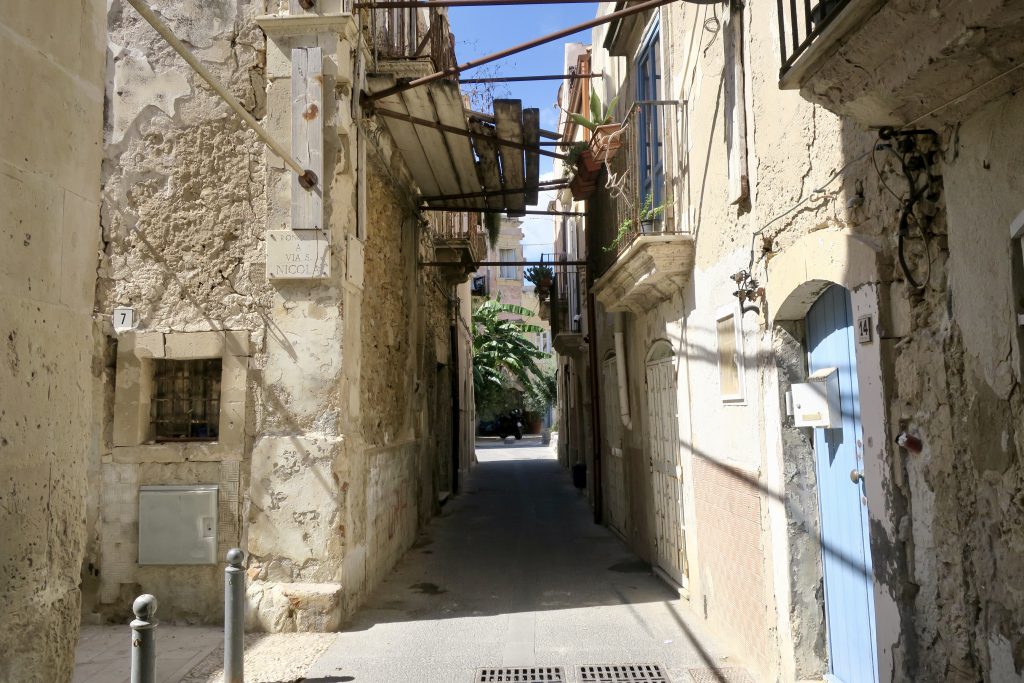
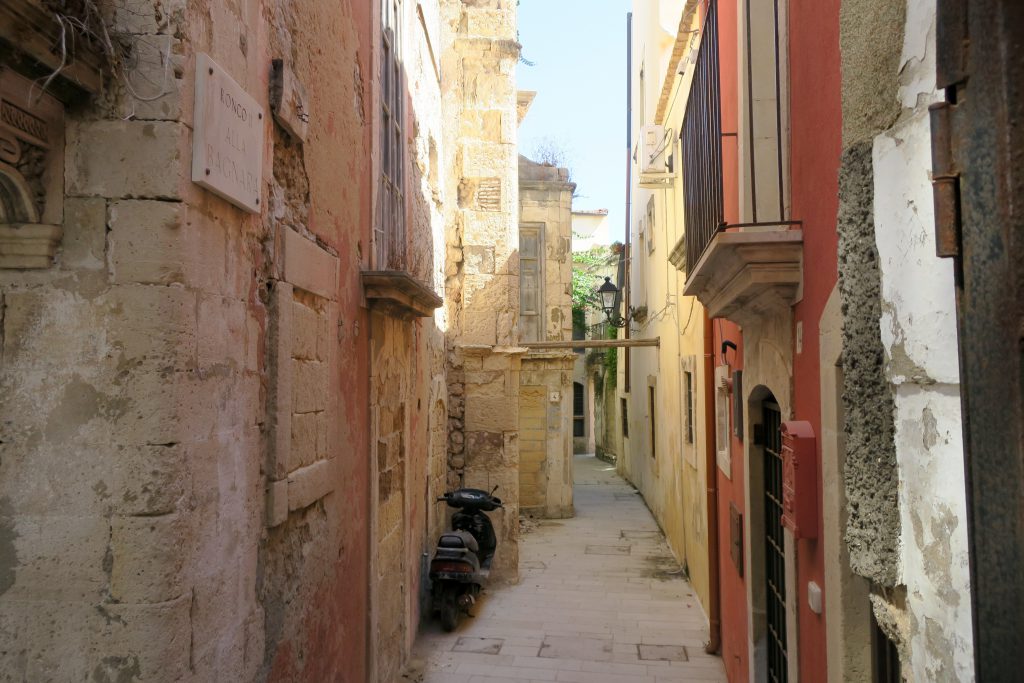
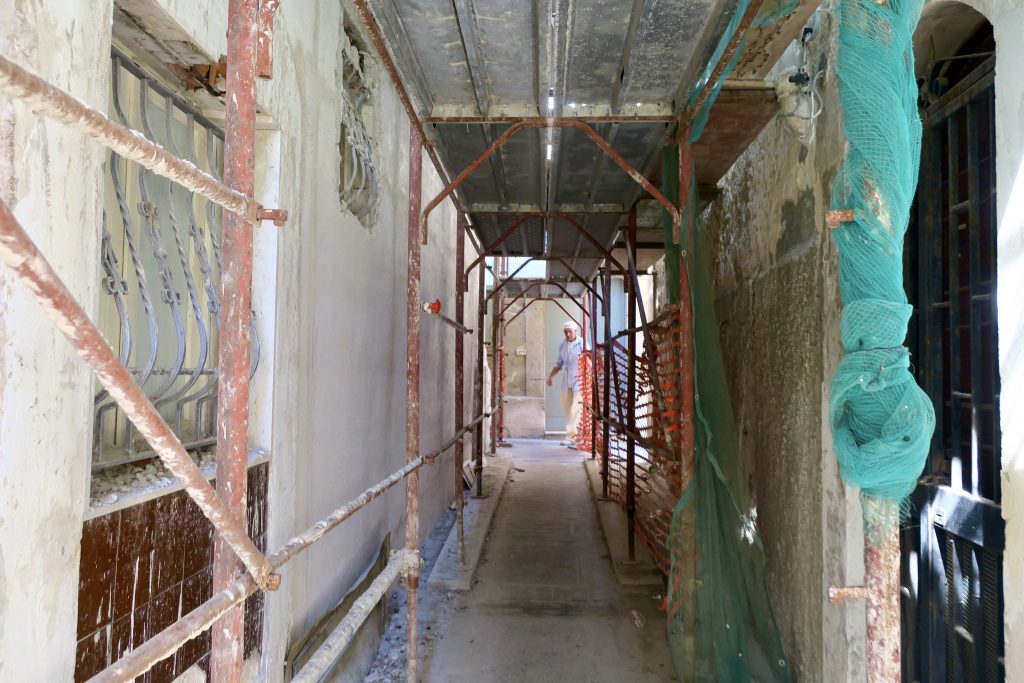
This ancient labyrinth is a work in progress.
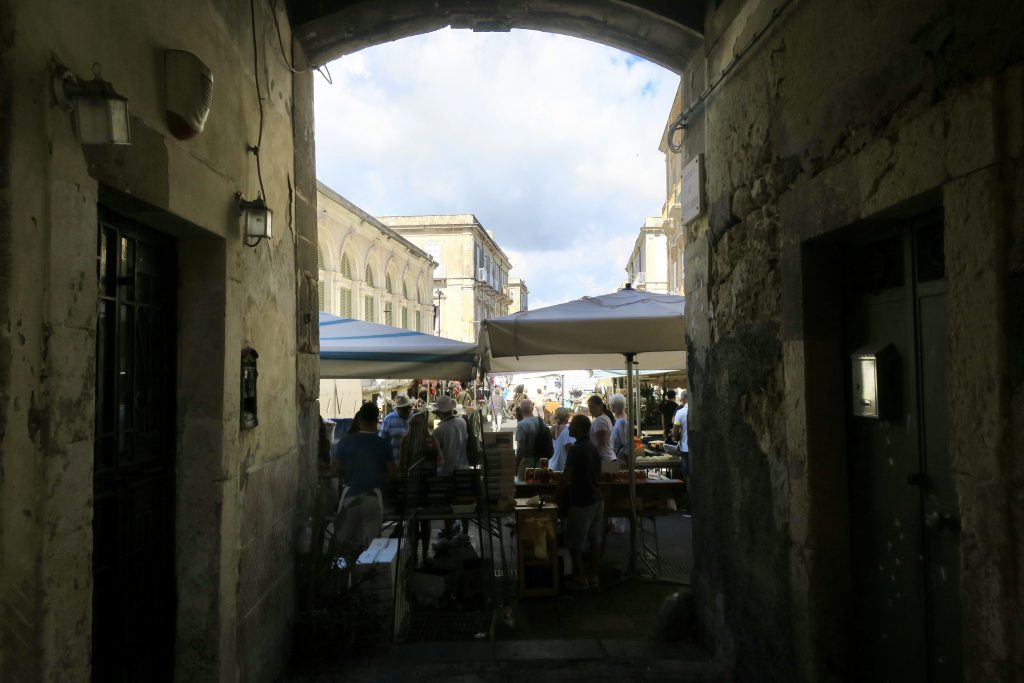
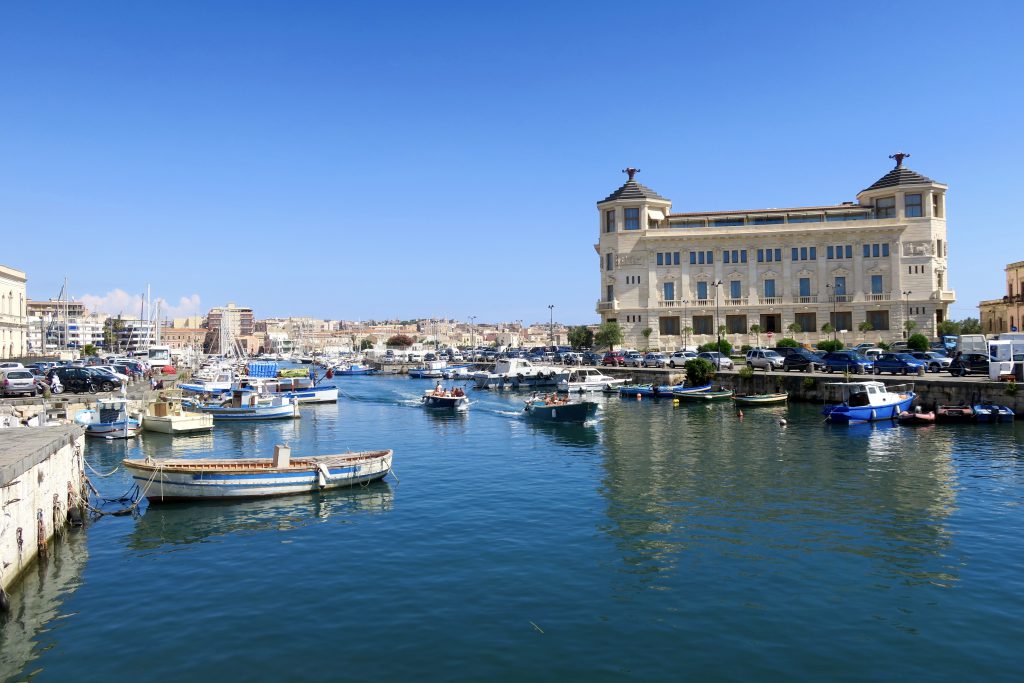
Crossing Ponte Umbertino with a view of the Palazzo delle Poste. Ortigia is on the right and Siracusa on the left. We were going to walk the left bank of Porto Piccolo and along the Riviera Dionisio coast road to Latomia.
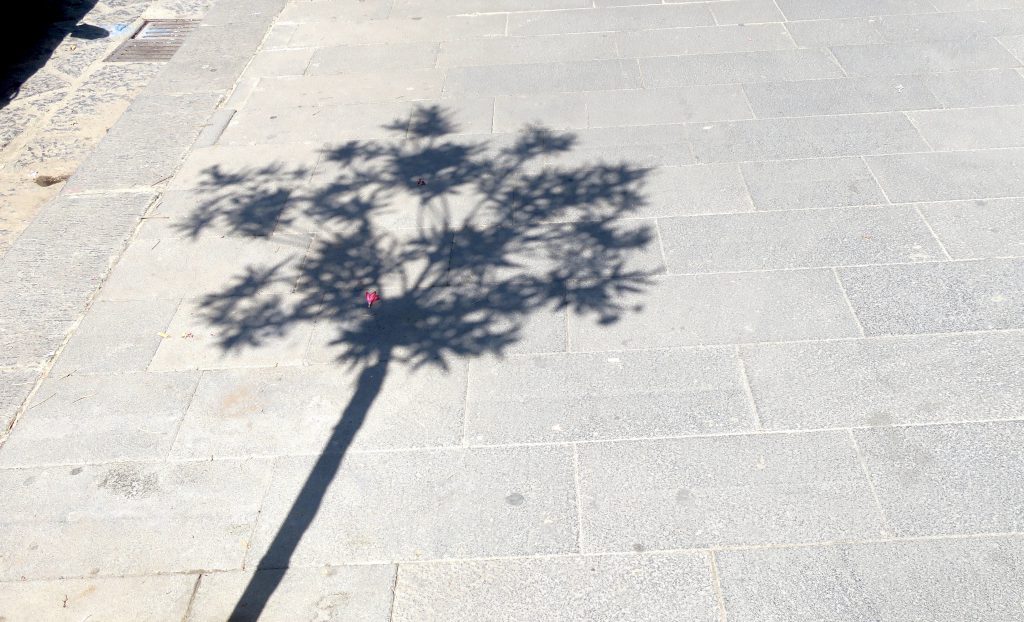
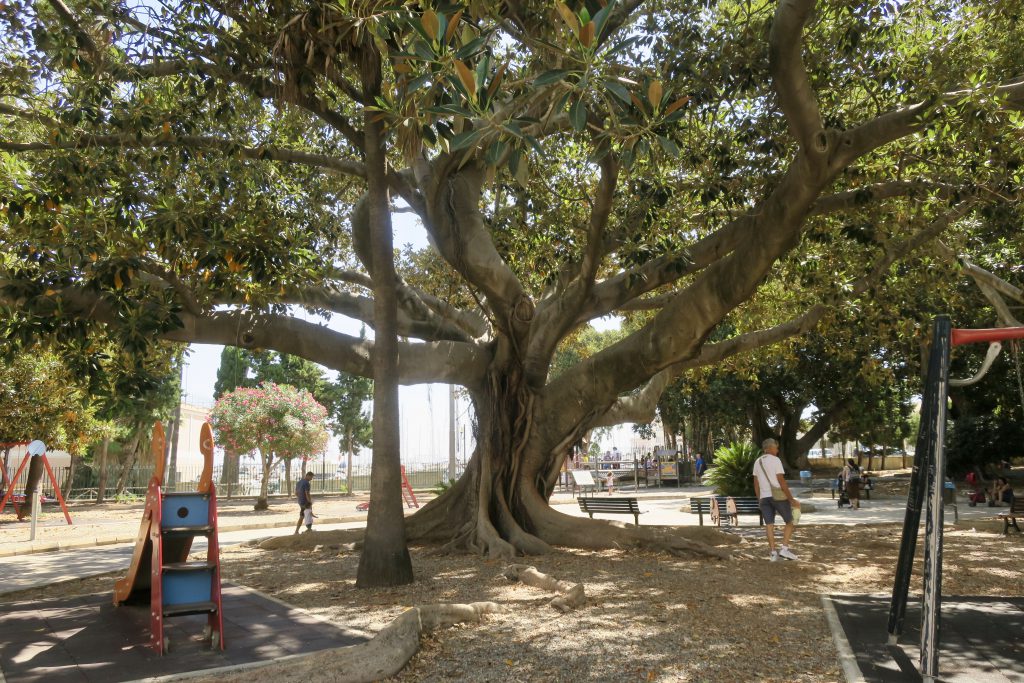
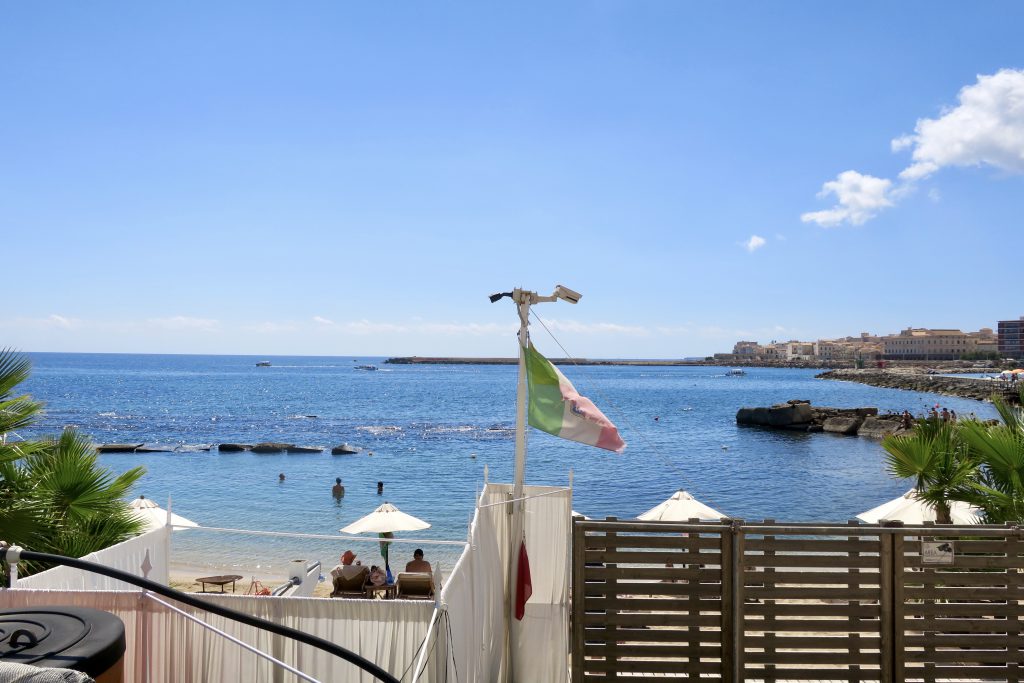
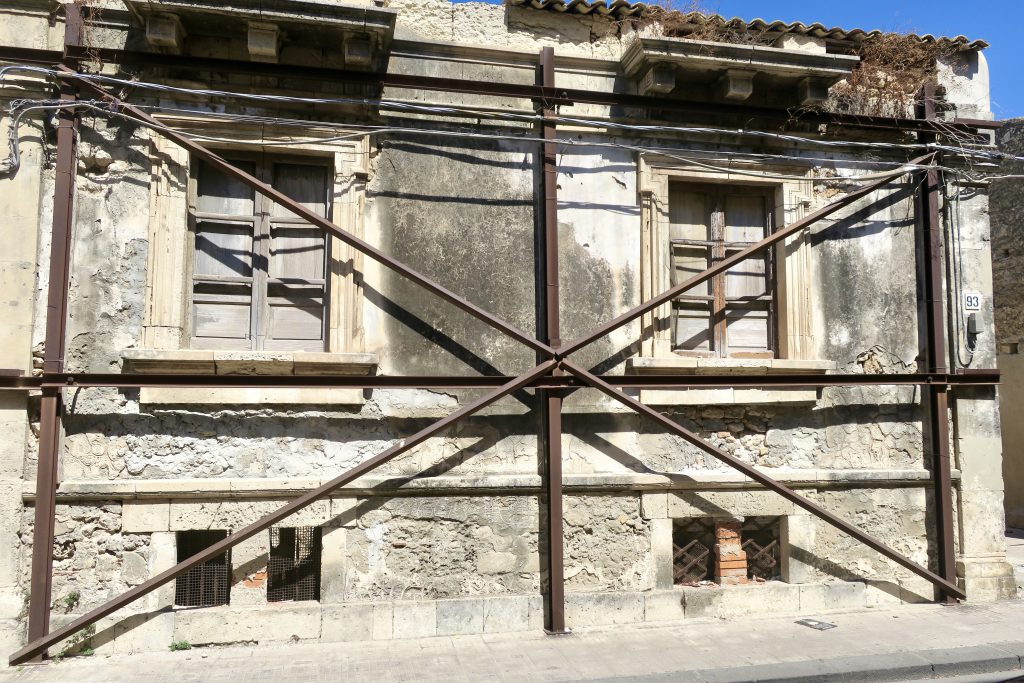
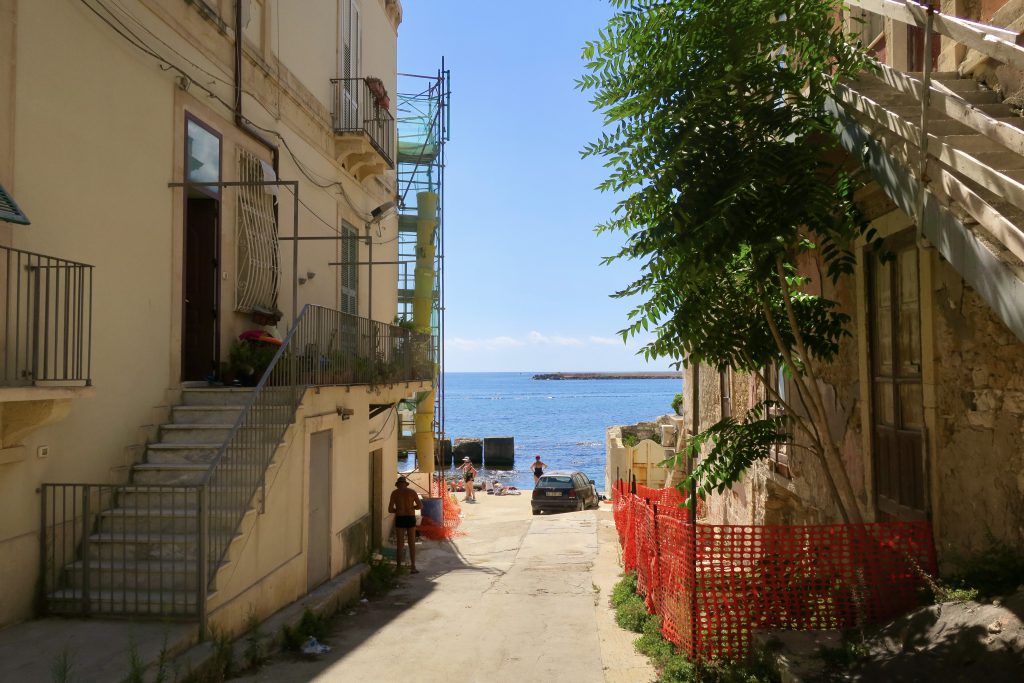
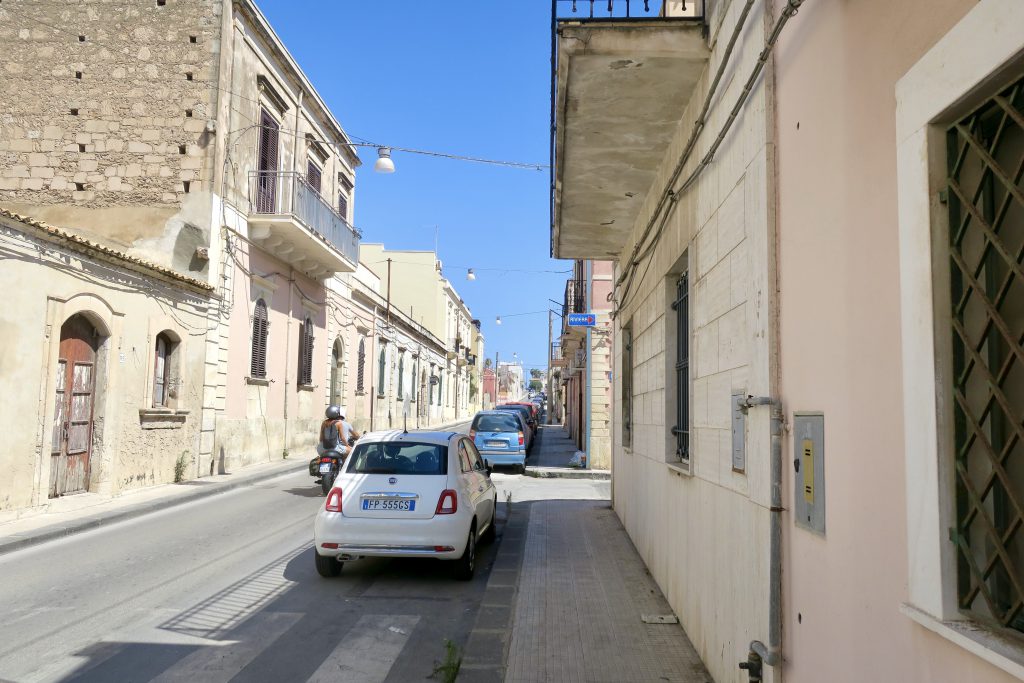
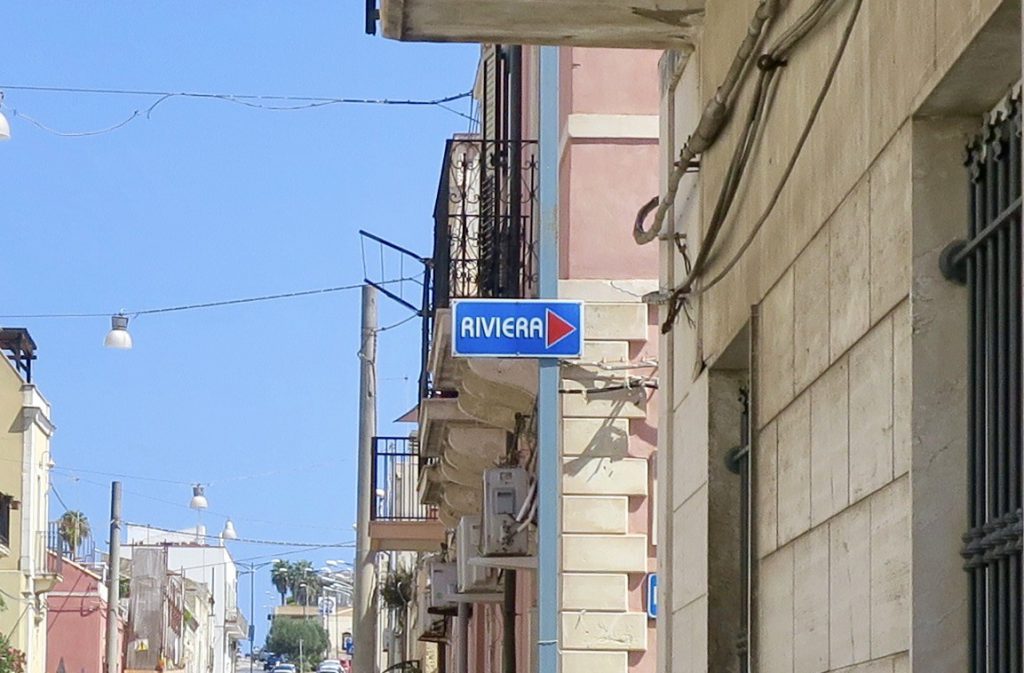
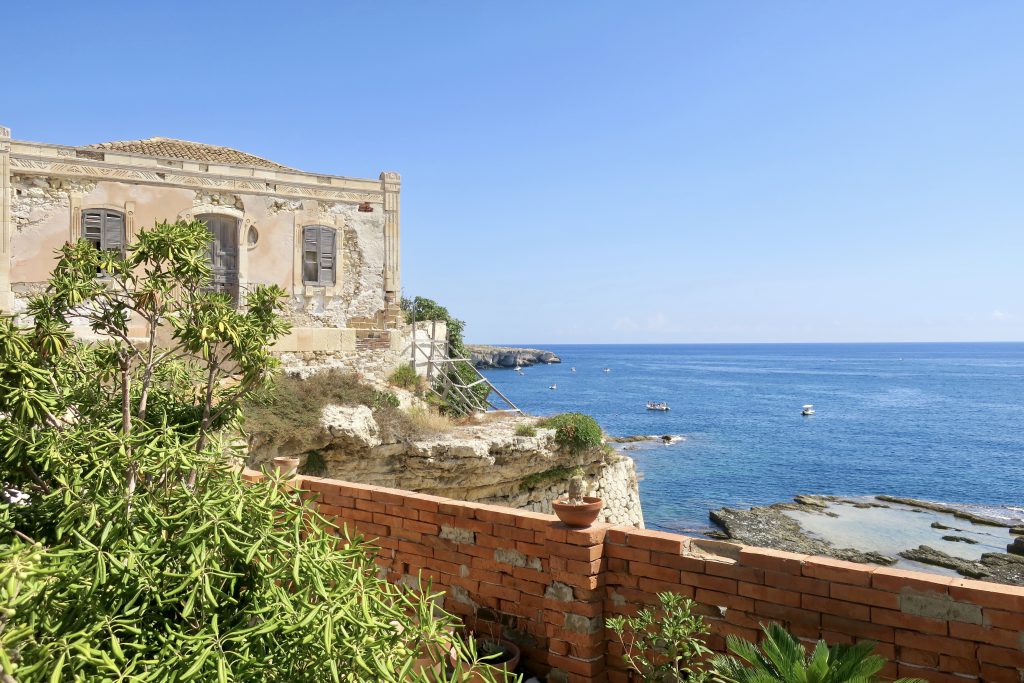
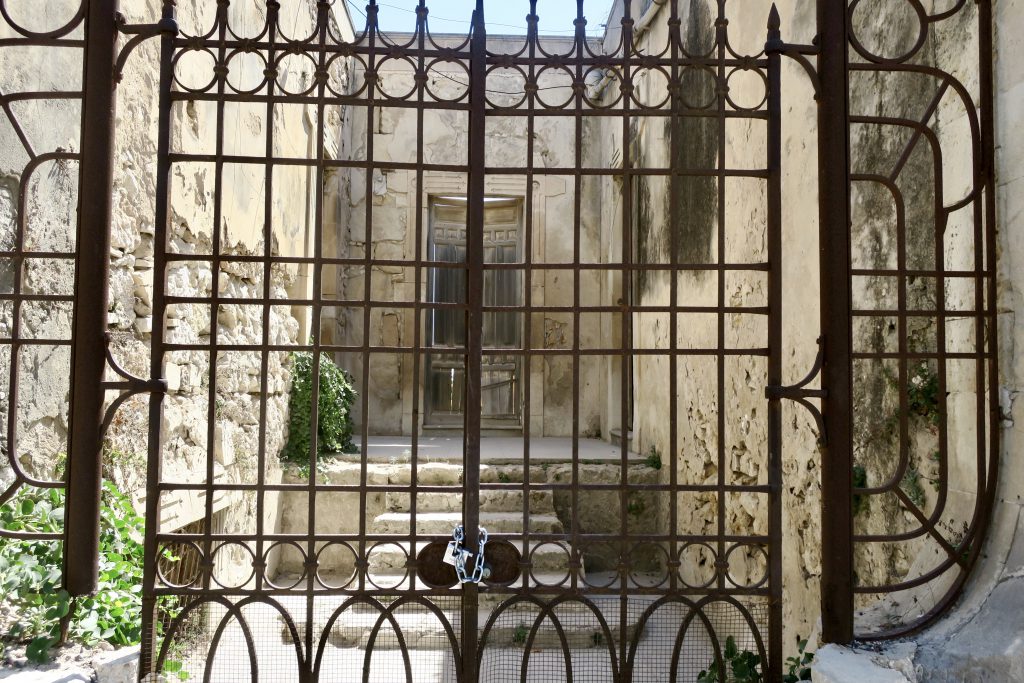
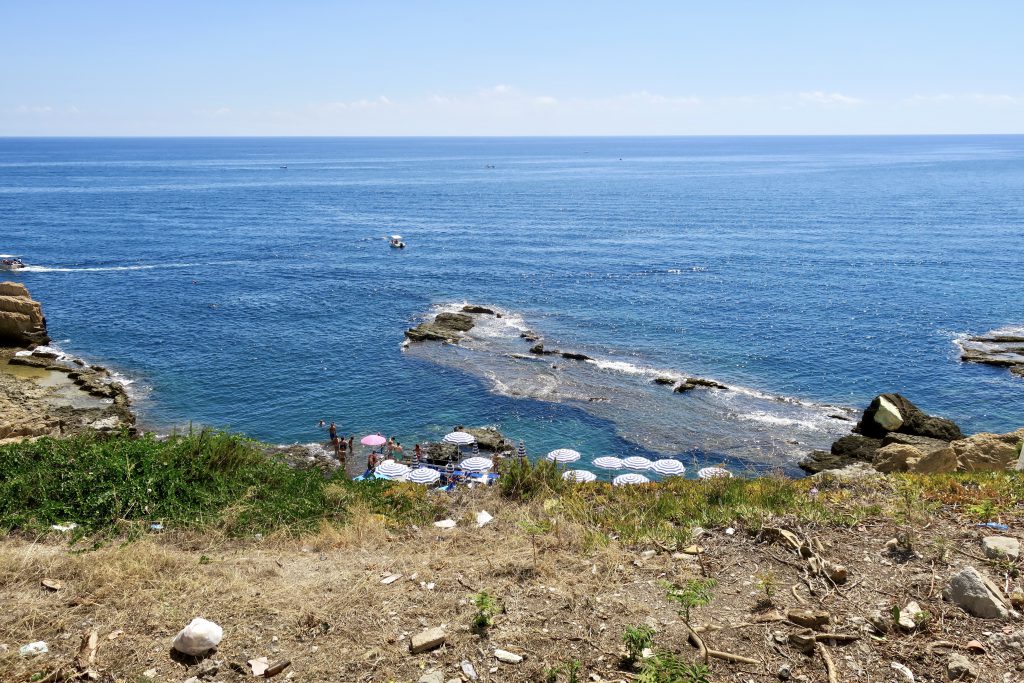
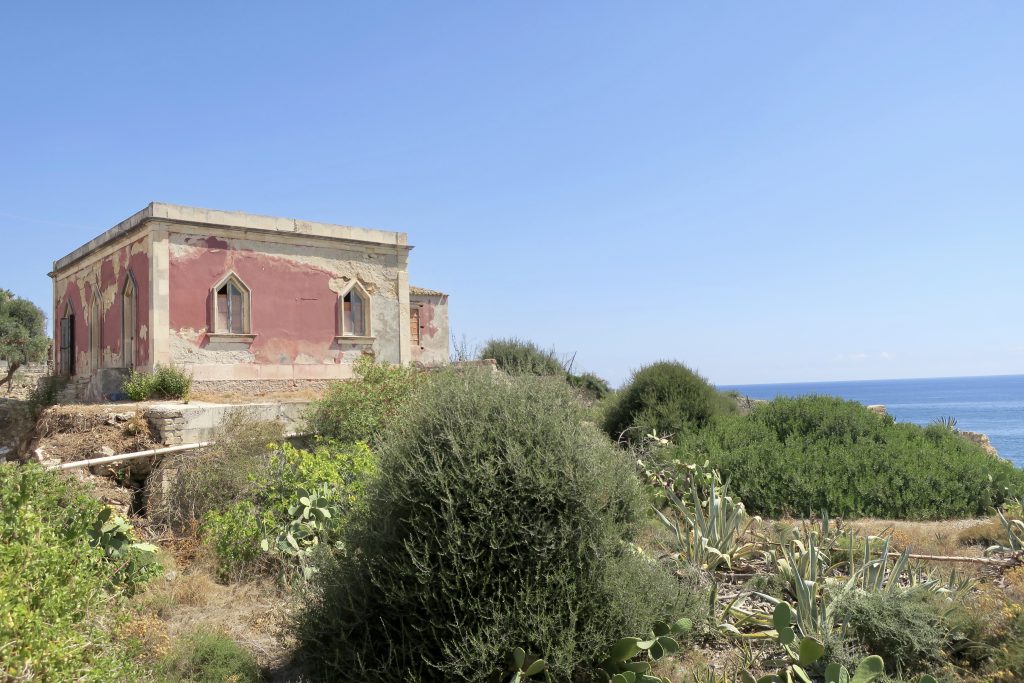
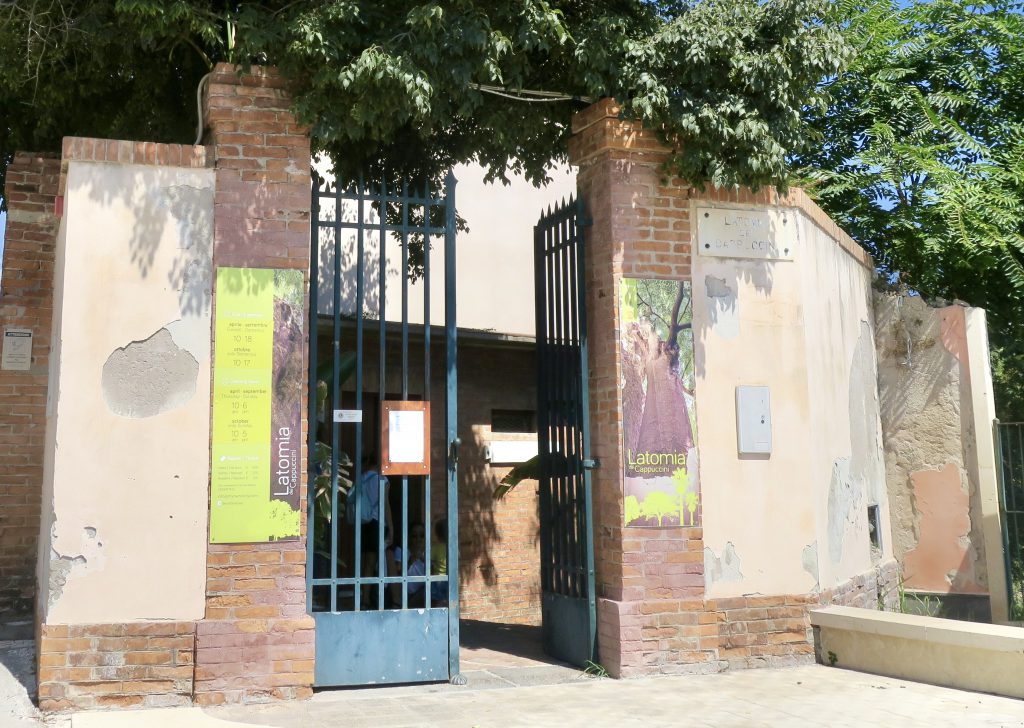
Then over the road and through the gates of Latomia dei Cappuccini, where we descended into a subterranean green world, birthplace of Ortigia.
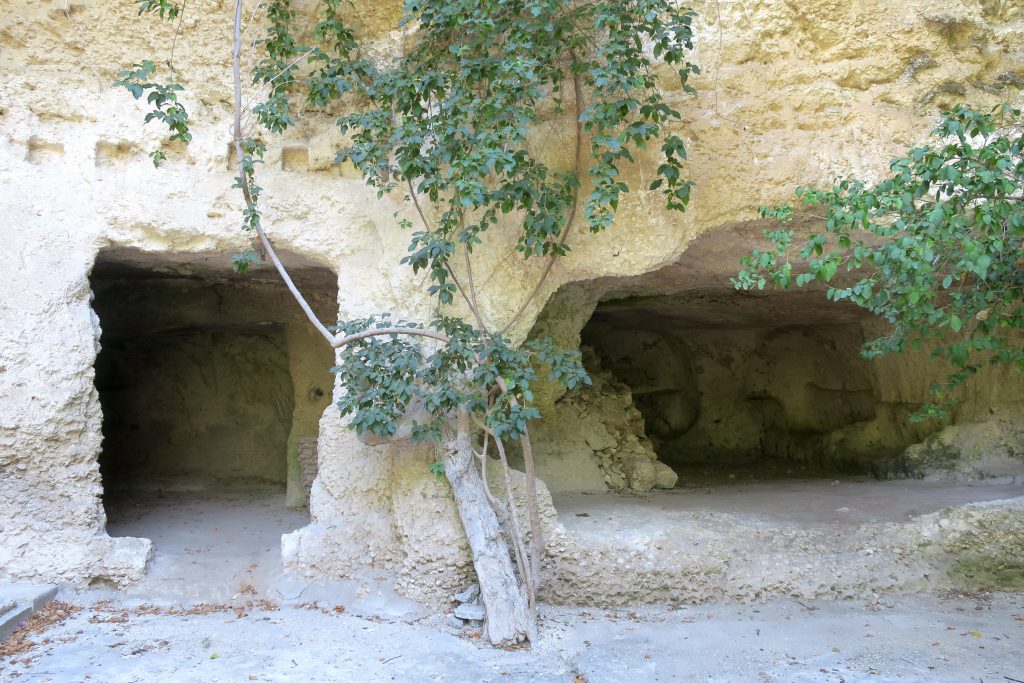
It was here that stone was first quarried to build the ancient city.
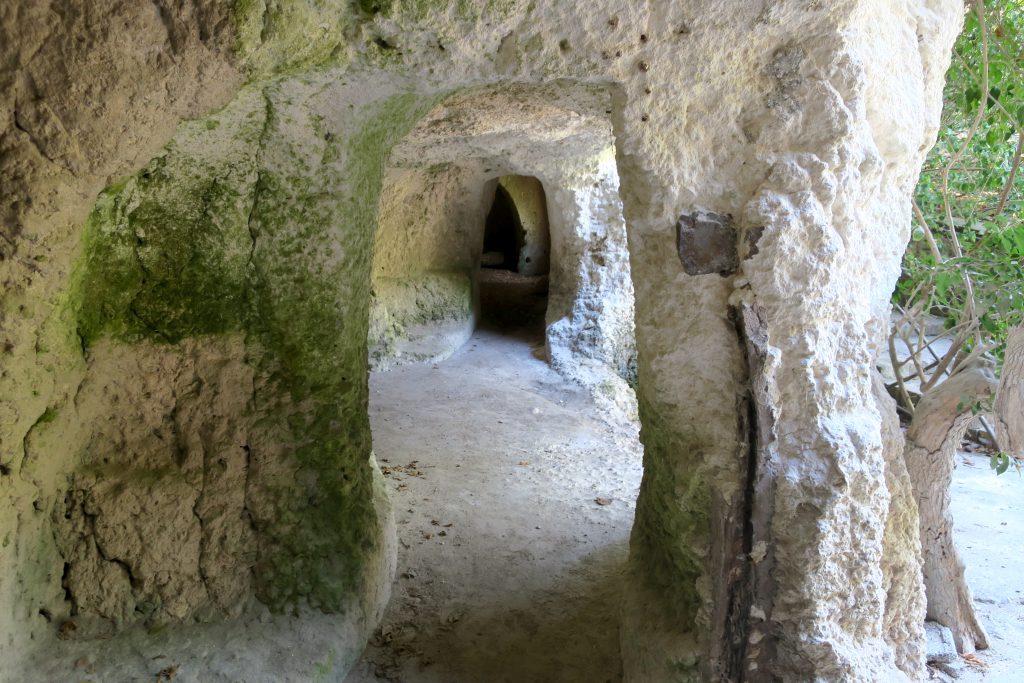
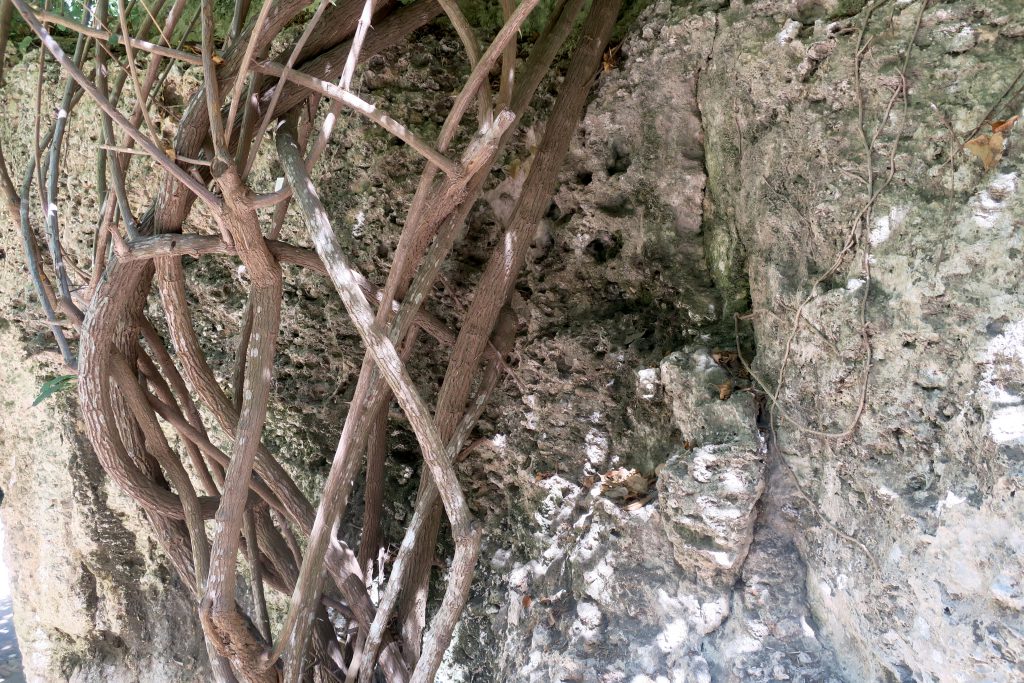
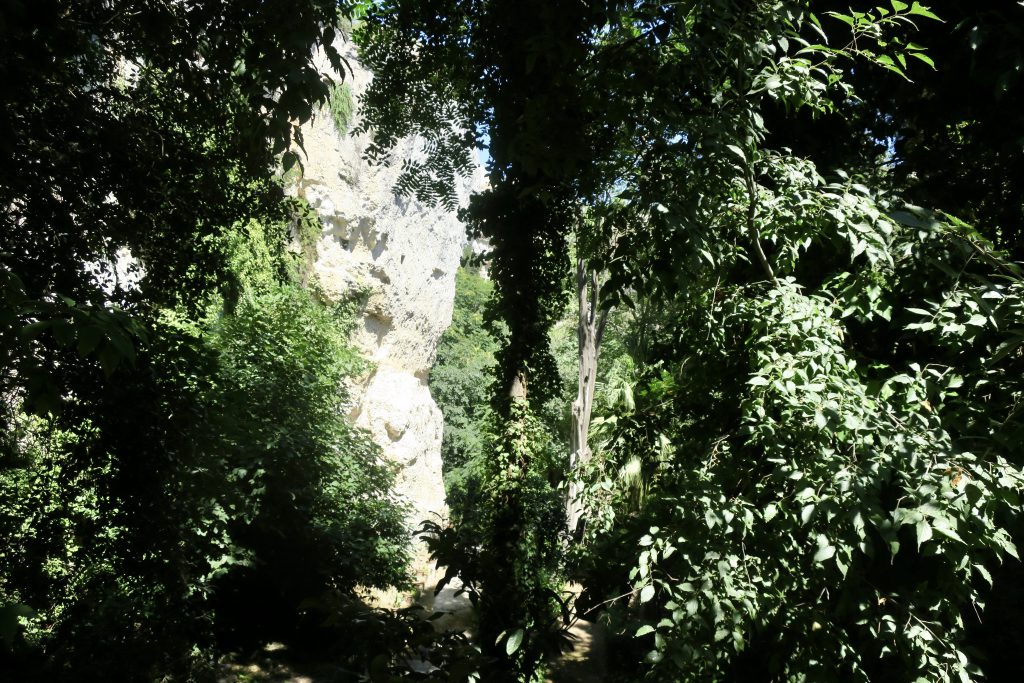
The Latomia dei Cappuccini is the largest (23000 square metres), deepest (30-40 metres) and oldest in Siracusa (VI century BC). Its name comes from the Greek word ‘Latomíai’ which is composed of two parts: ‘lithos’ meaning stone and ‘temno’ meaning cut. The name is also related to the original function of this place as a quarry, where the Greeks cut blocks for buildings. Several writers wrote about the ancient origin of the Latomia like the Greek philosopher Xenophanes of Colophon and the Greek history writer Thucydides. In the 6th century Xenophanes studied and wrote about the fossilized fish in the rocks; one century later Thucydides depicts it as a deep and terrifying prison where over 7000 Athenians were imprisoned after the Peloponnesian War in 413 BC. This place has changed function at various times: first a quarry, then a prison, then a Christian cemetery and finally became a wonderful garden.
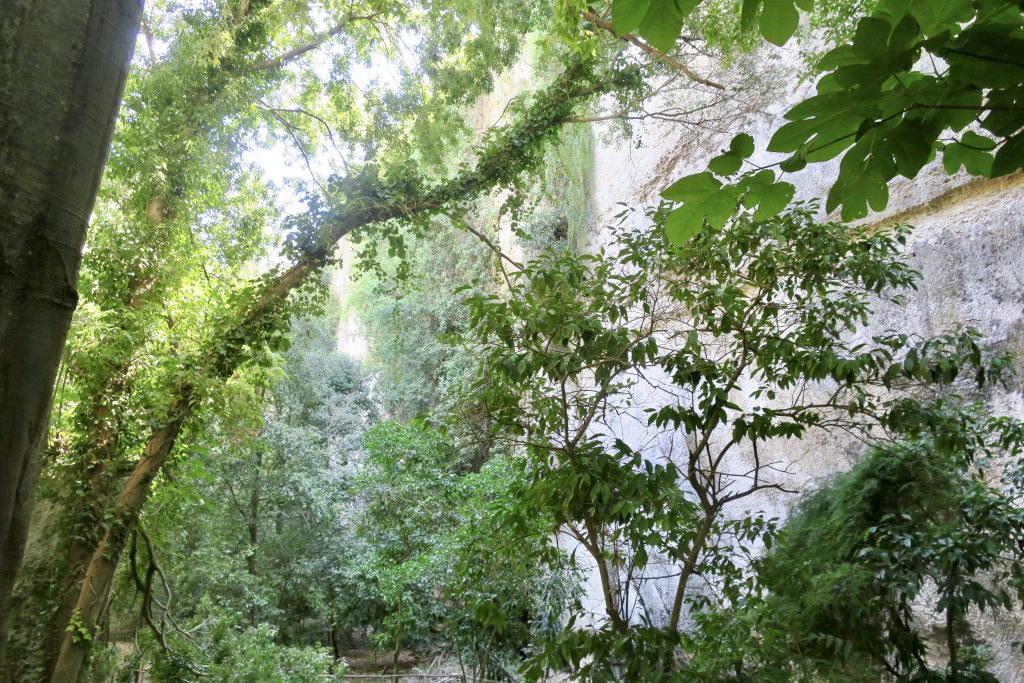
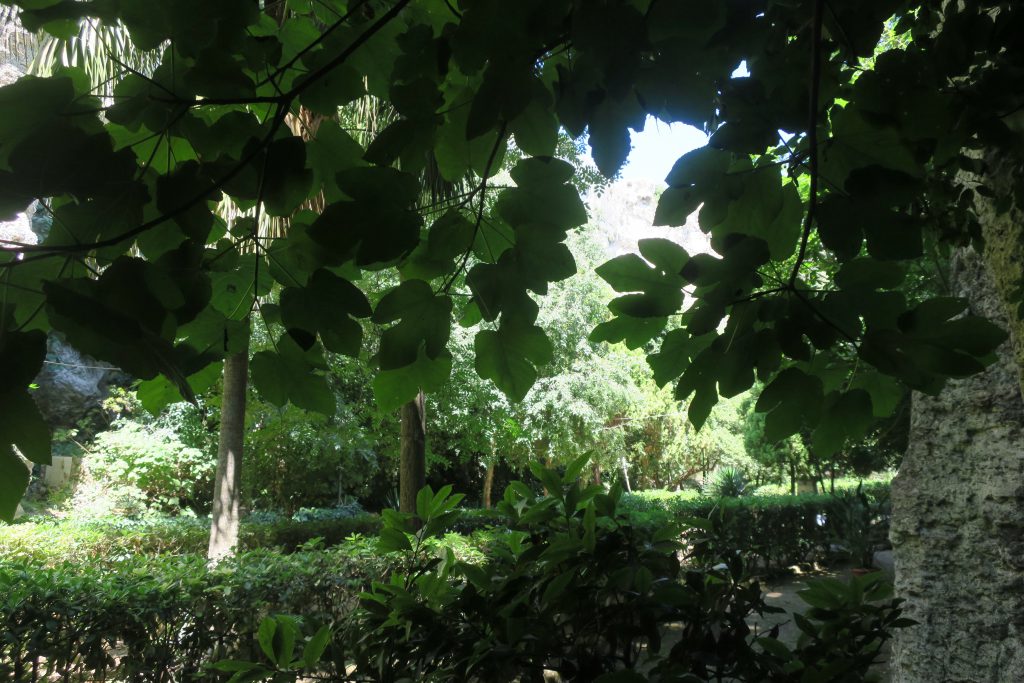
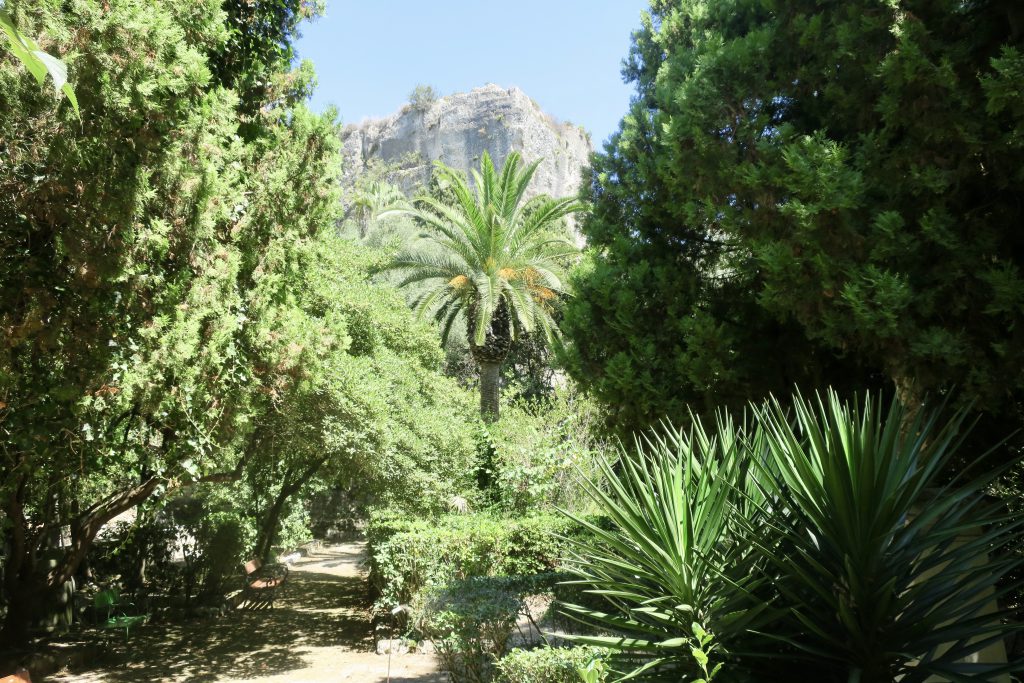
It was the result of many years of leaves falling and decomposing. Over the centuries, in fact, layers of humus covered the rocky floor, transforming the Latomia into a forest of secular plants and trees.
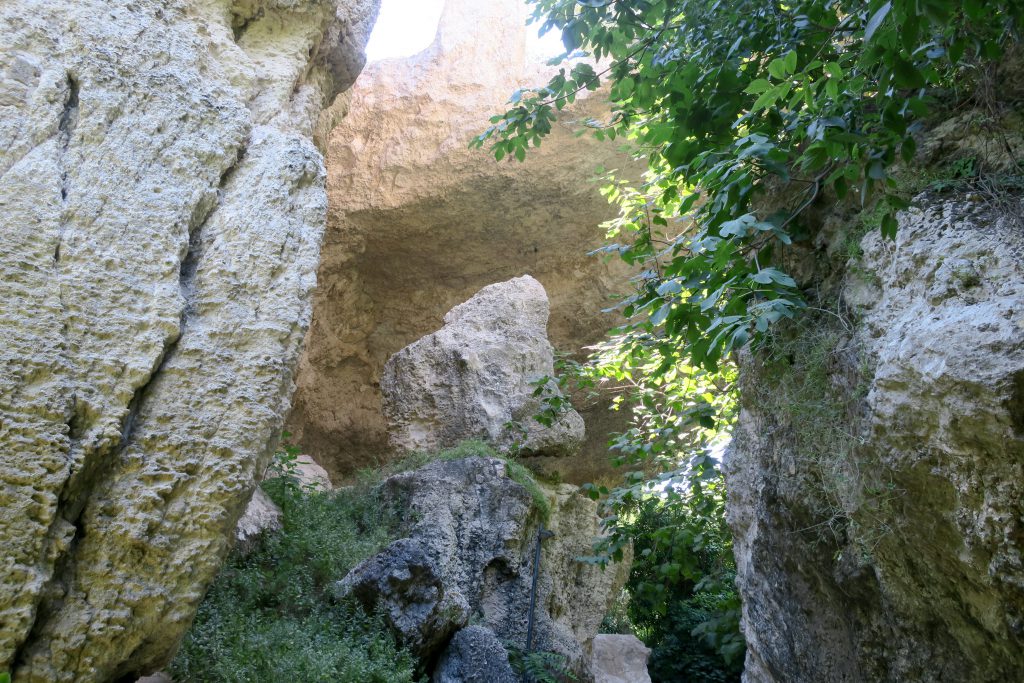
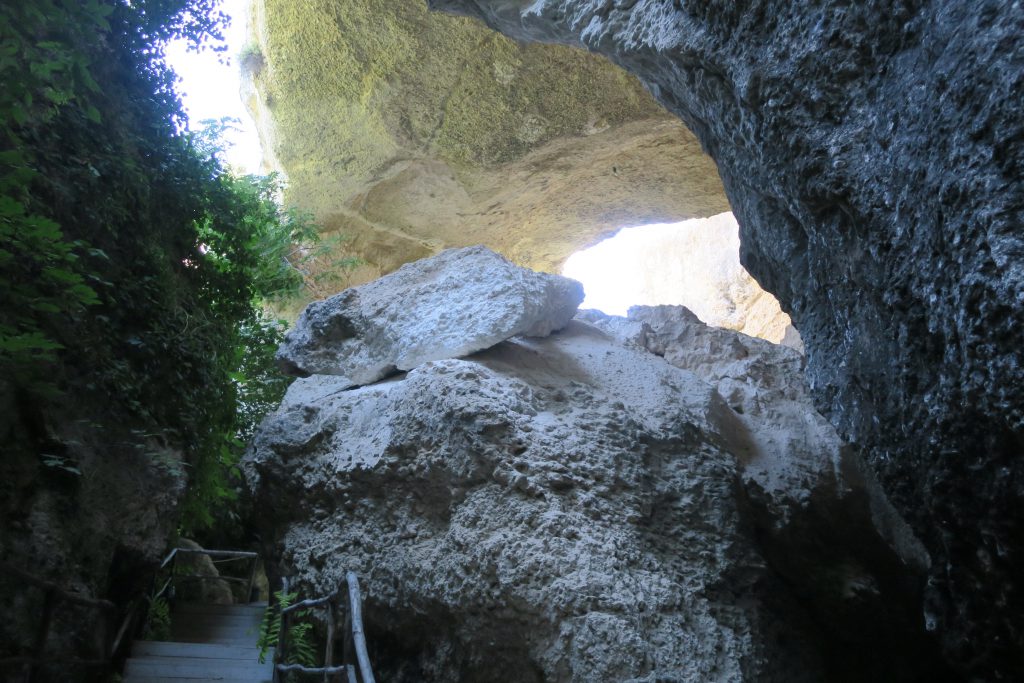
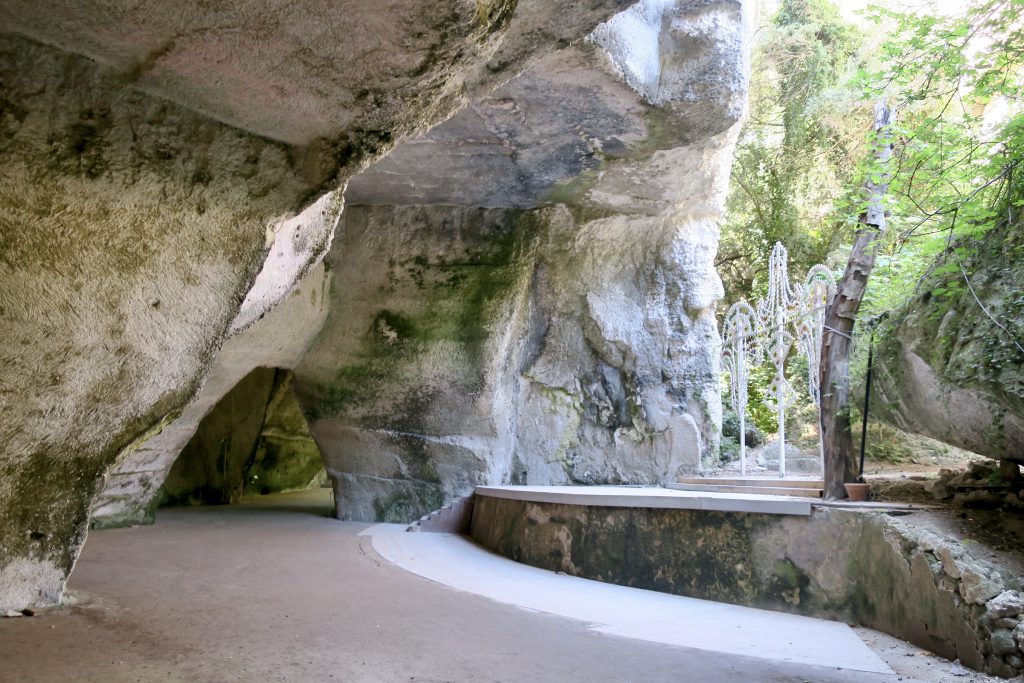
The Little Theatre
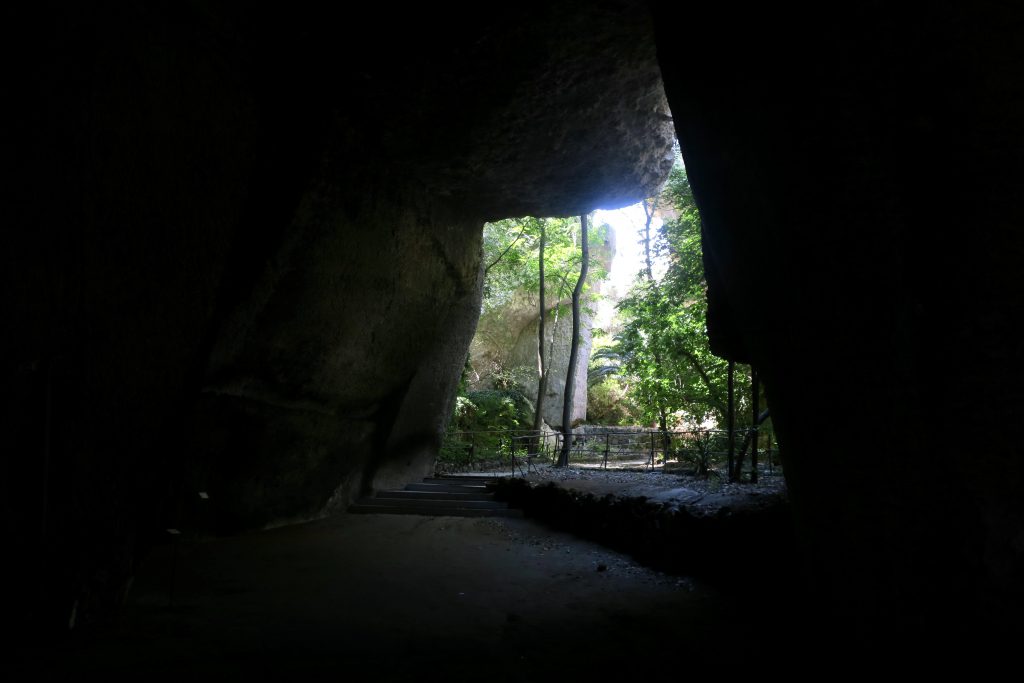
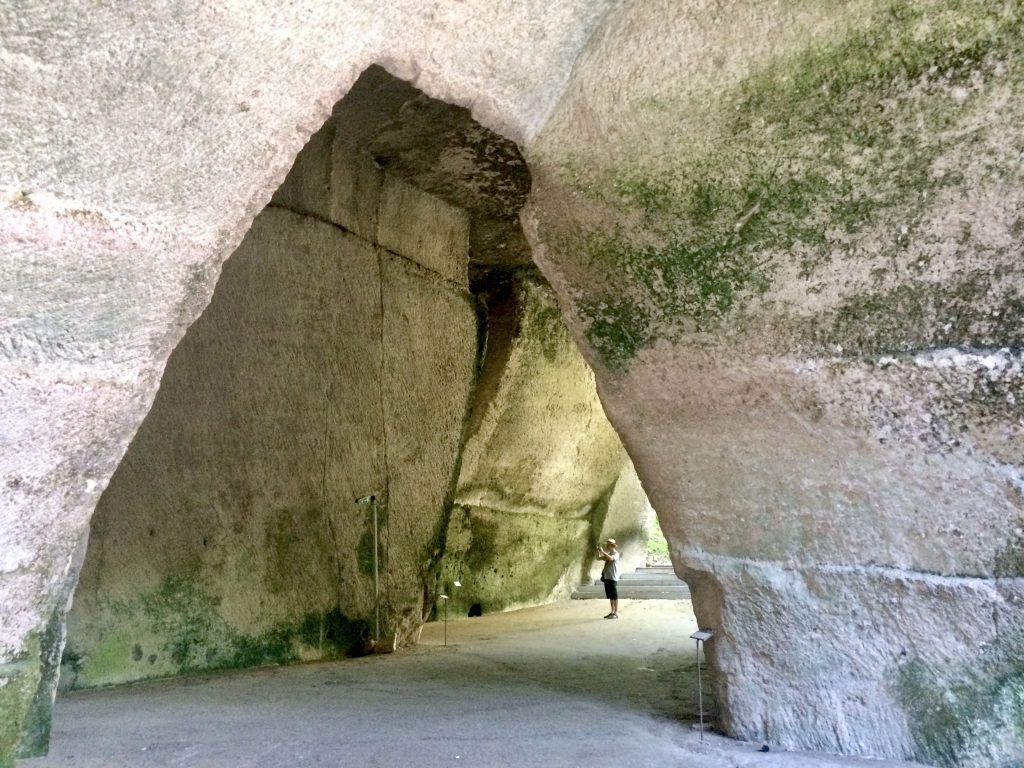
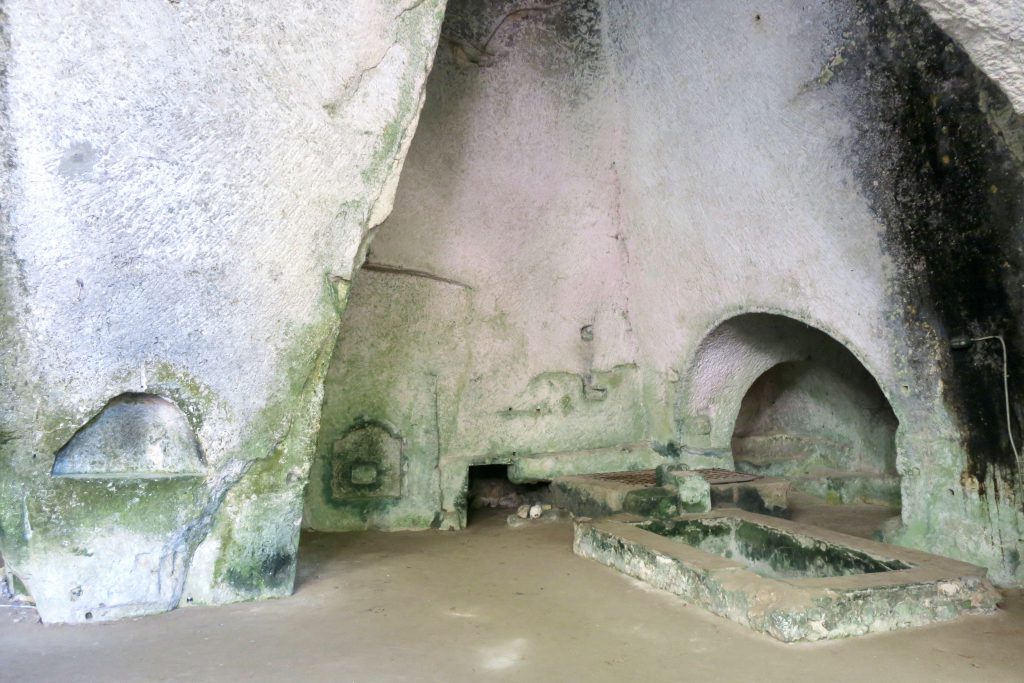
The Capuchin friars, who owned the Latomia from 1582 to 1866, turned the forest into a fruitful field. Walking around the quarry you can also see some Christian burial chambers with ‘Arcosolia Tombs’ (arched niches for sarcophagi) dating back to the 4th-6th century.
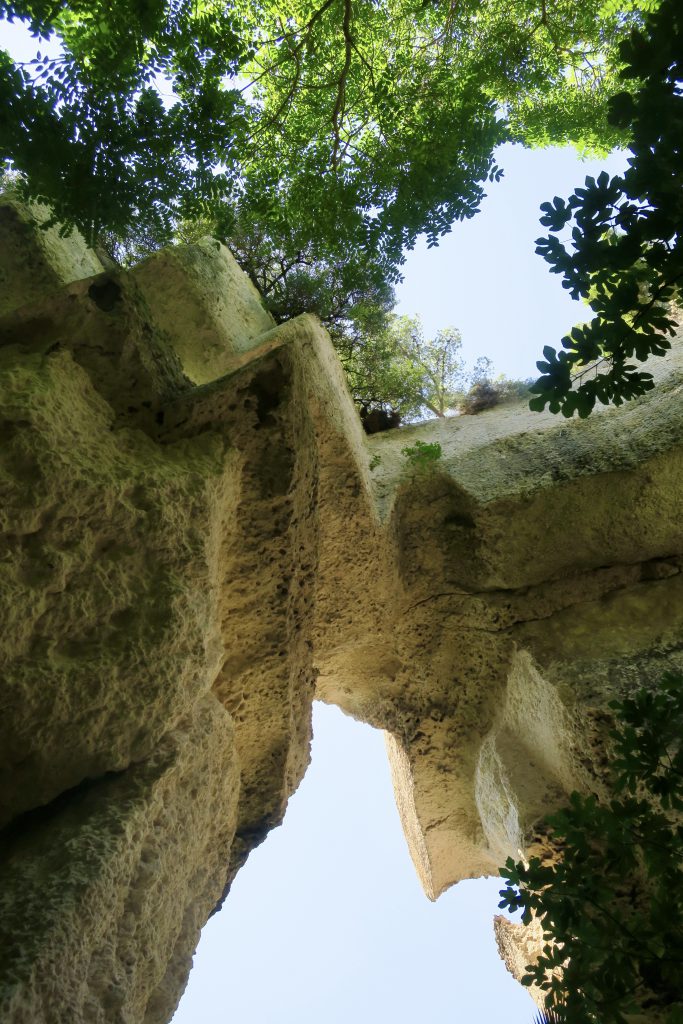
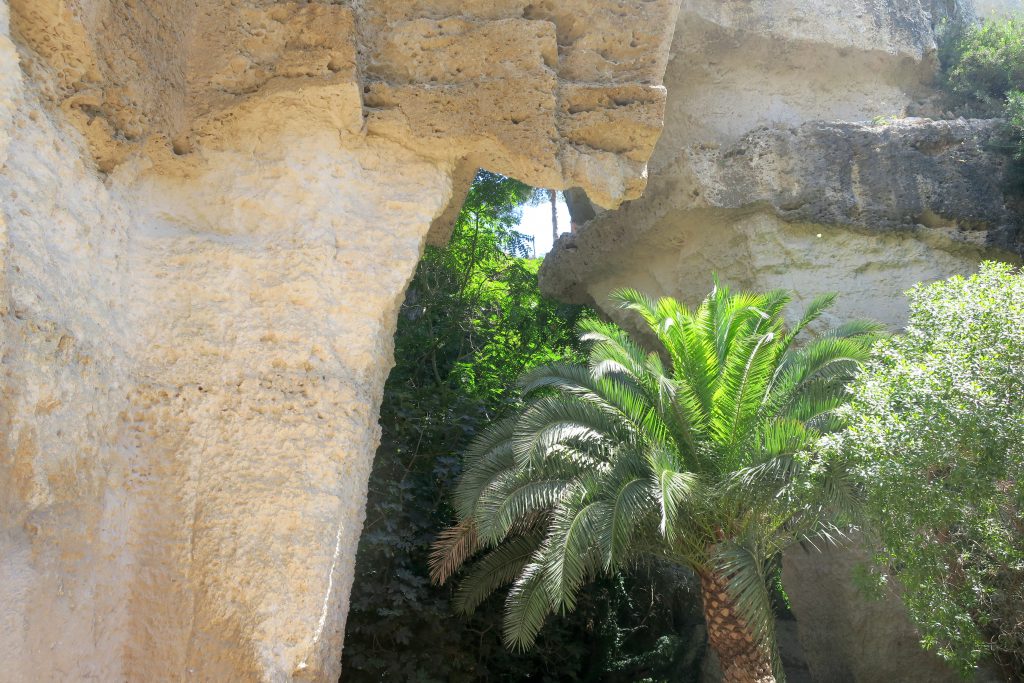
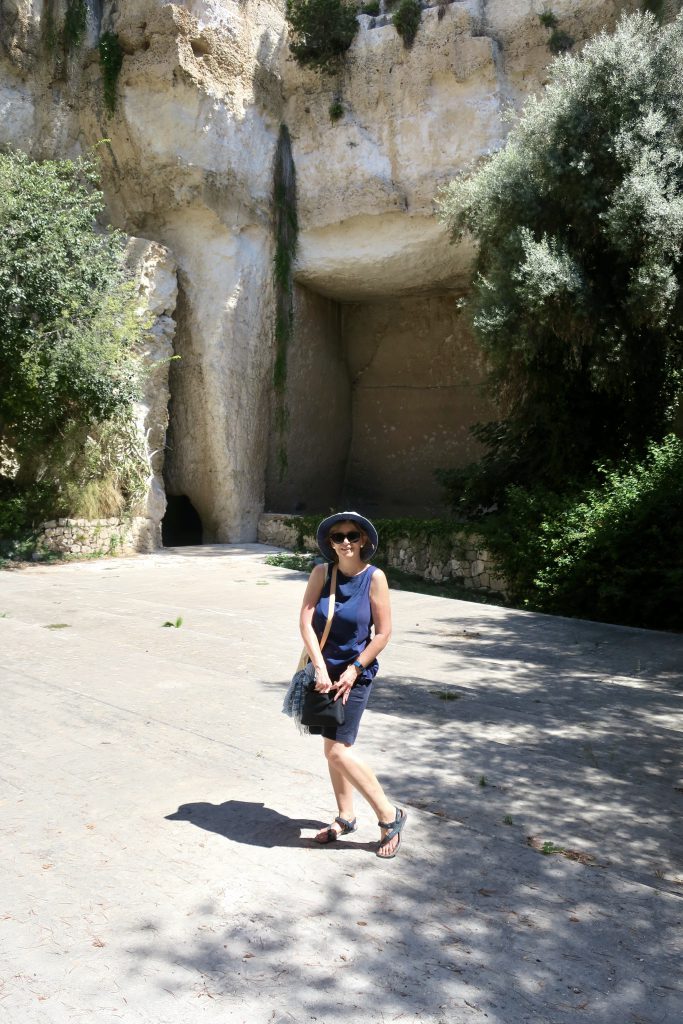
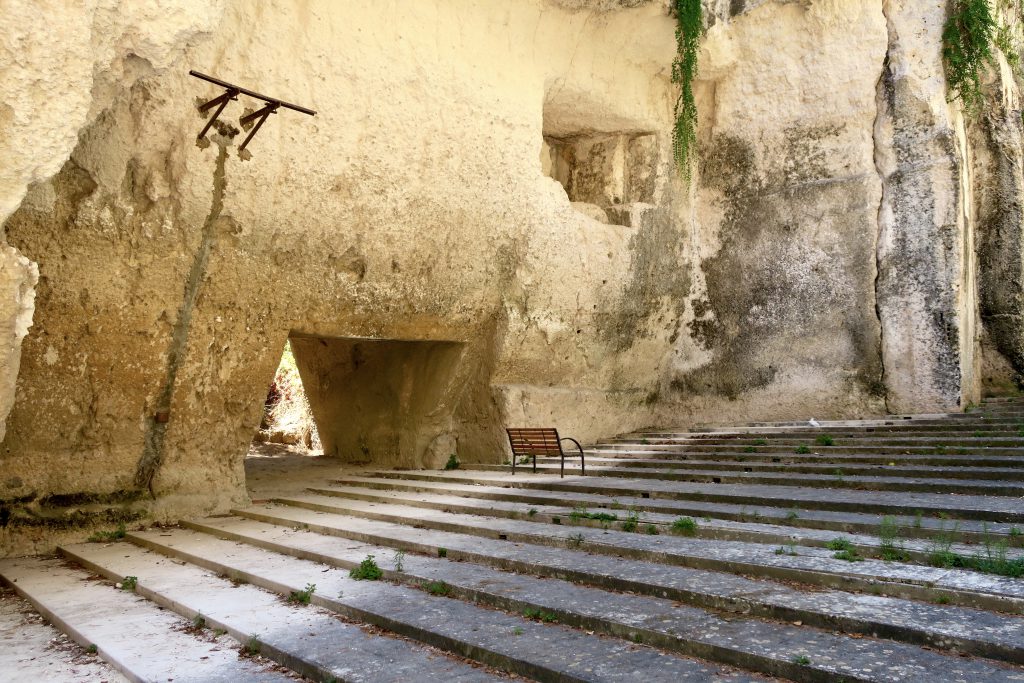
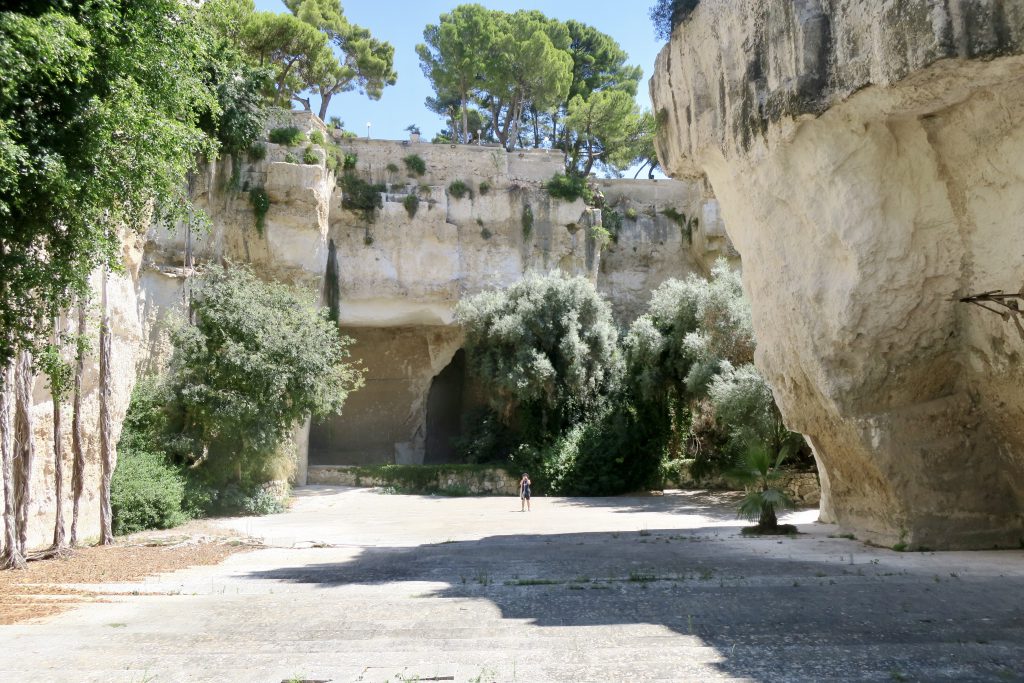
The Big Theatre
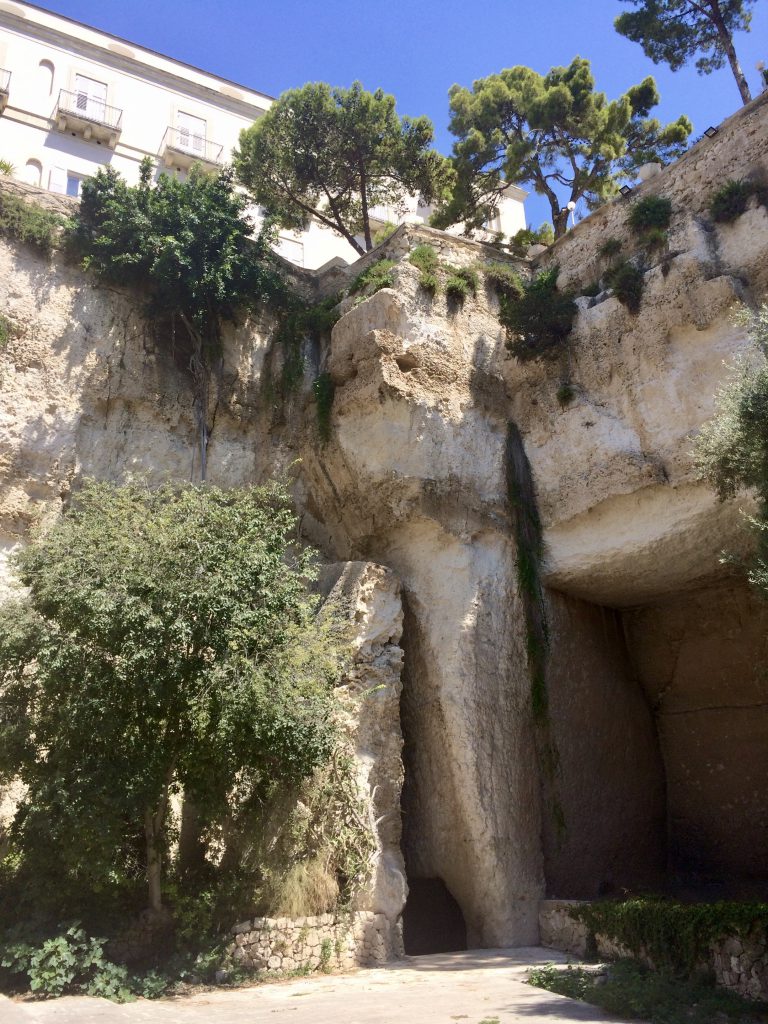
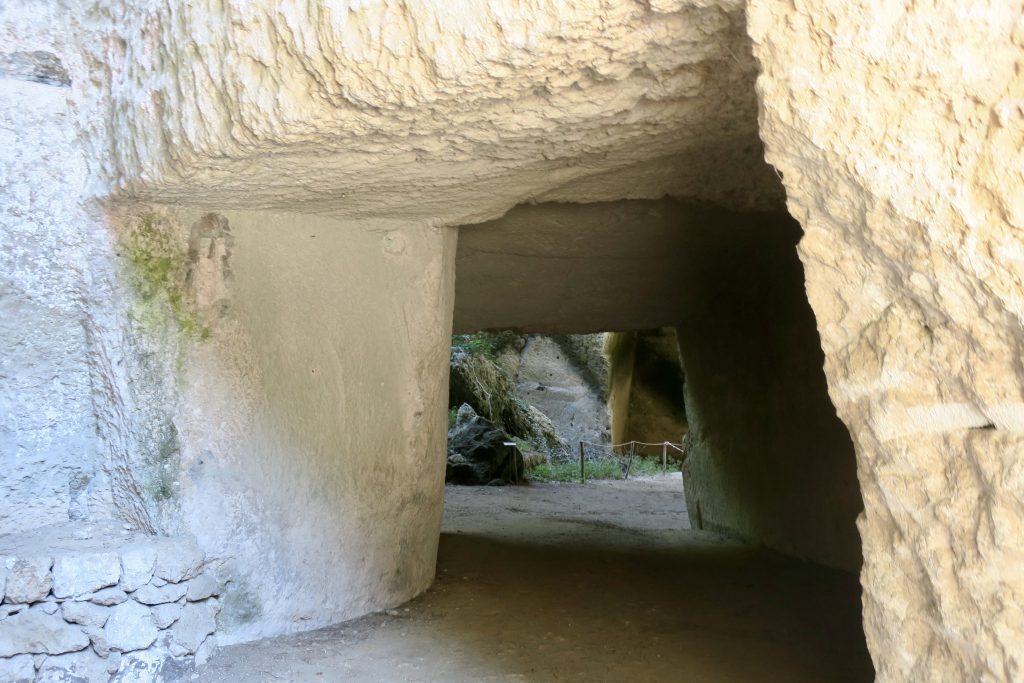
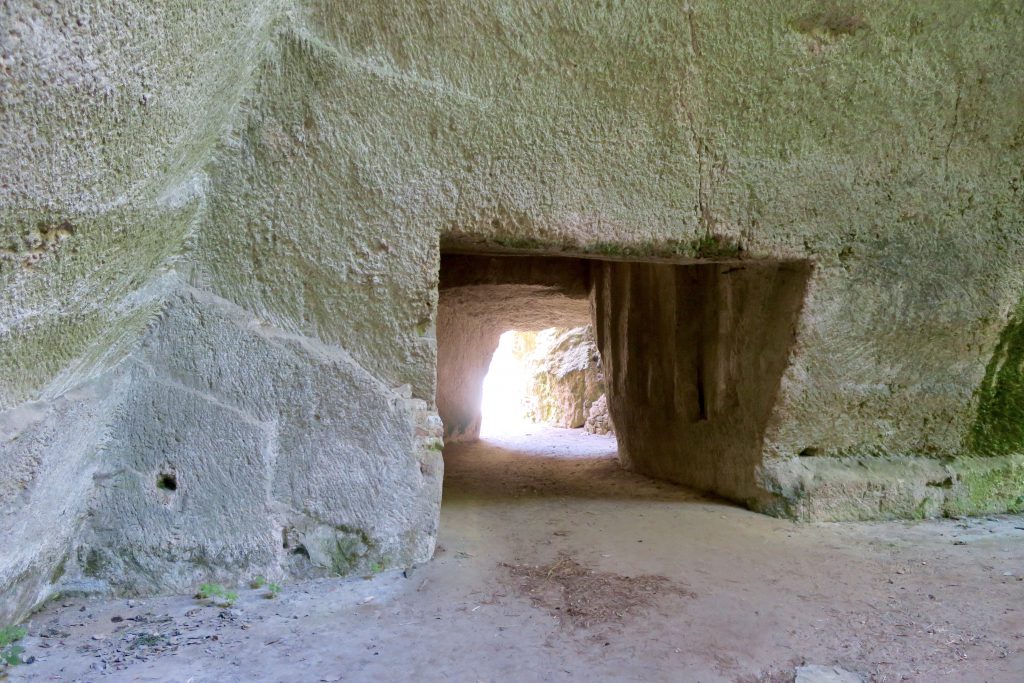
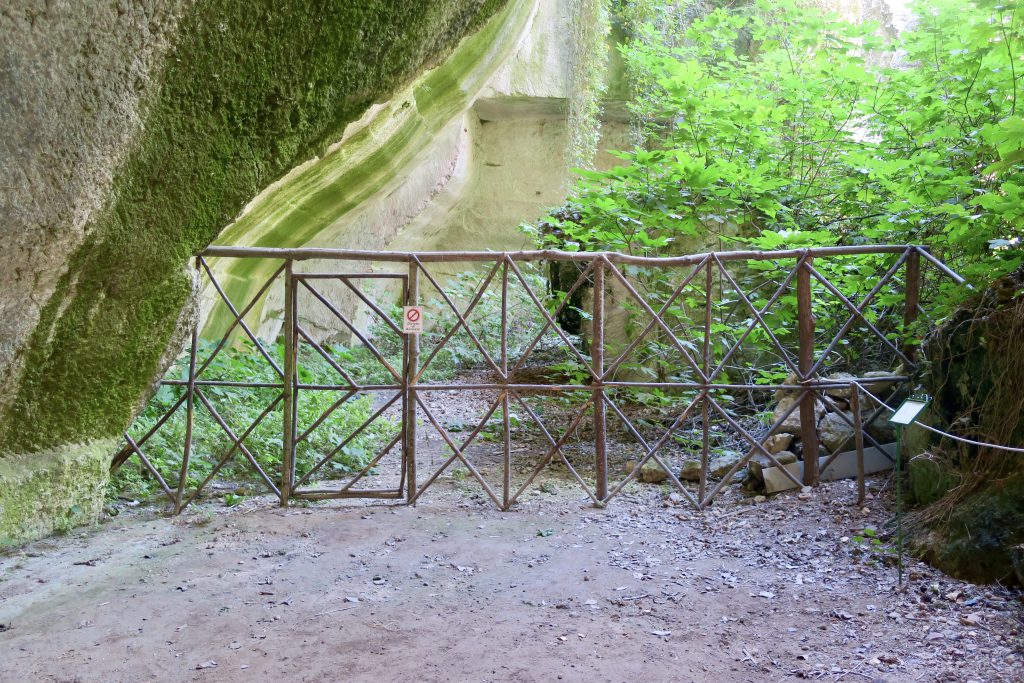
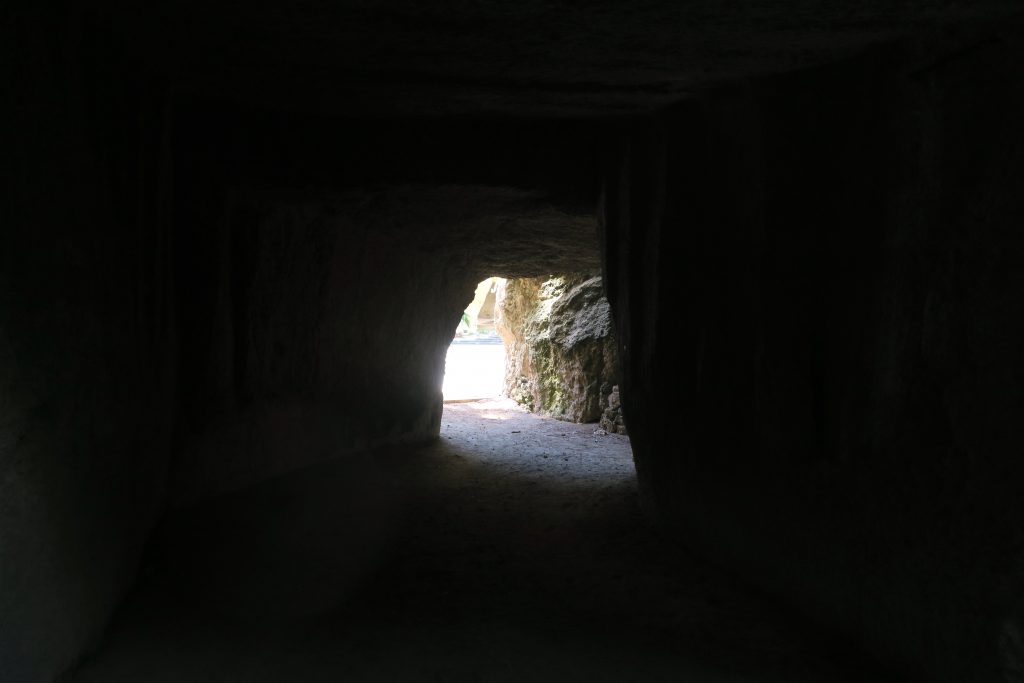
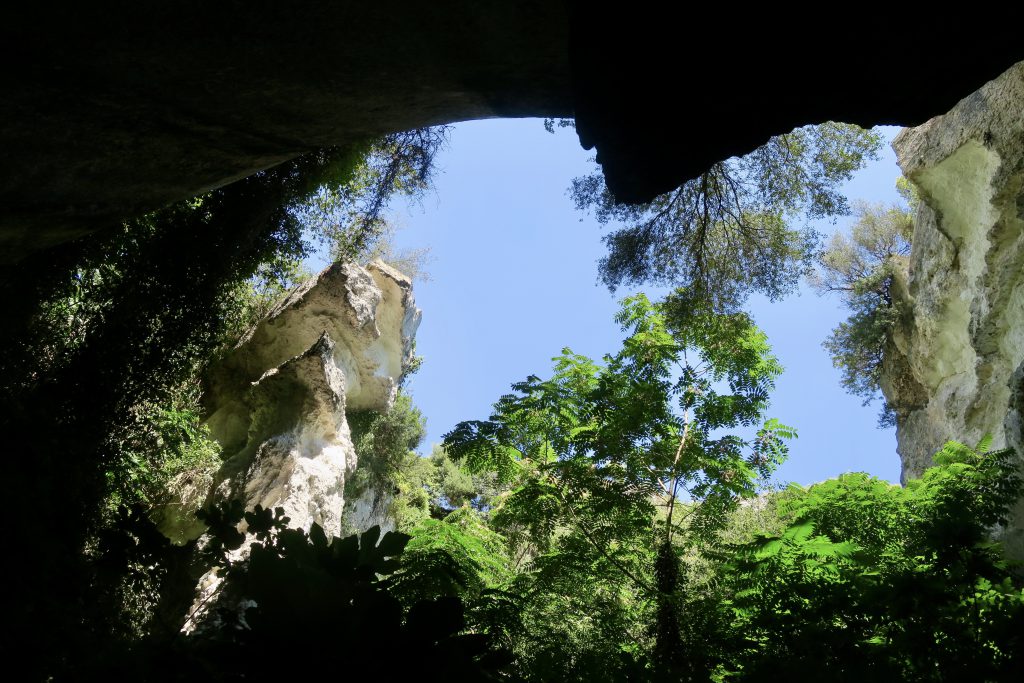
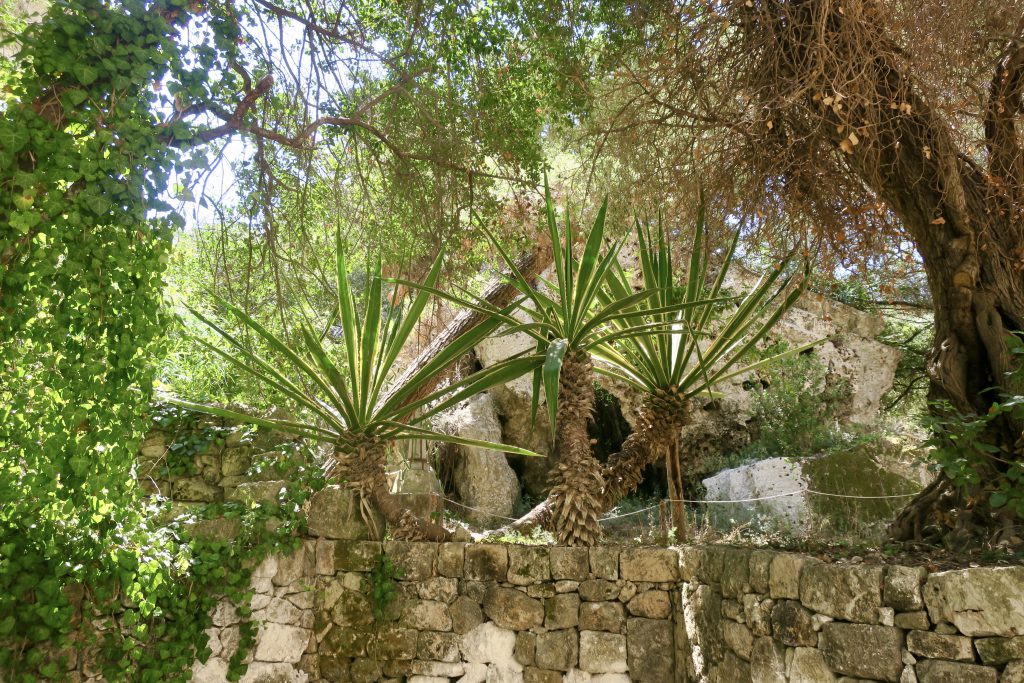
A sunken garden, ideal venue for a midsummer daydream.
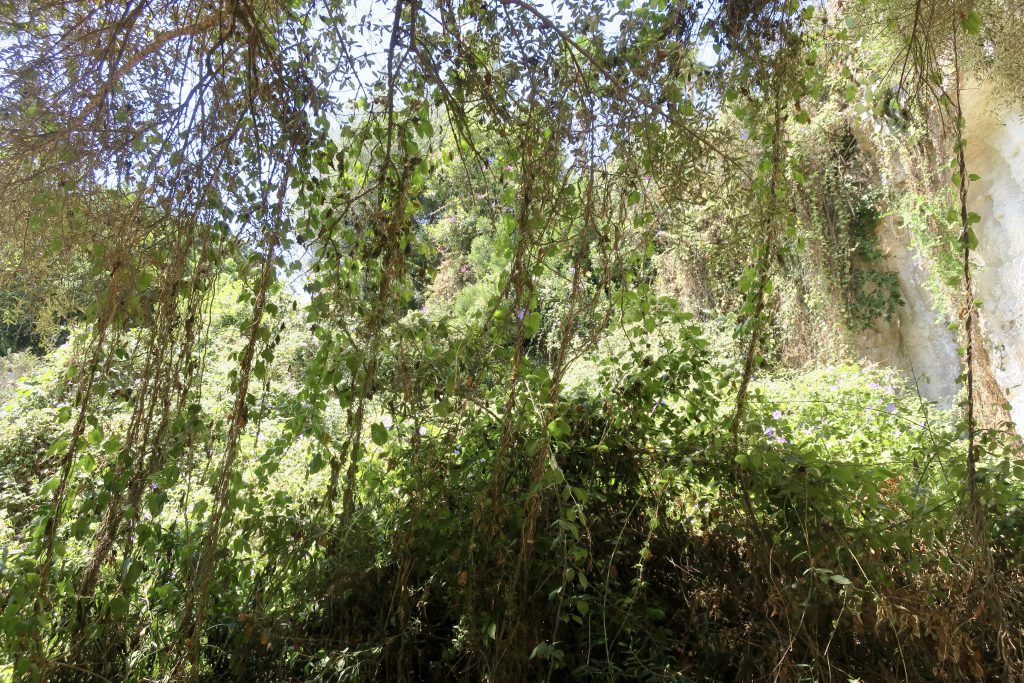
An underground allotment, rich in vitamins and minerals.
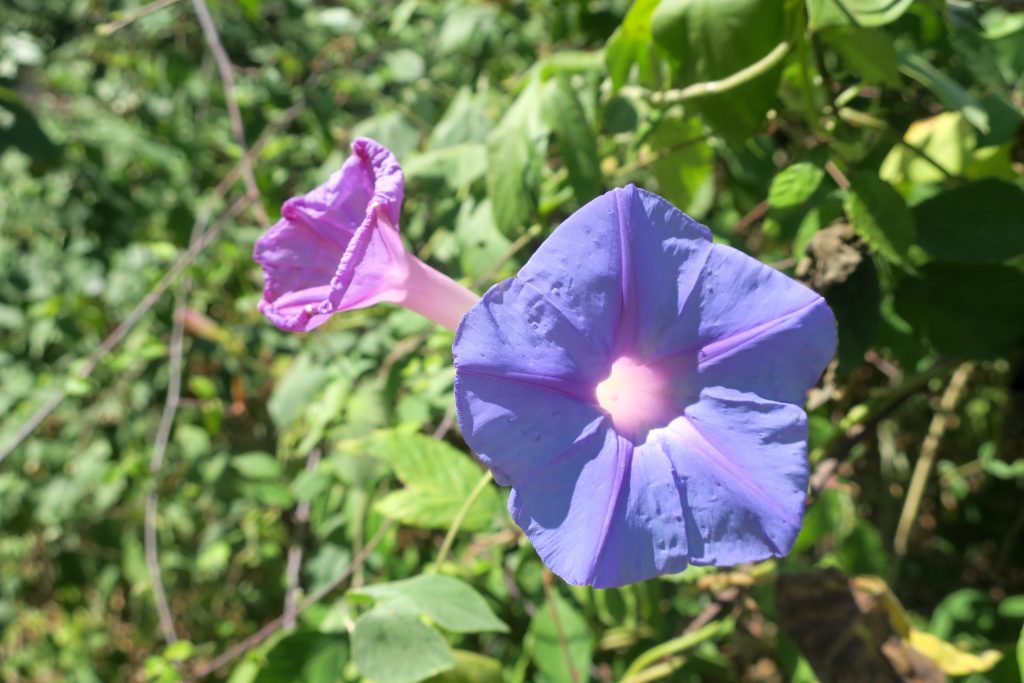
A glorious morning, perfect for forest bathing.
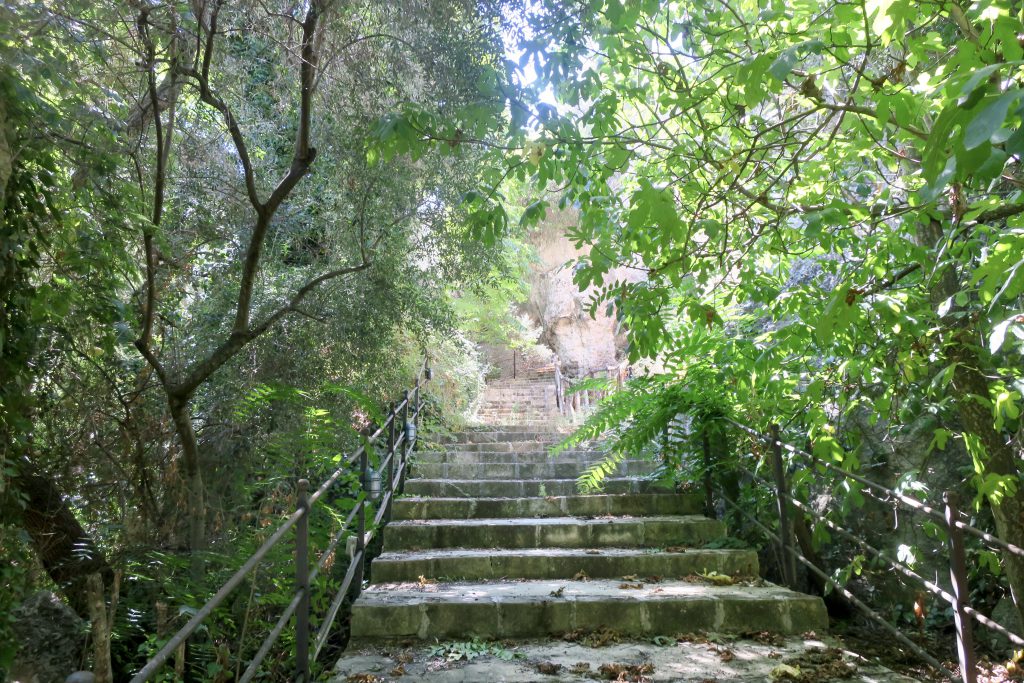
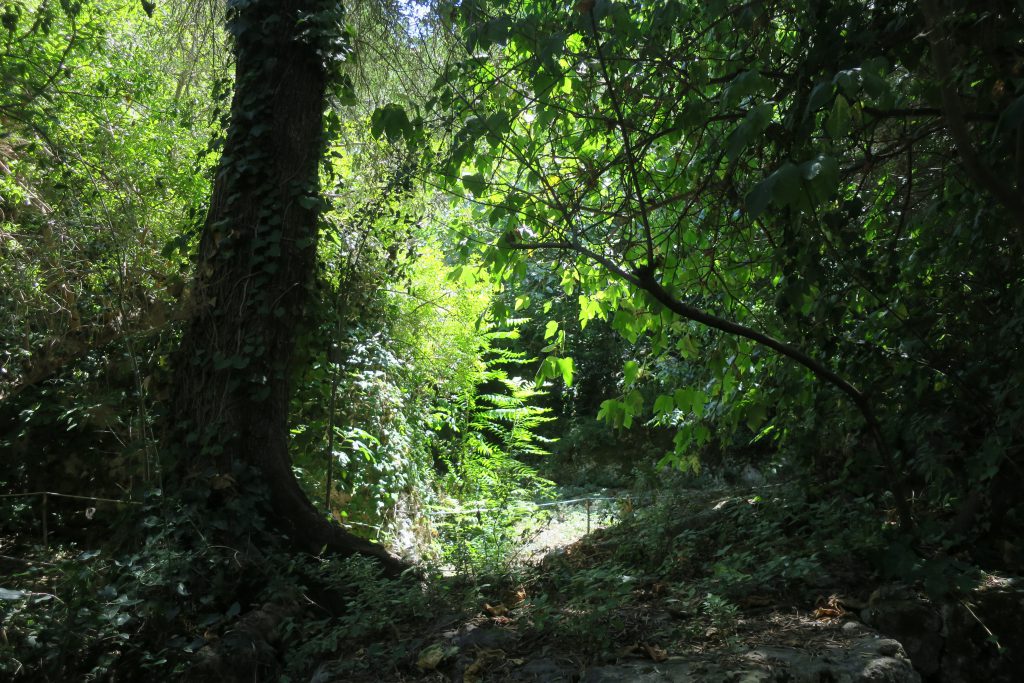
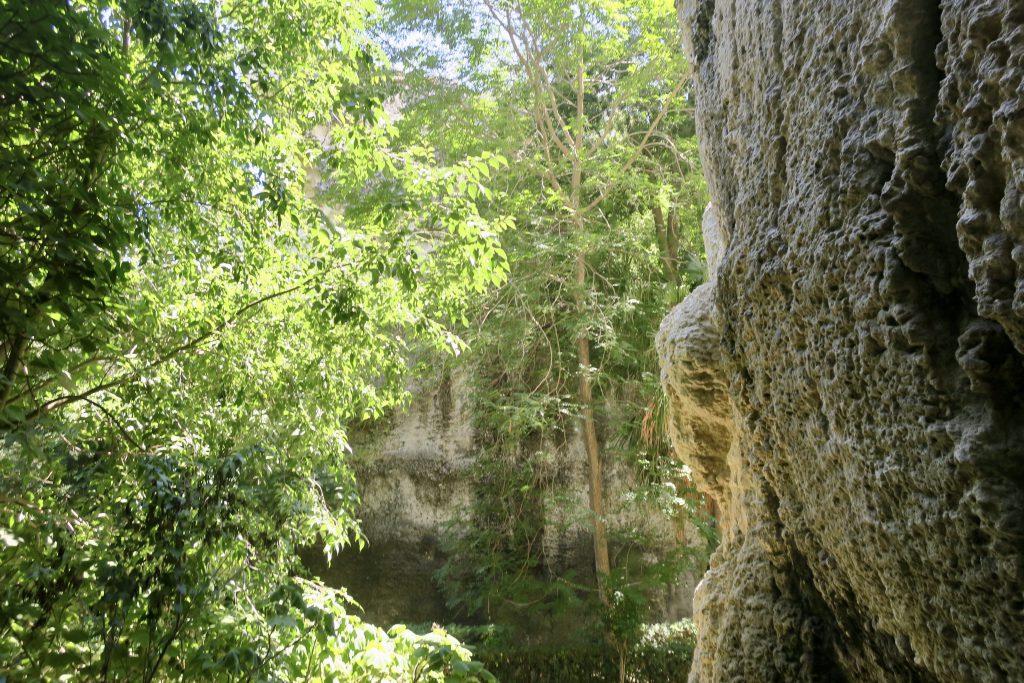
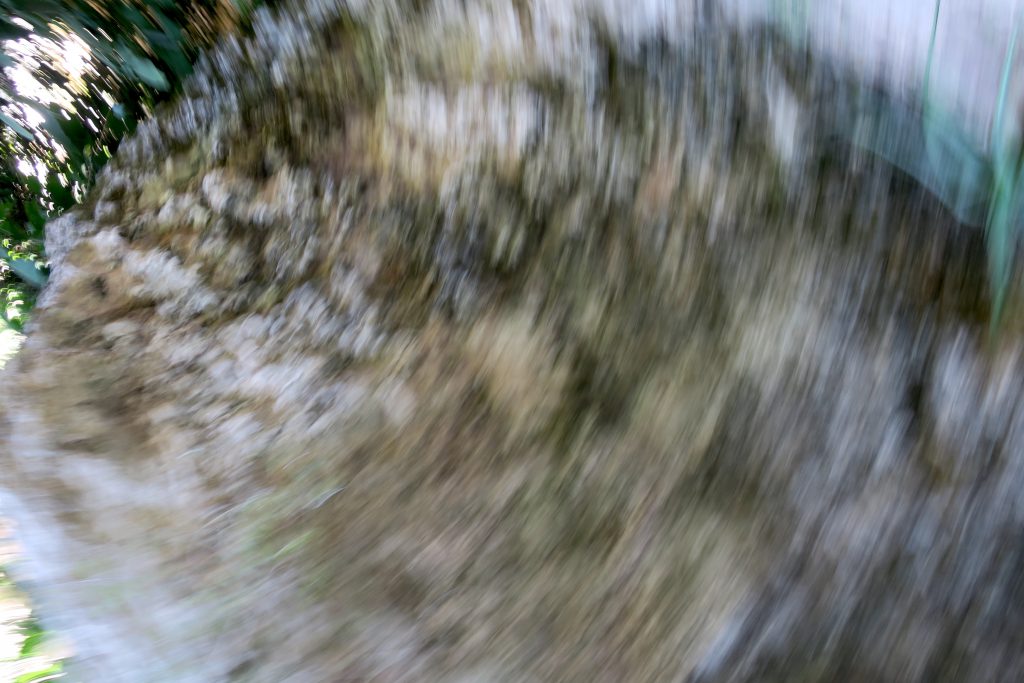
Then a slip and a spin and I’m whizzing around like old Archimedes.
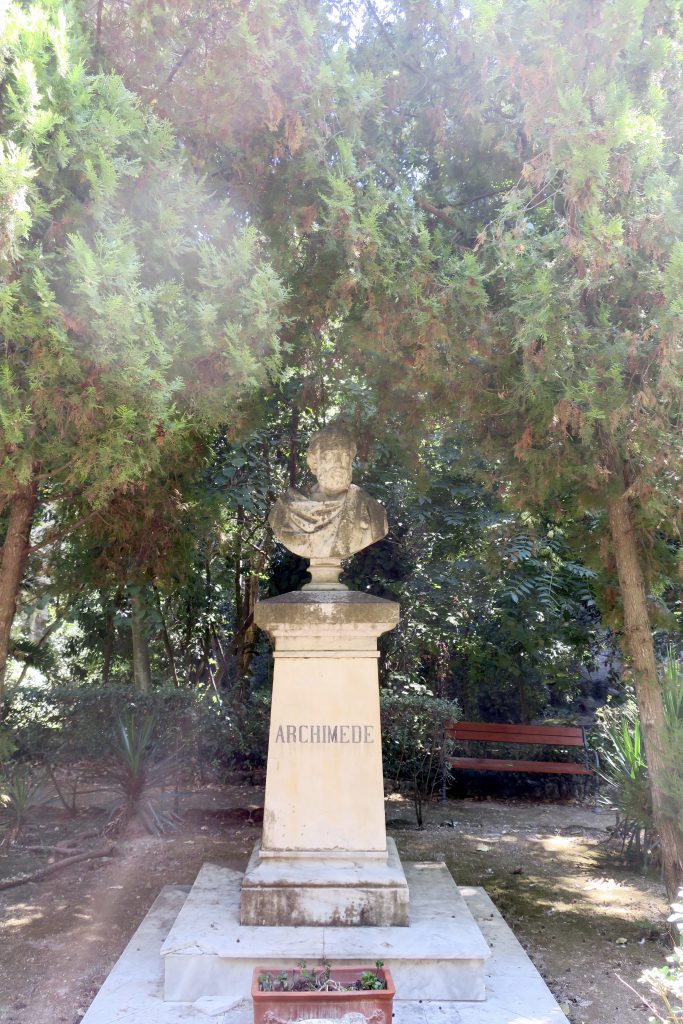
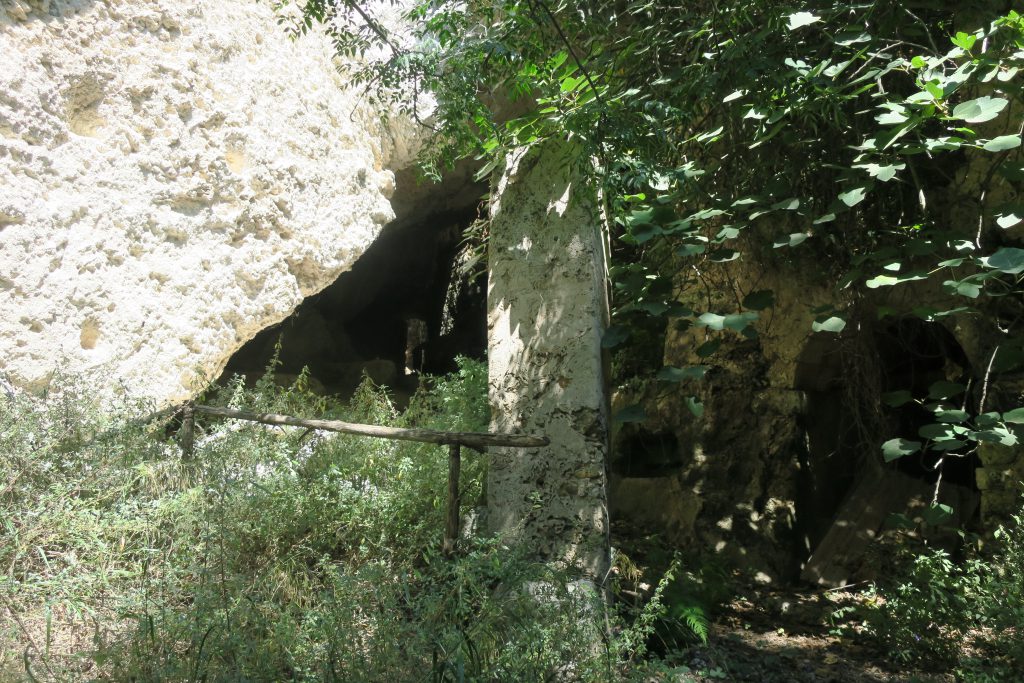
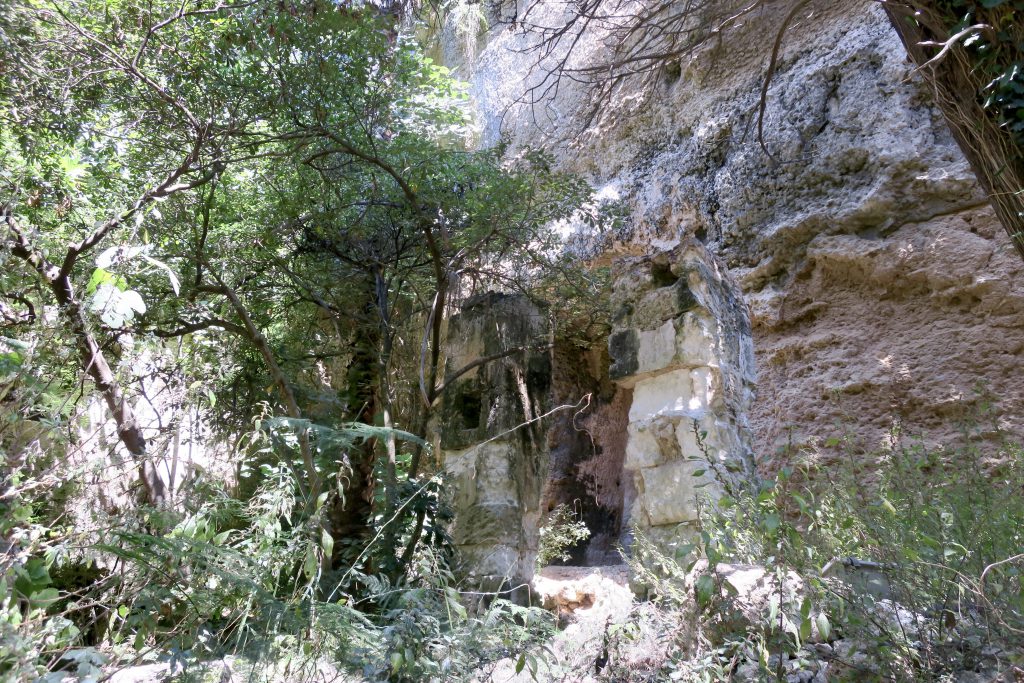
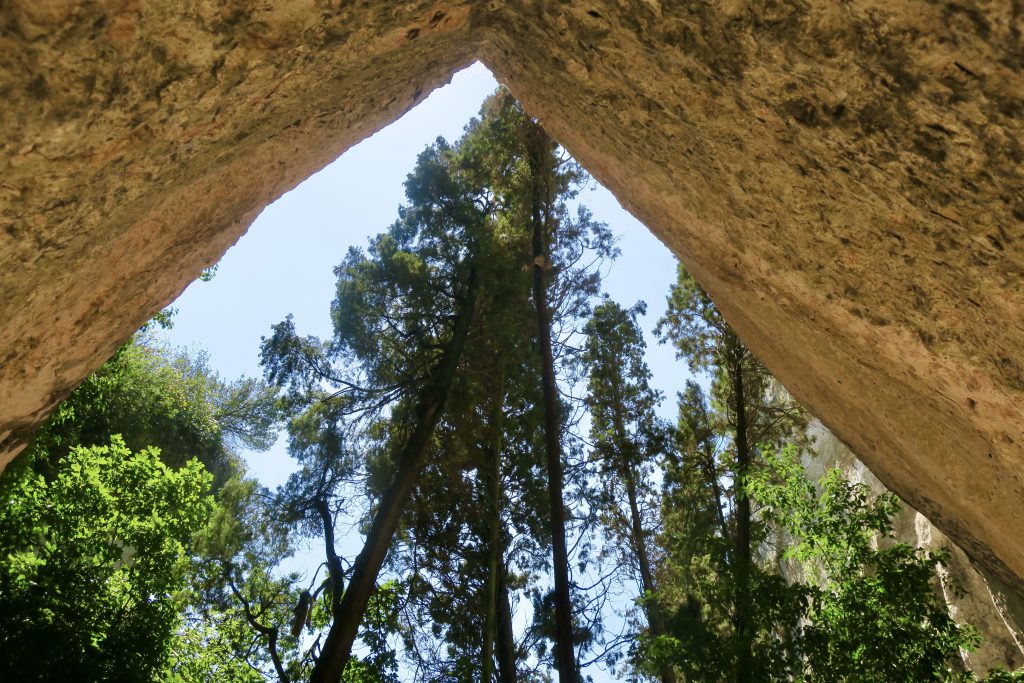
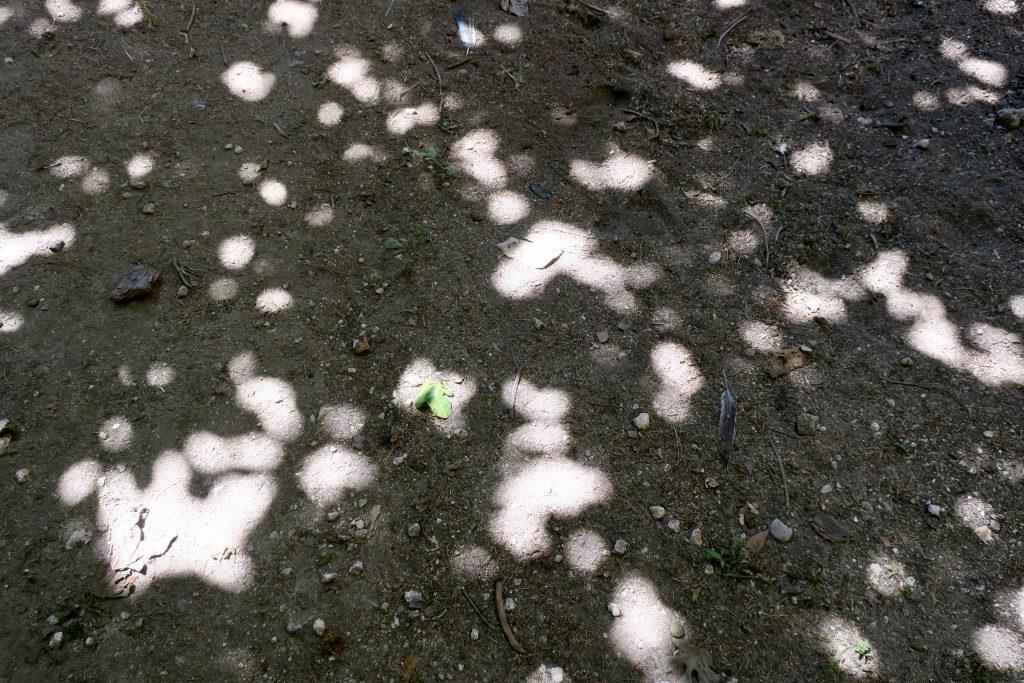
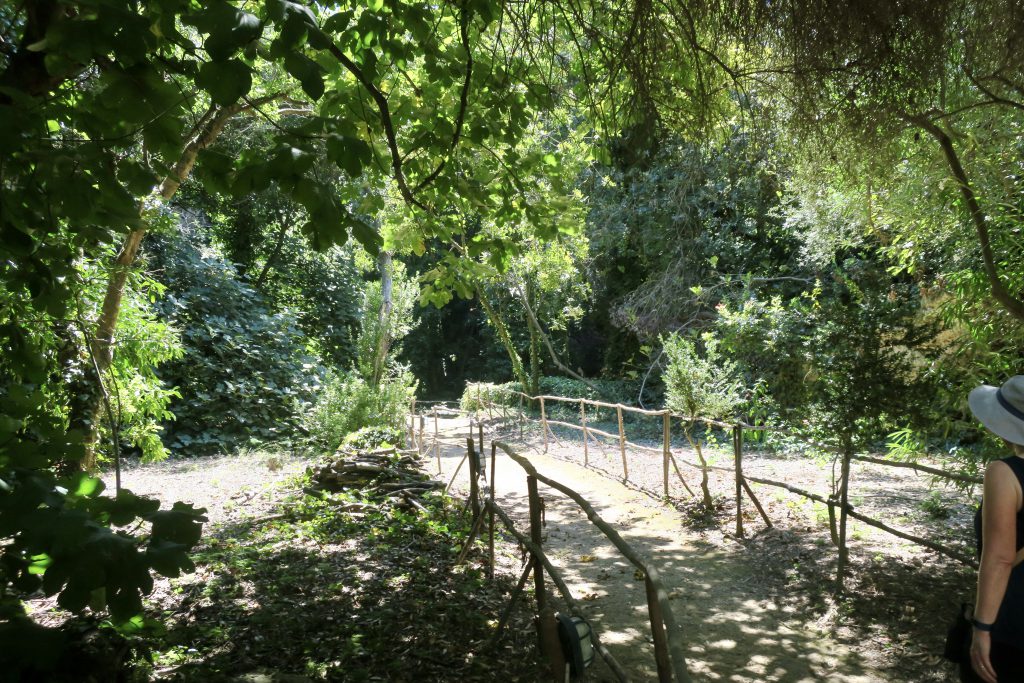
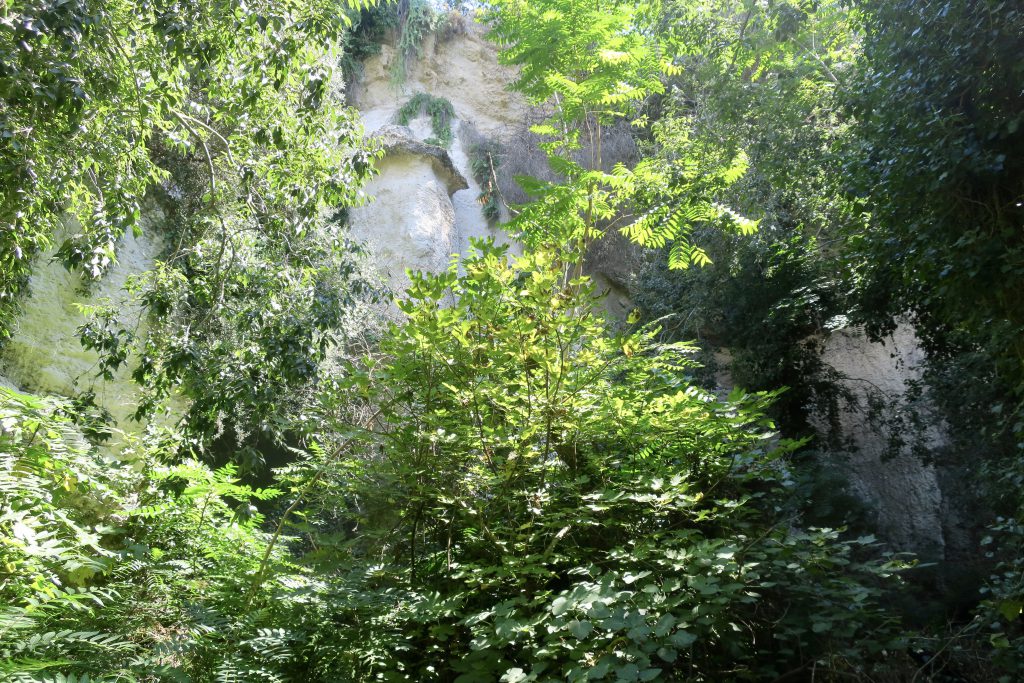
More womb than tomb, more quick bright trances, where fond fresh leaves and reaching branches catch the light in green and fruitful dappled dances.
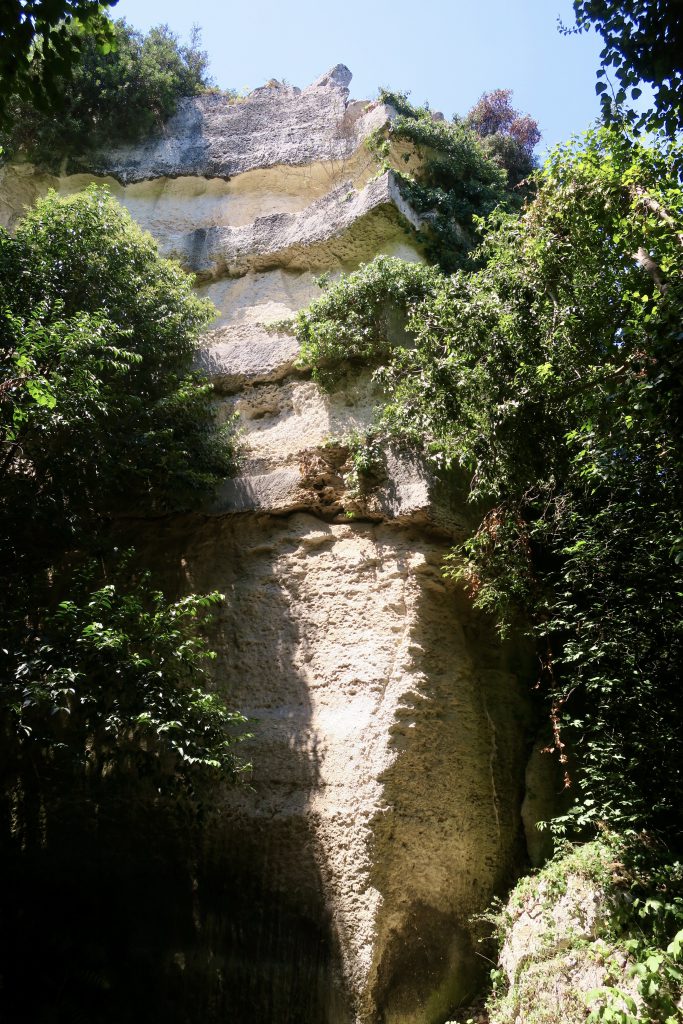
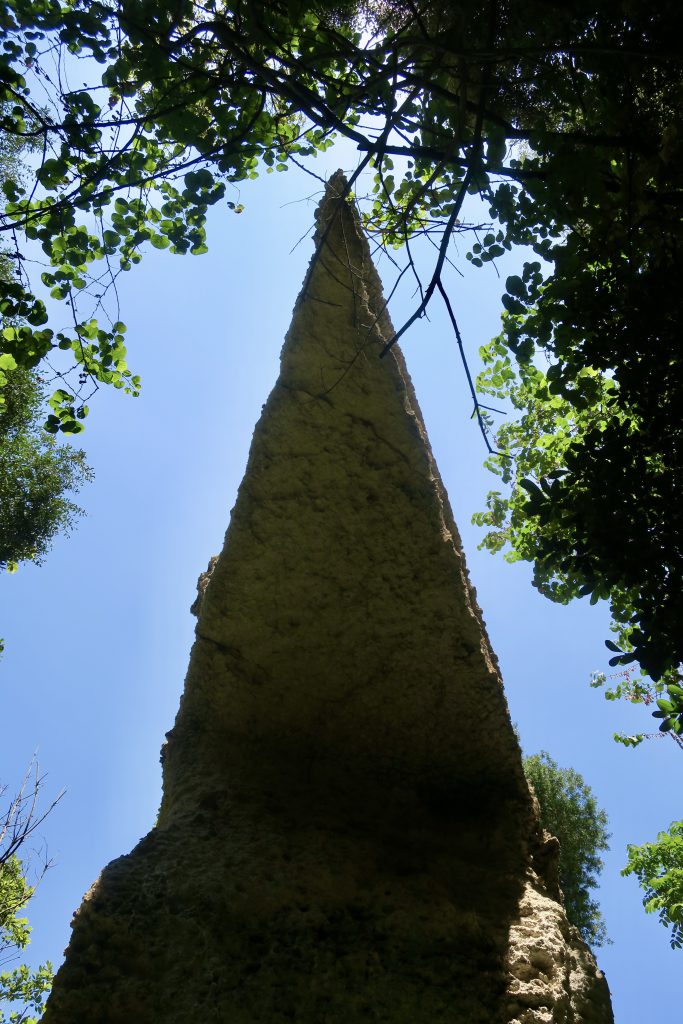
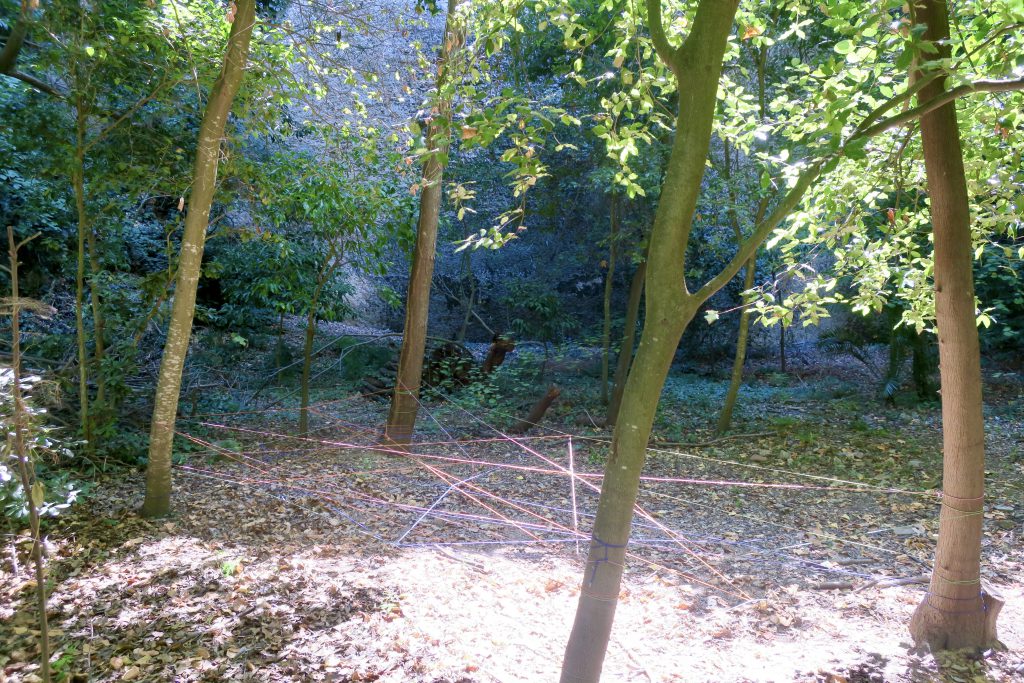
Trees tied in a cat’s cradle square dance, French skipping a light fandango, switch and shift in the blink of an eye, they trip you up and you kiss the sky.
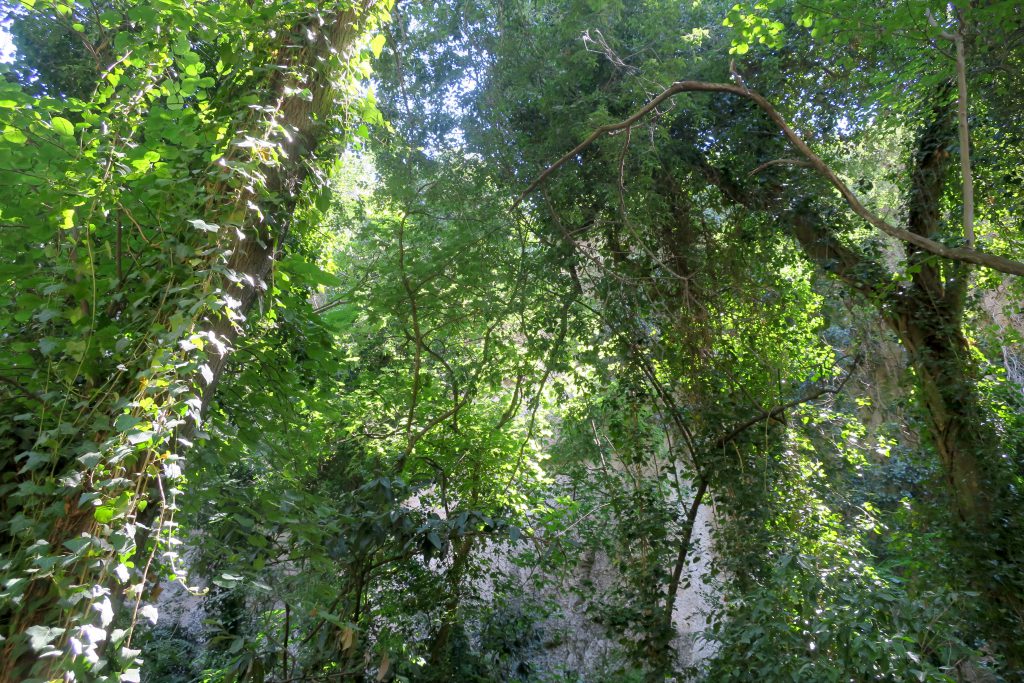
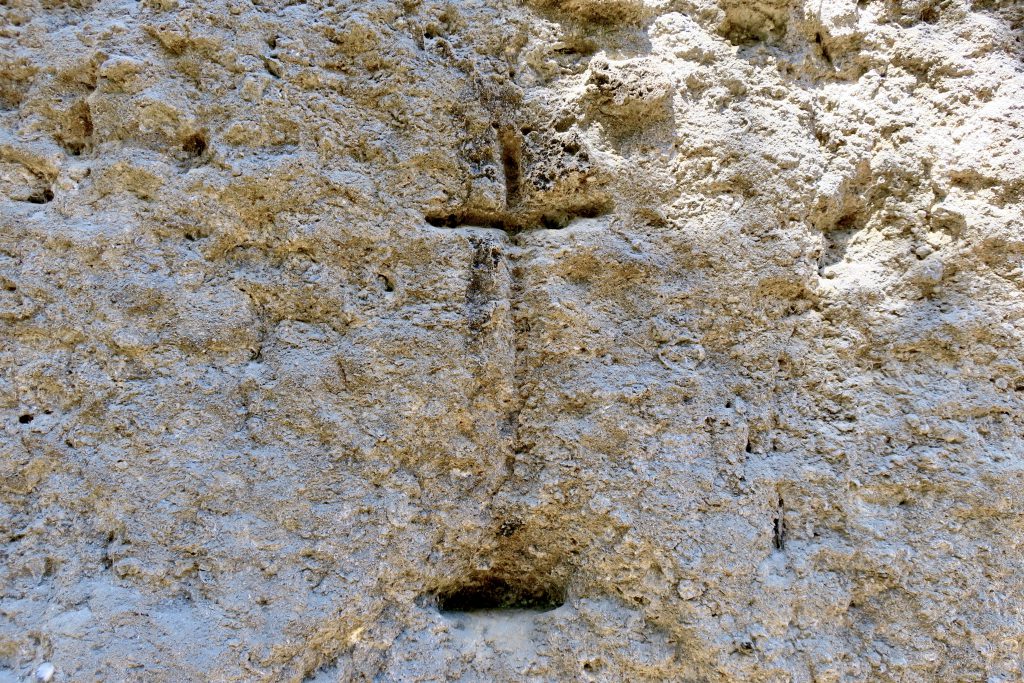
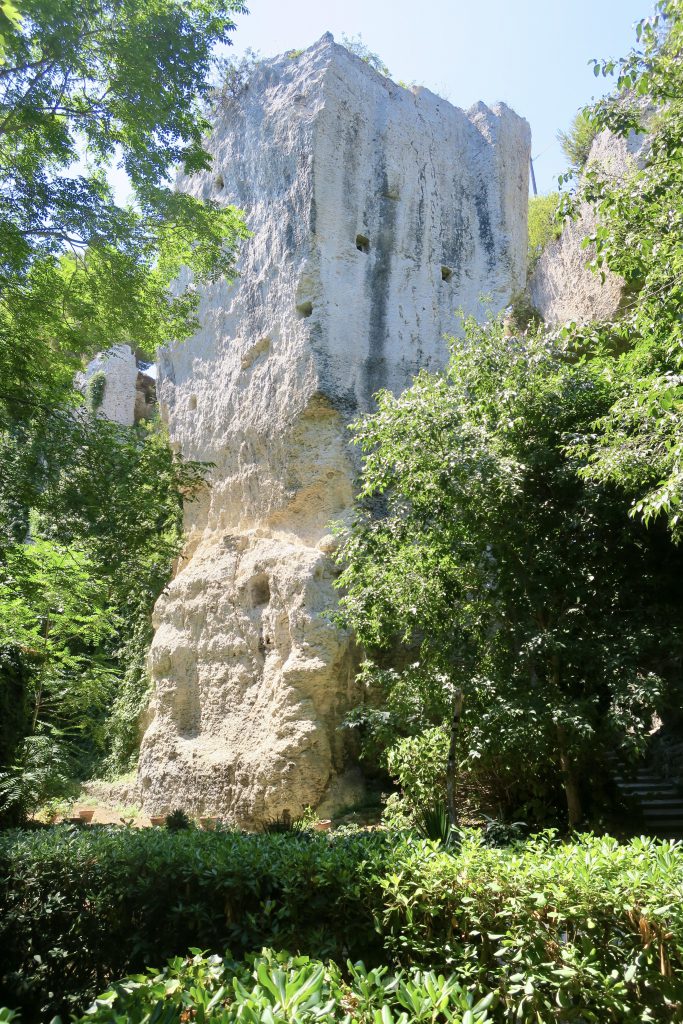
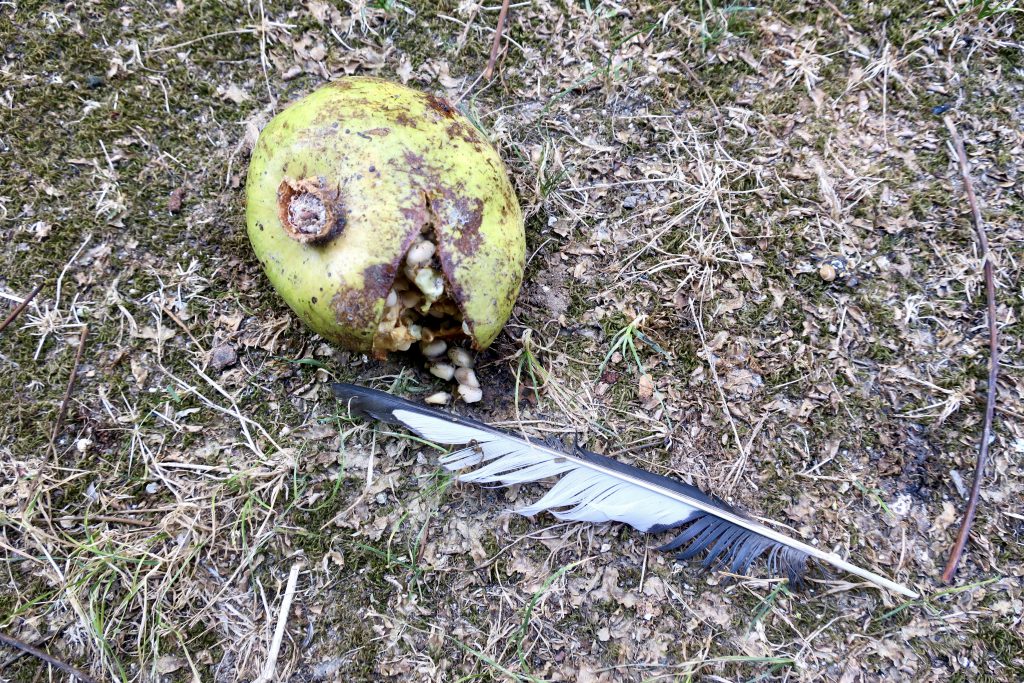
Pomegranate and feather
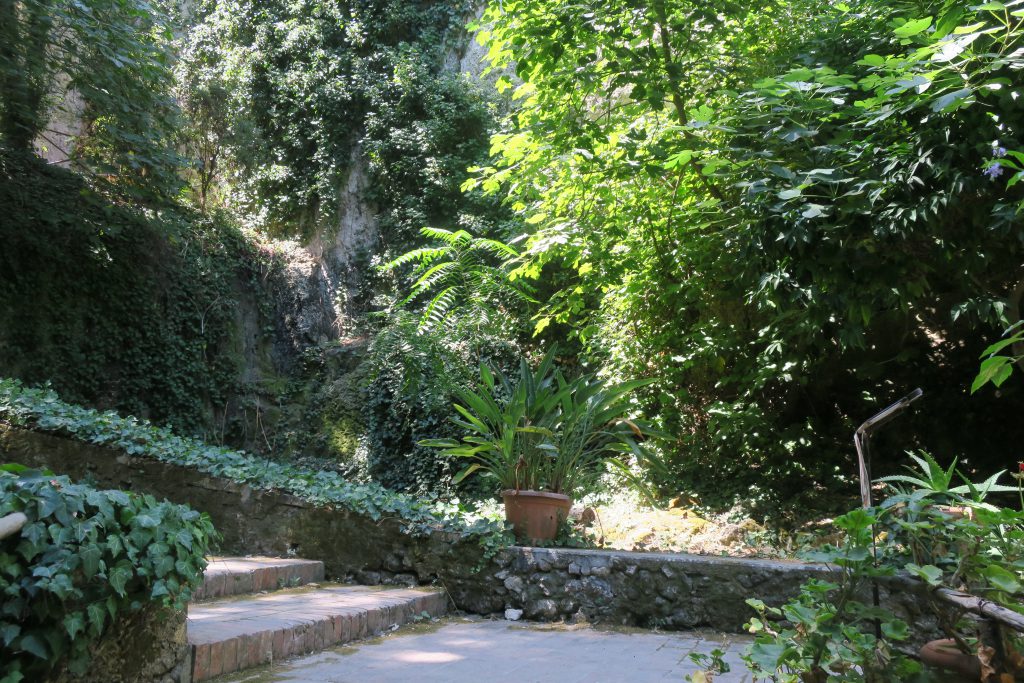
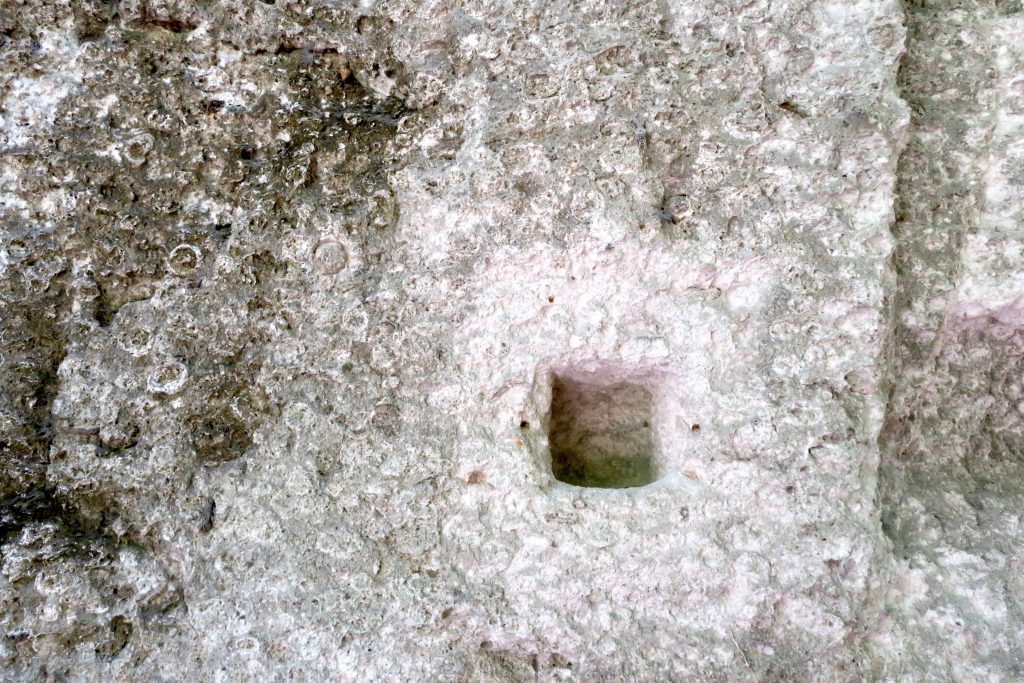
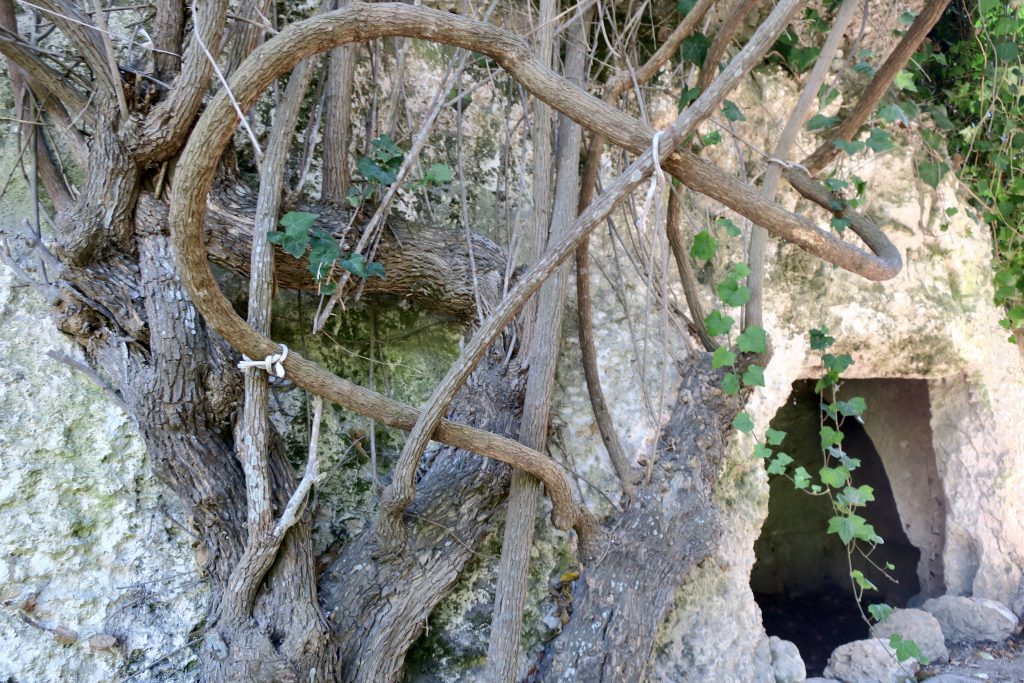
So then we left the Latomia and headed for San Giovanni, but not as the crow flies. We came by a roundabout route, avoiding the obvious streets. I guess we must have been lost. It was a good way to go. Off the beaten track.
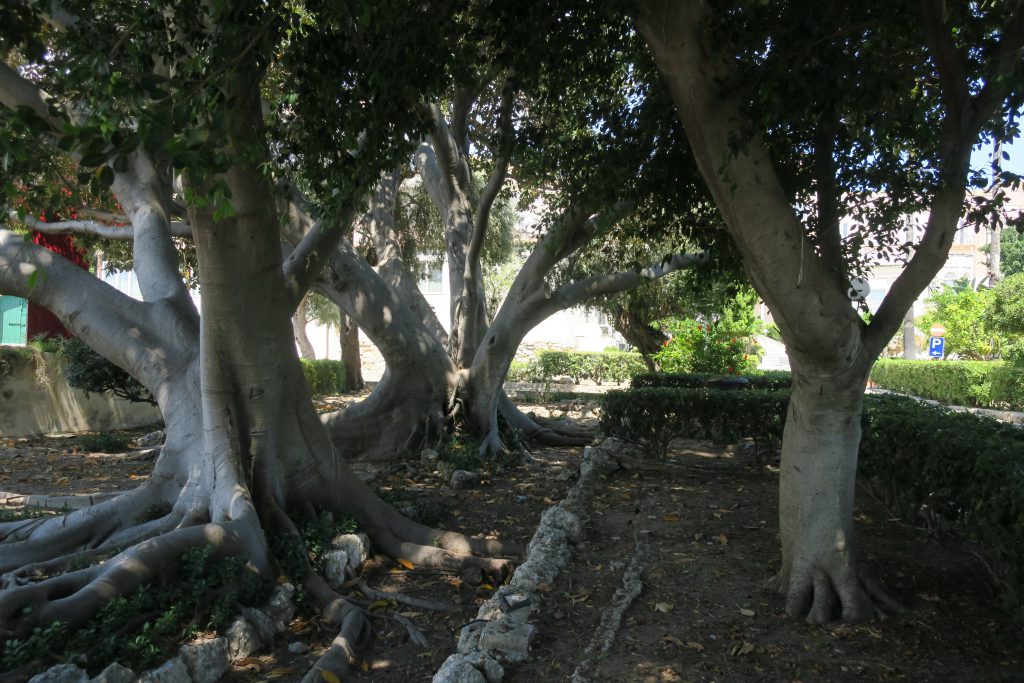

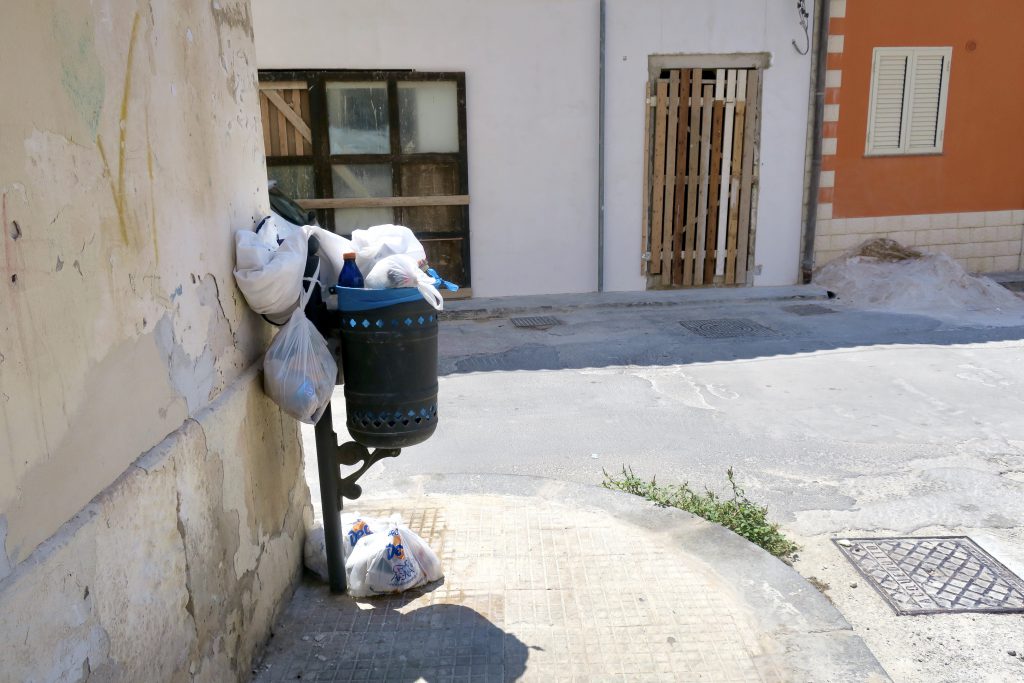
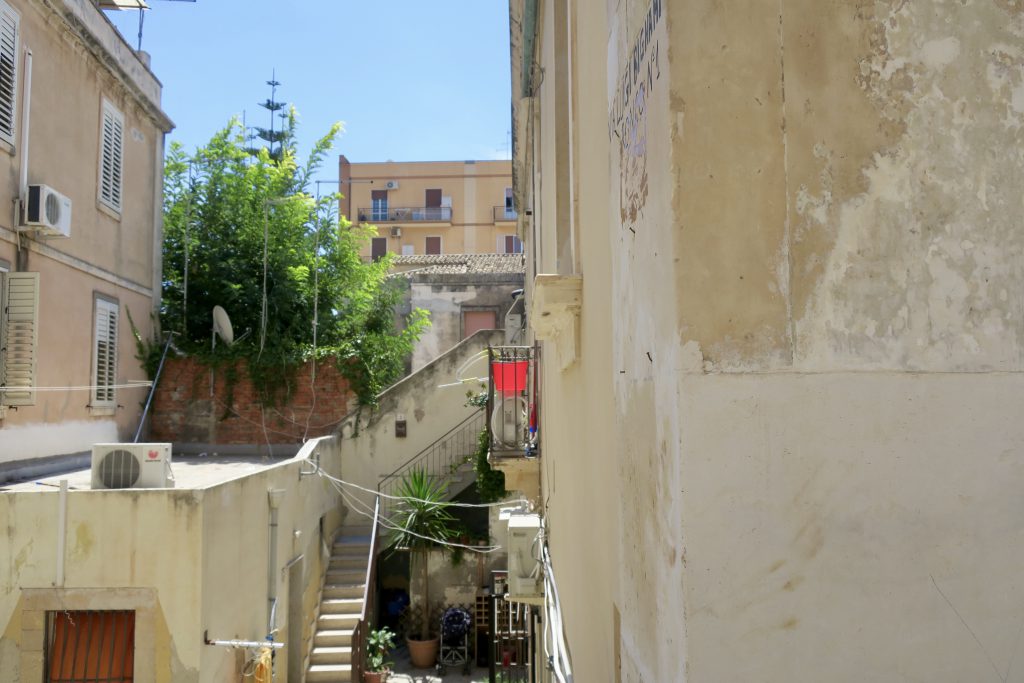
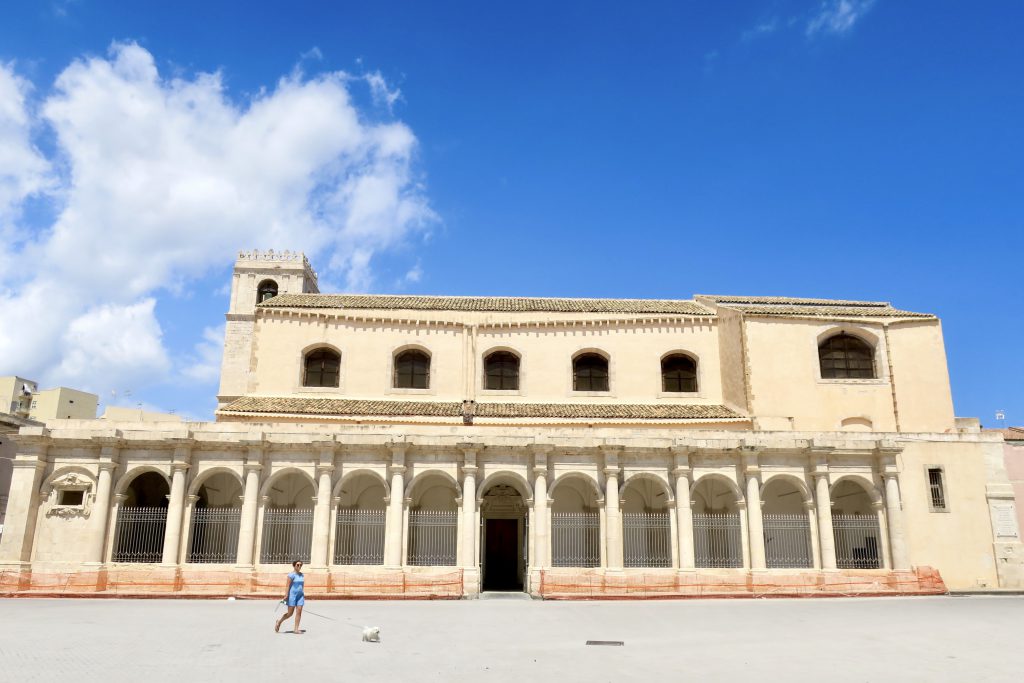
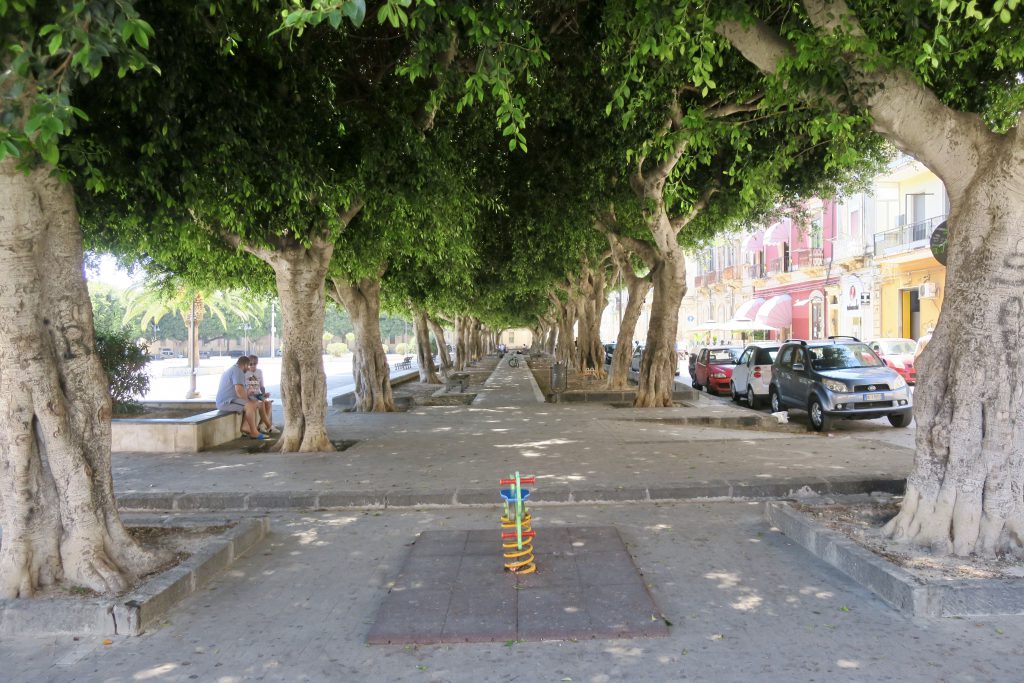
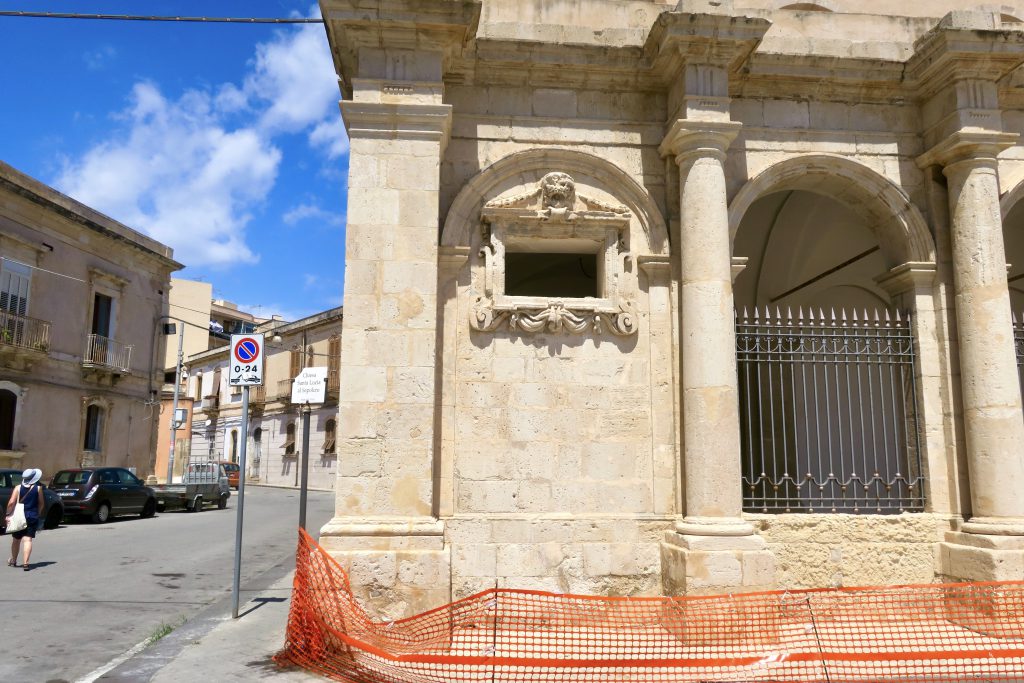
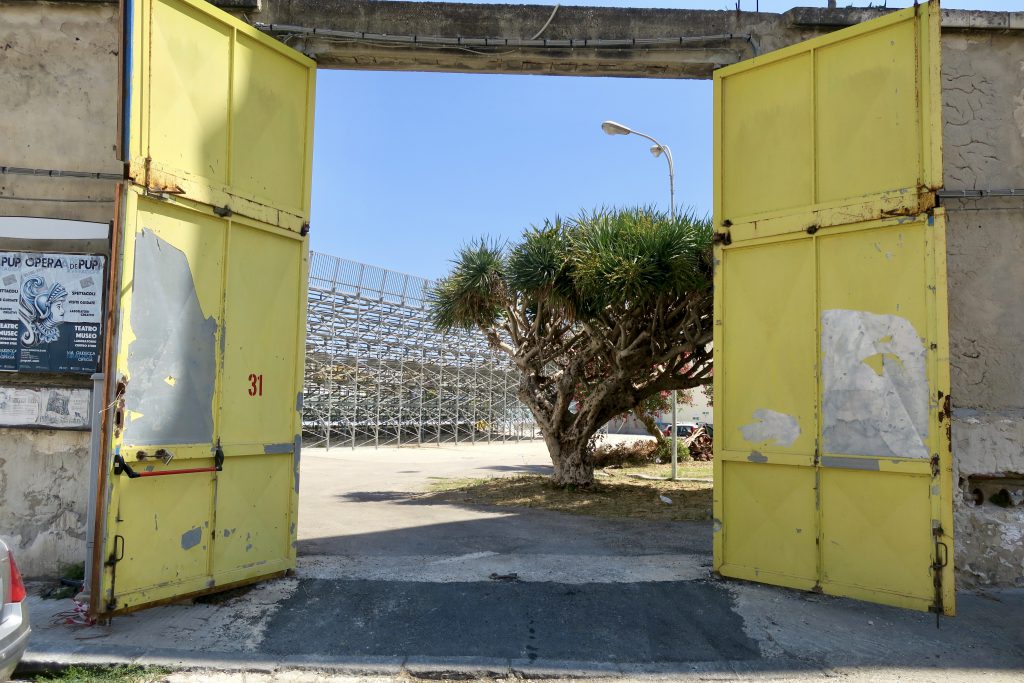
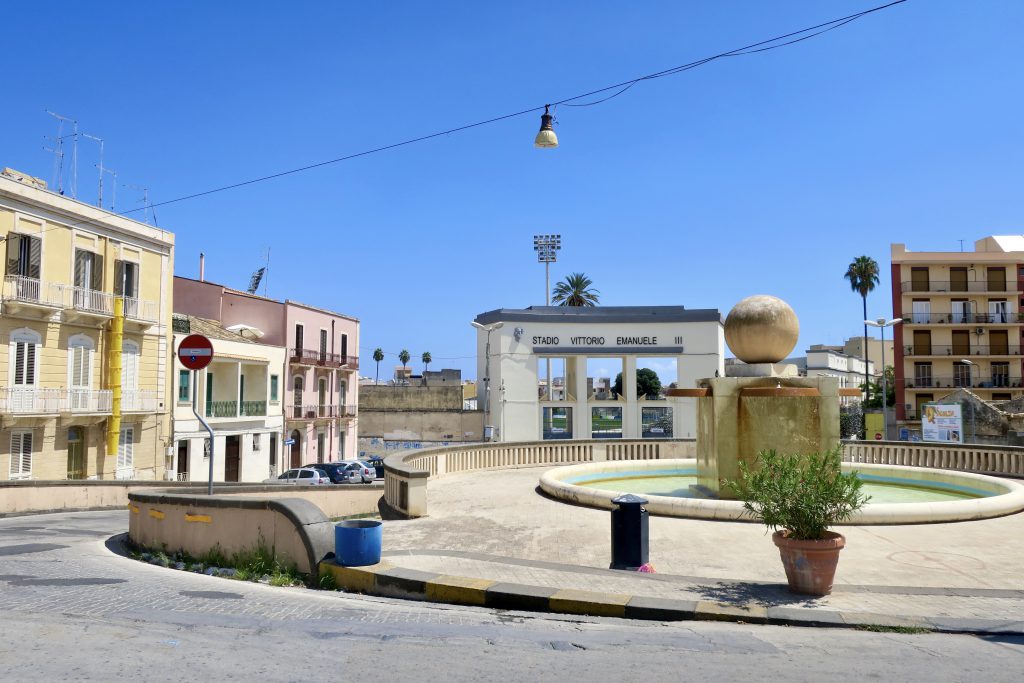
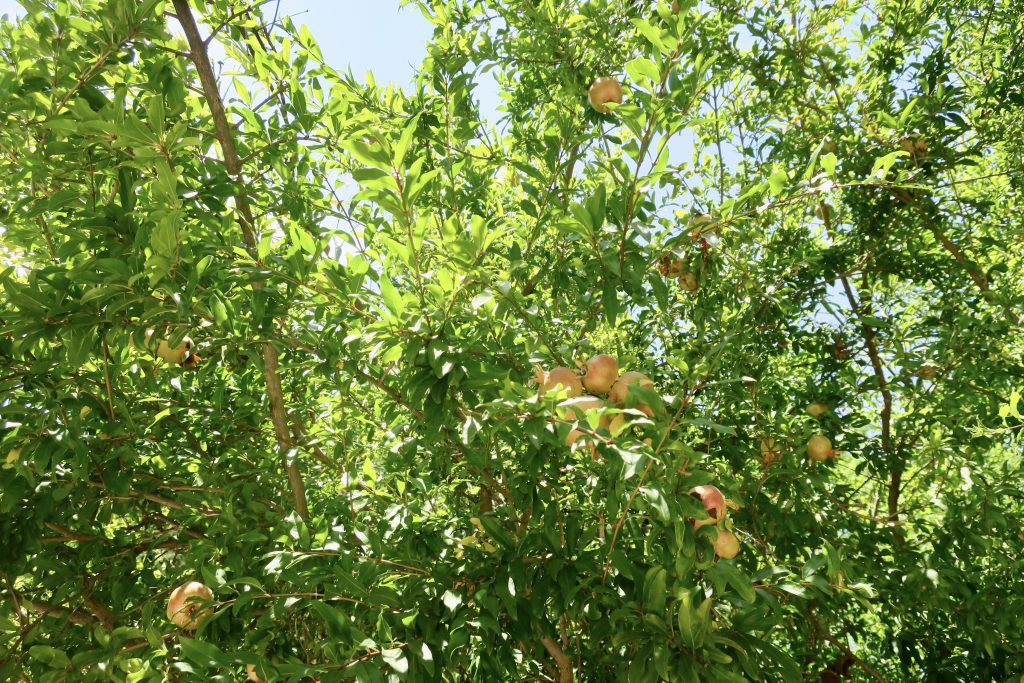
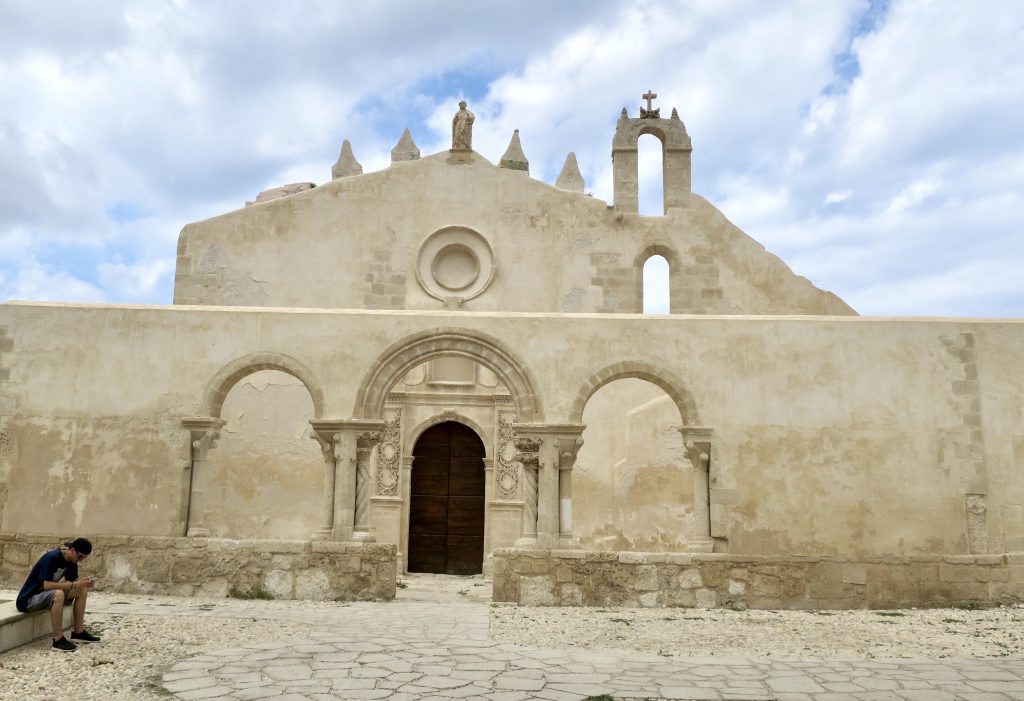
And eventually we arrived at the basilica of San Giovanni.
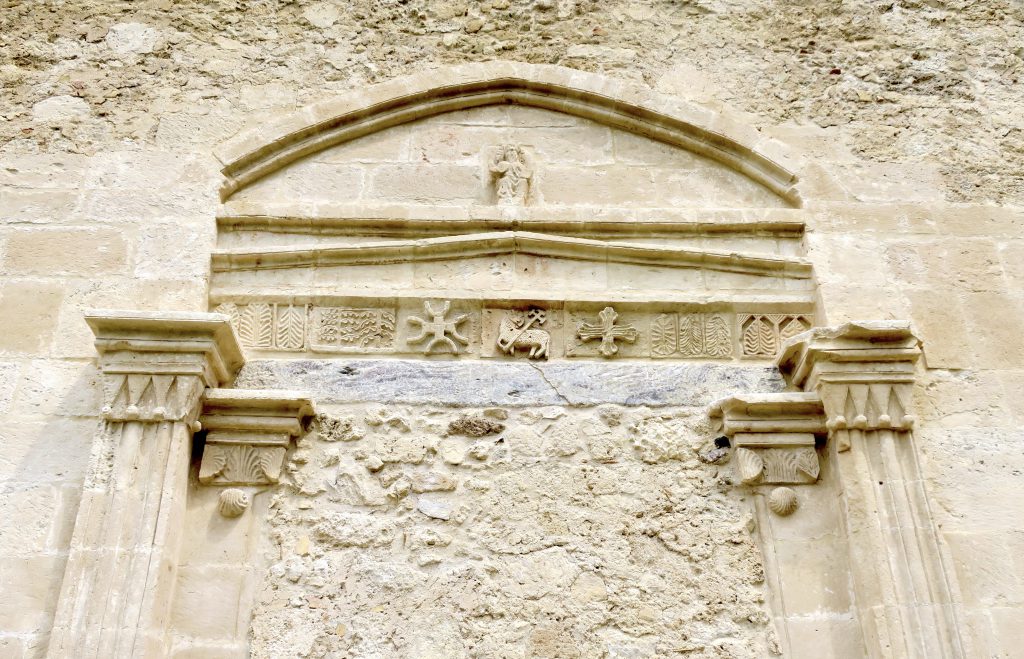
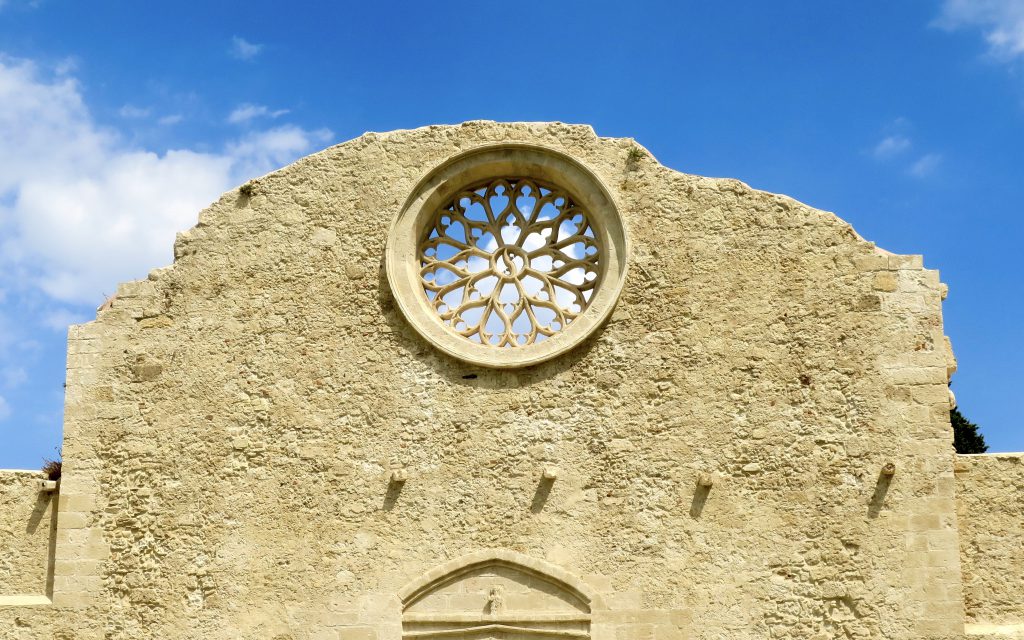
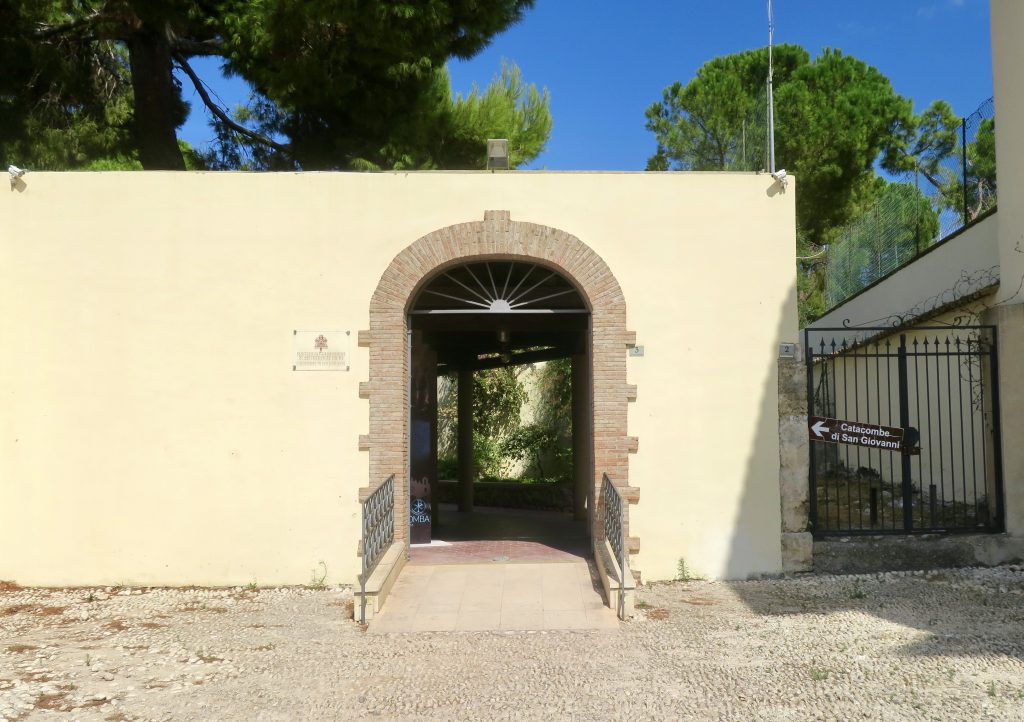
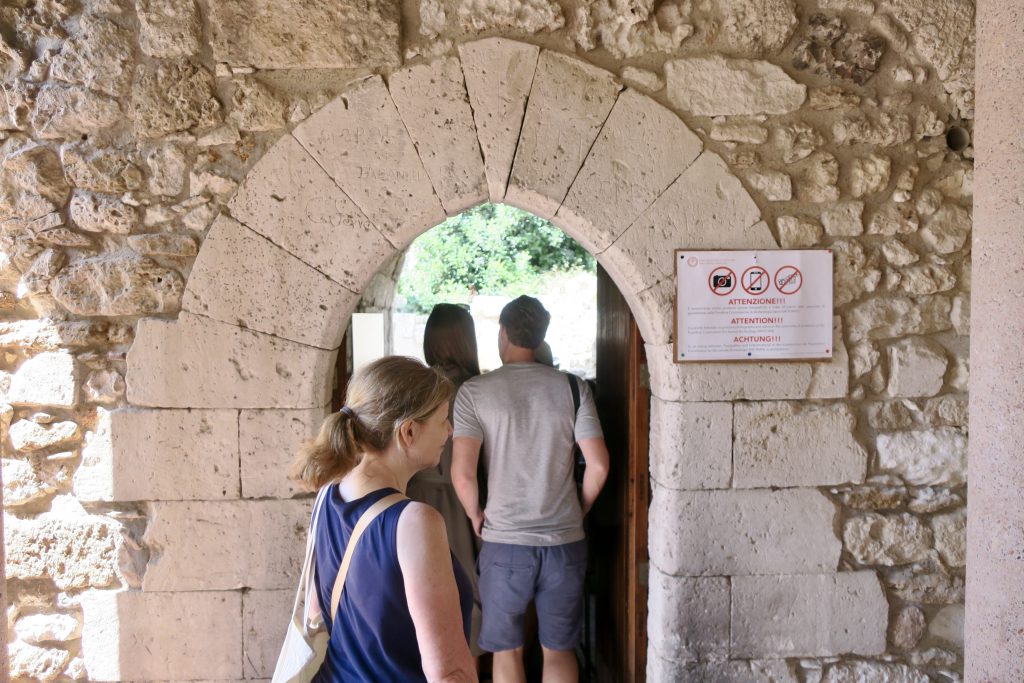
We had to wait until our appointed time, and when enough of us had gathered in the waiting room we were led by our tour guide down into the underground streets. I can’t remember how we descended from ground level to catacomb level. Cameras were forbidden. So here are a few photos I found online. We were given dates and shown significant tombs but all I wanted to do was wander and get lost. To see it for myself. But then I suppose I’d still be there now, in the dark, looking for a way out.
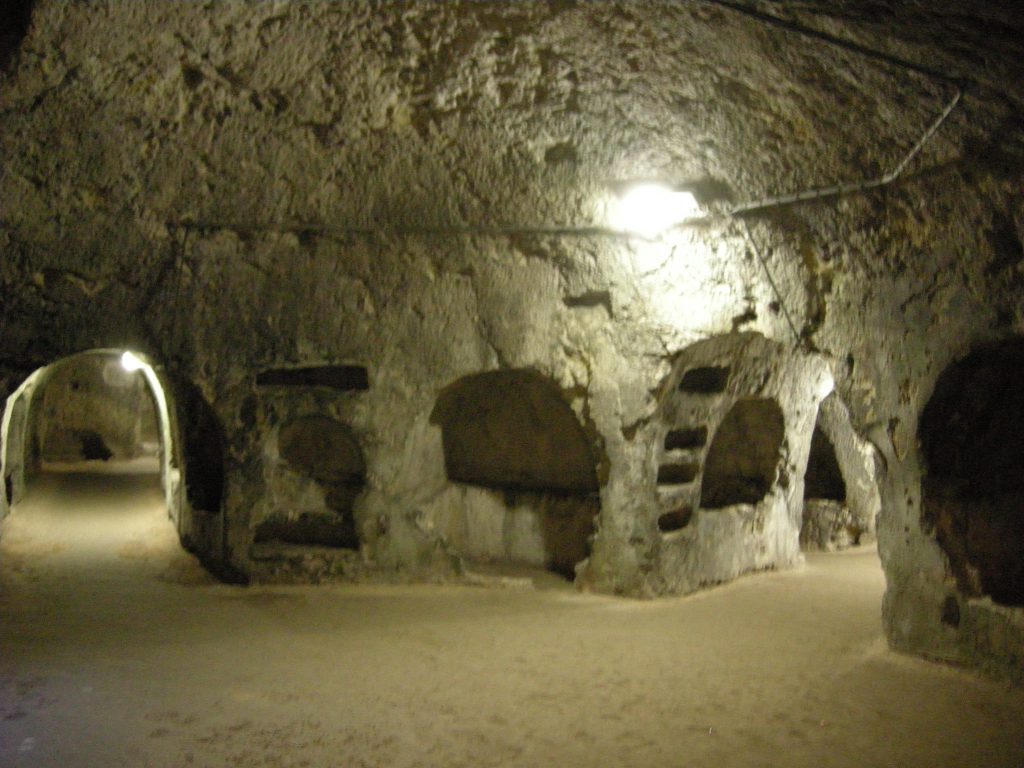
Abode where lost bodies roam each searching for its lost one. Vast enough for search to be in vain. Narrow enough for flight to be in vain.
Samuel Beckett: The Lost Ones
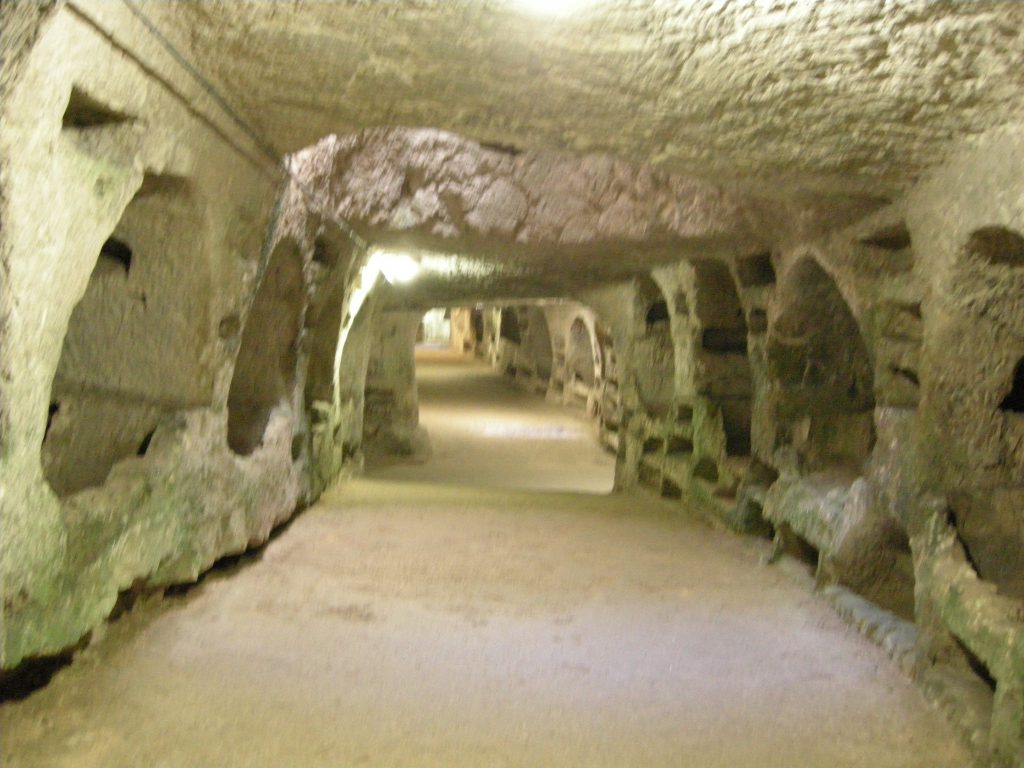
Slots cut in stone for bodies to dissolve in.
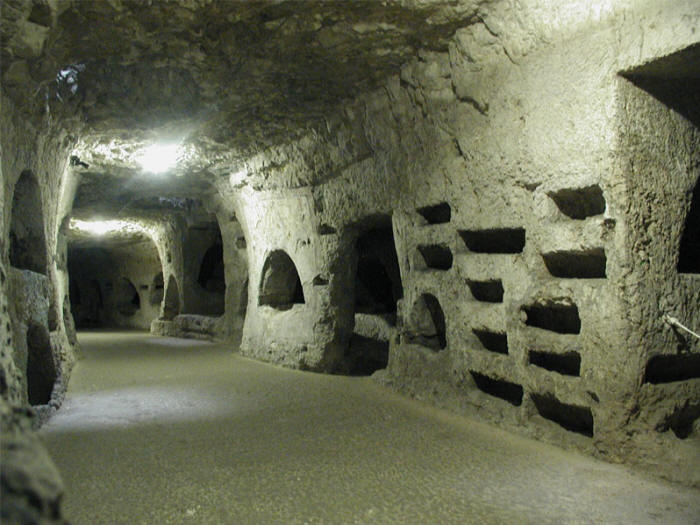
Where sense and nonsense collide. Days spent sheltering from the heat of the sun, carving tunnels, heaving rocks, choking dust, to build a city of the dead. Evacuated, spirits fled. A deserted labyrinth, now resurrected tourist circuit, walk-through sculpture, empty-headed holloway for numskulls.
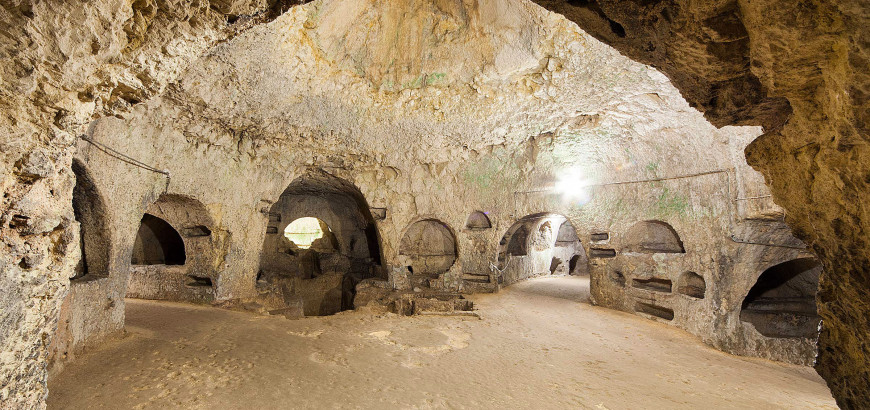
Archways like eye sockets.
The Catacombs of S. Giovanni in Siracusa
S. Giovanni is the largest cemetery of a cristina community, built in Syracuse after the Peace of the Church. From the project and from the monumental layout it is evident that the catacomb of St. John was born after 313, continuing its life during the fourth and fifth centuries, while still in the first decades of the sixth century there were inscriptions relating to Goths ( 491-535). Originally, the community cemetery seems to be designed according to an almost exclusive type of burial: the multiple deposition arcosolium; in the topographical and architectural development of the catacomb the creation of some roundabouts breaks the series of standardized burials to derive adequate spaces for the representatives of the hierarchy of the Church and the Empire.
Catacomb of St. John in Siracusa
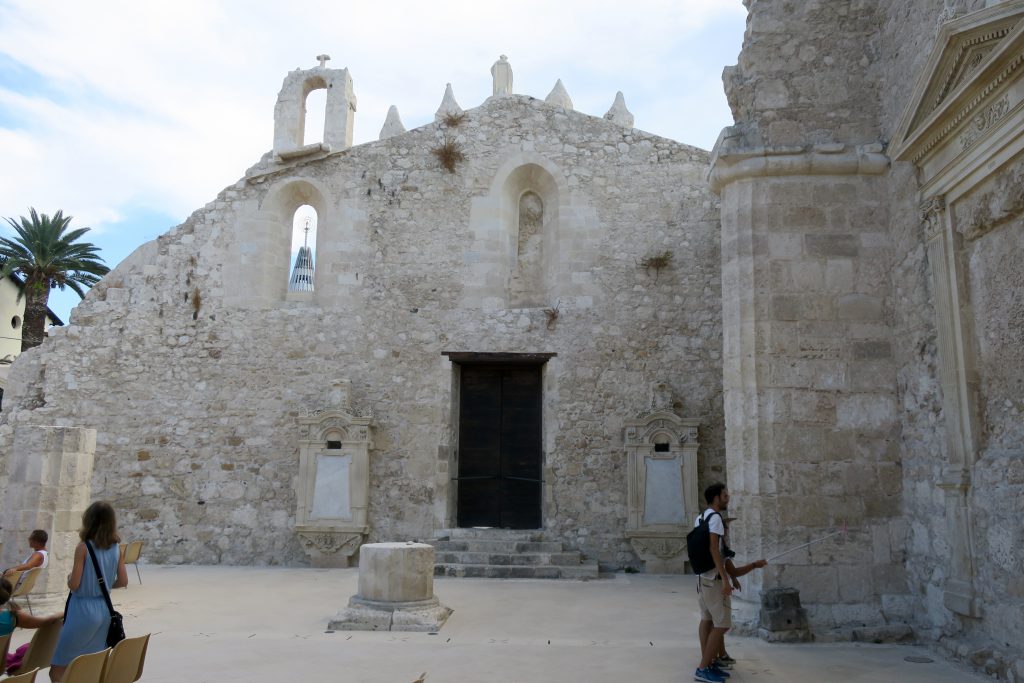
Back upstairs, in the roofless church (above us only sky) we’re allowed to use our cameras again (no way holloway) and we’re enlightened once more.
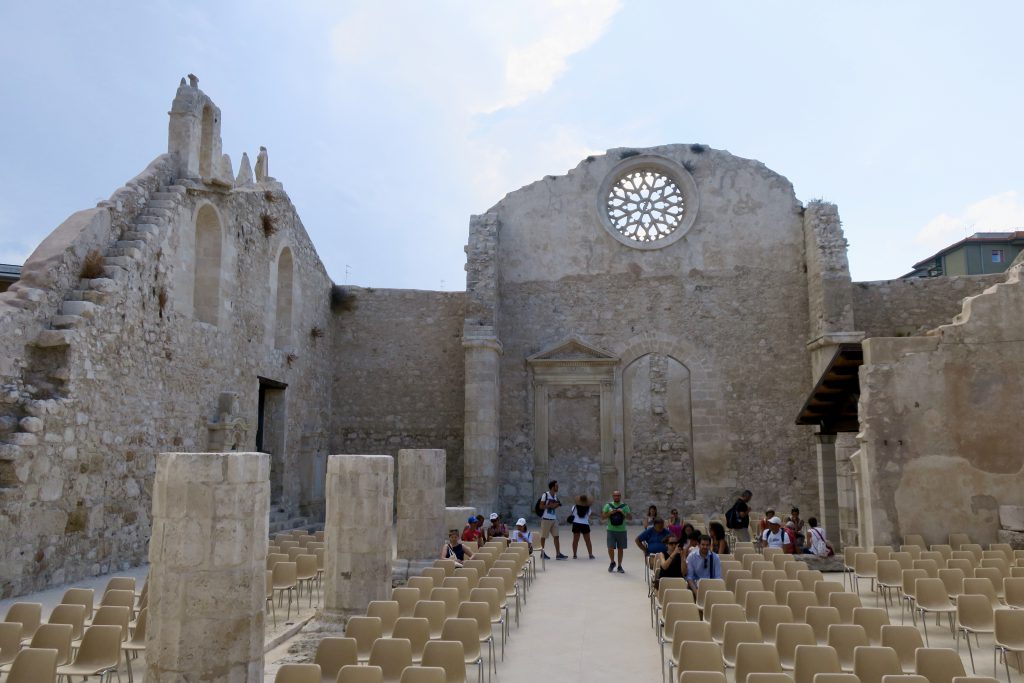
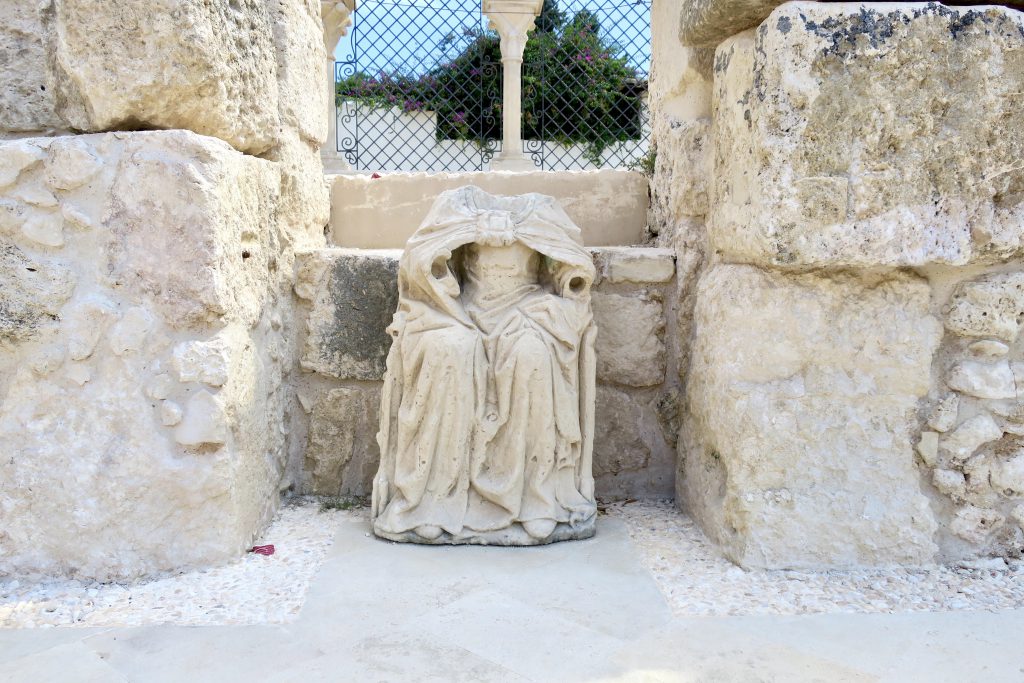
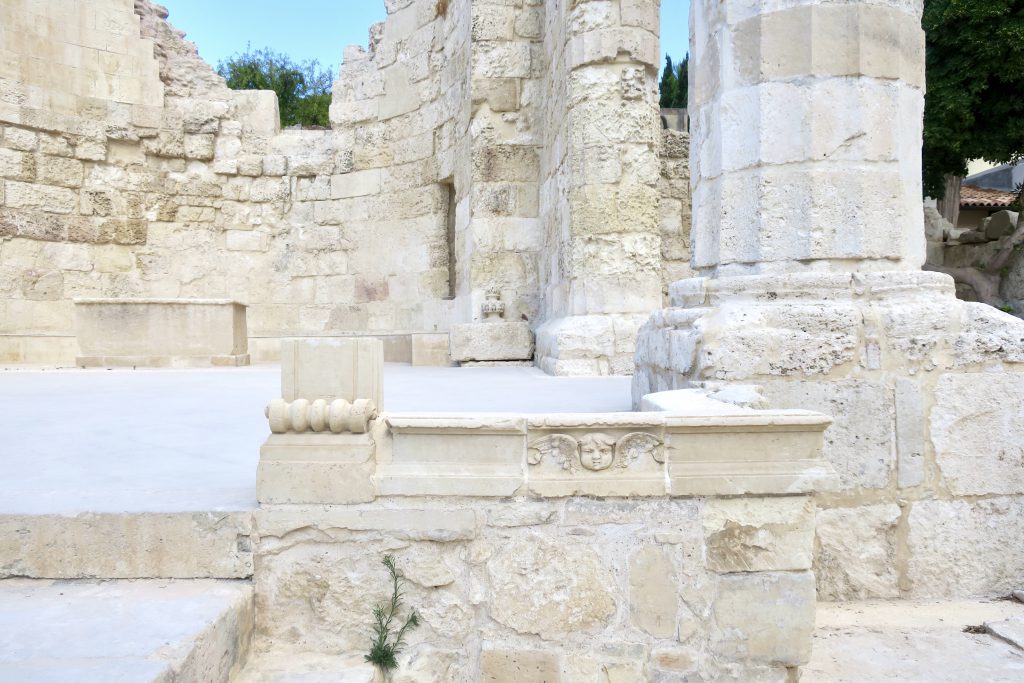
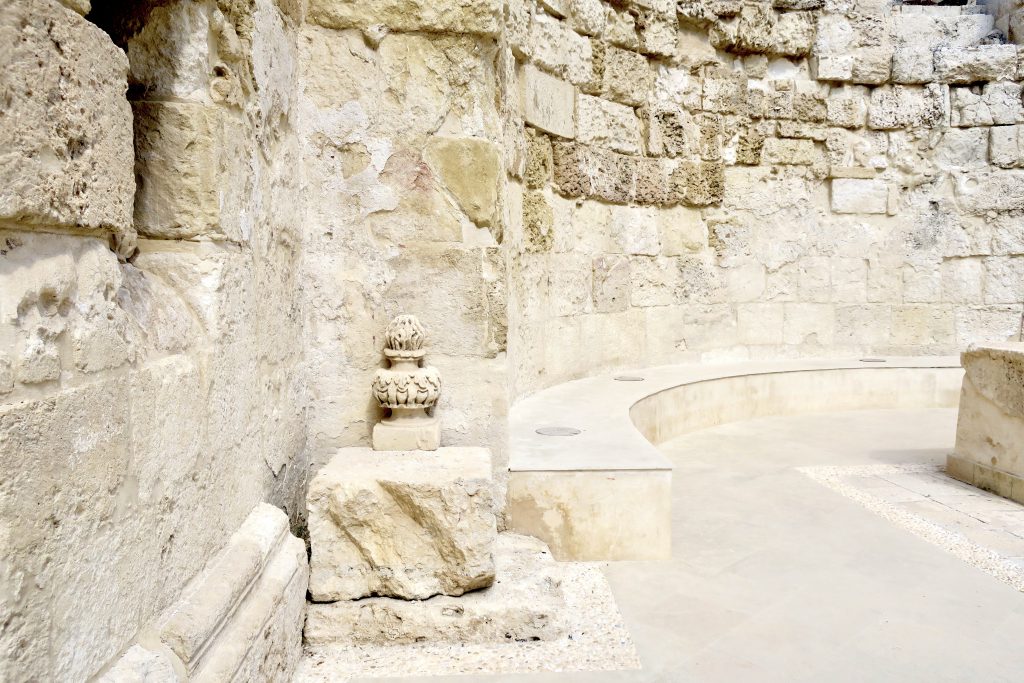
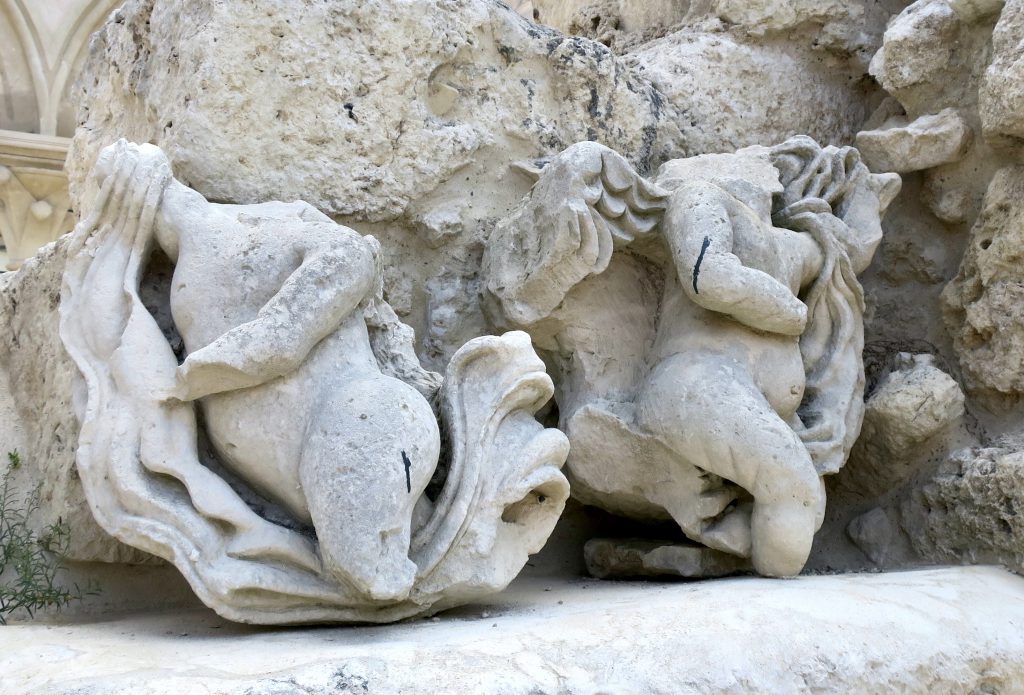
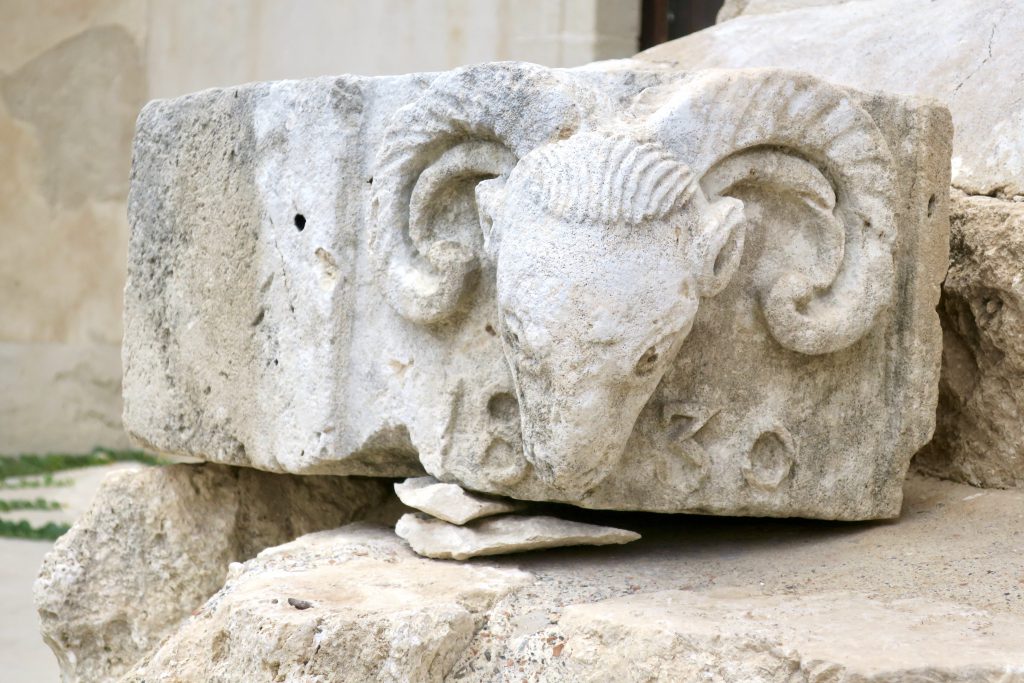
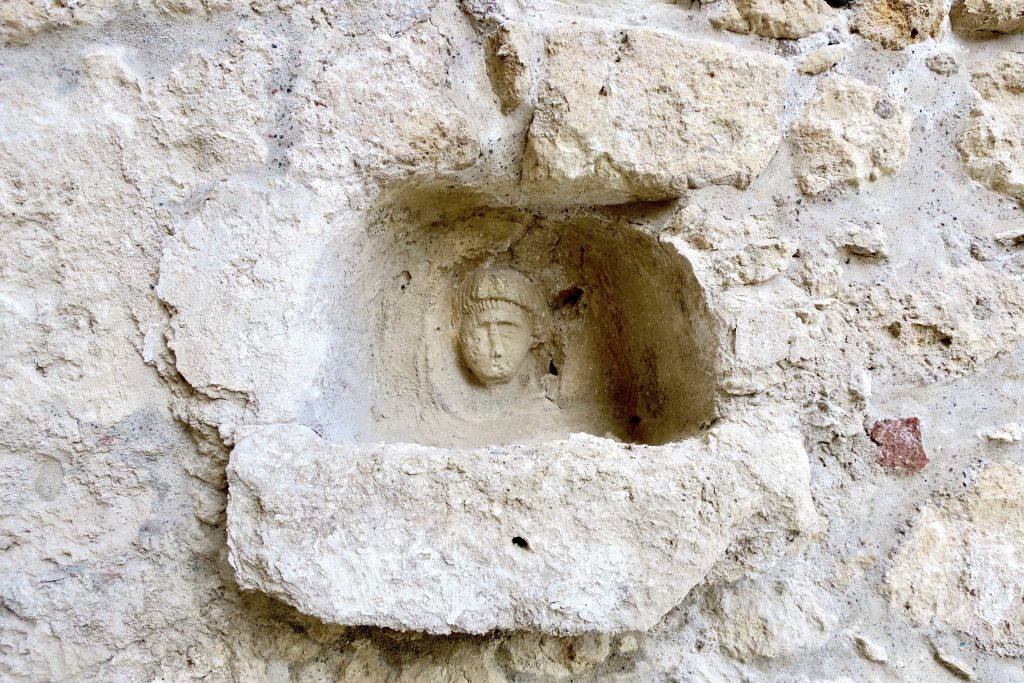
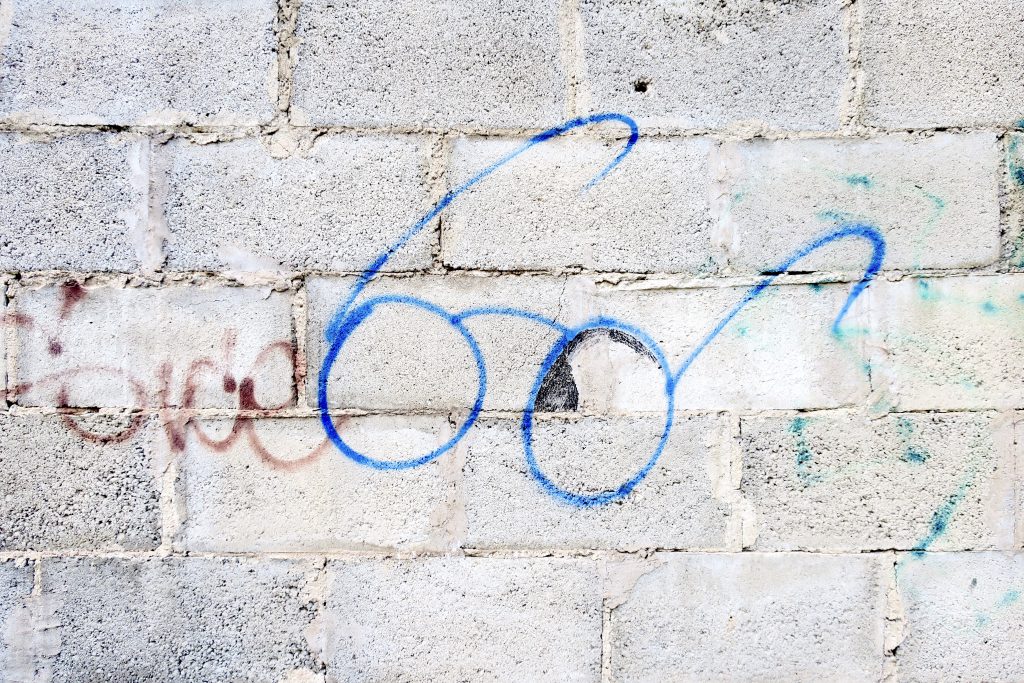
We find spectacles all the way back to Ortigia…
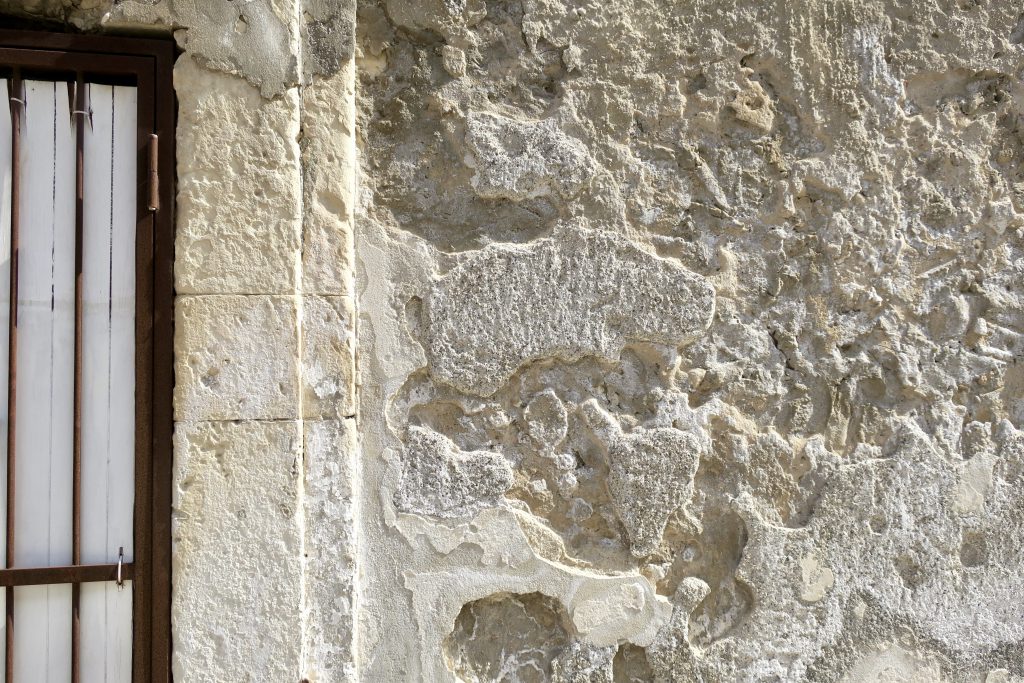
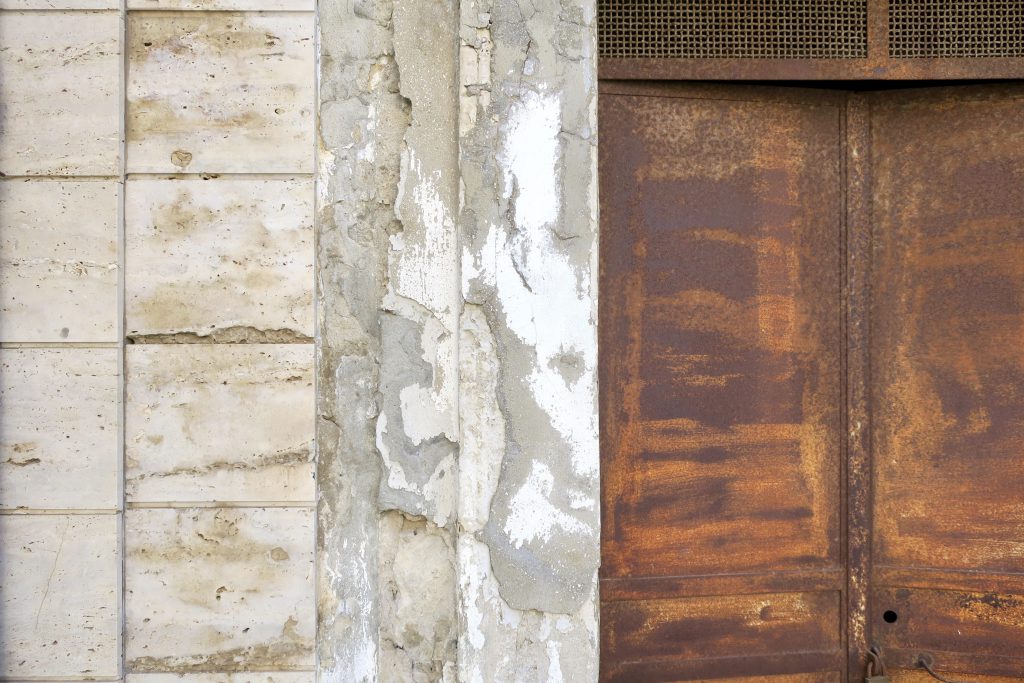
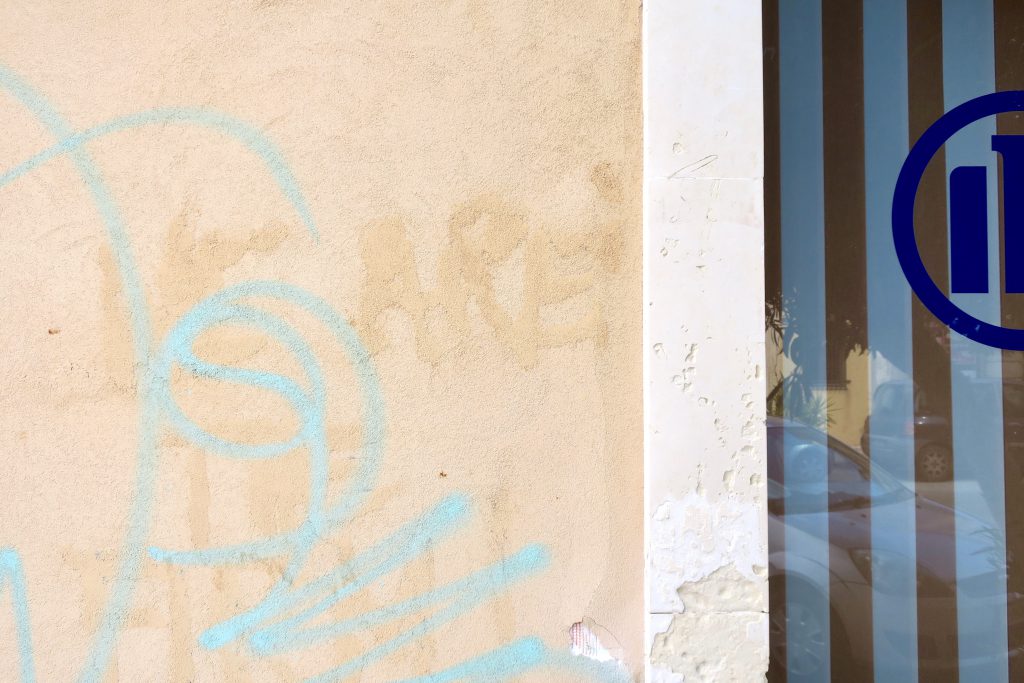
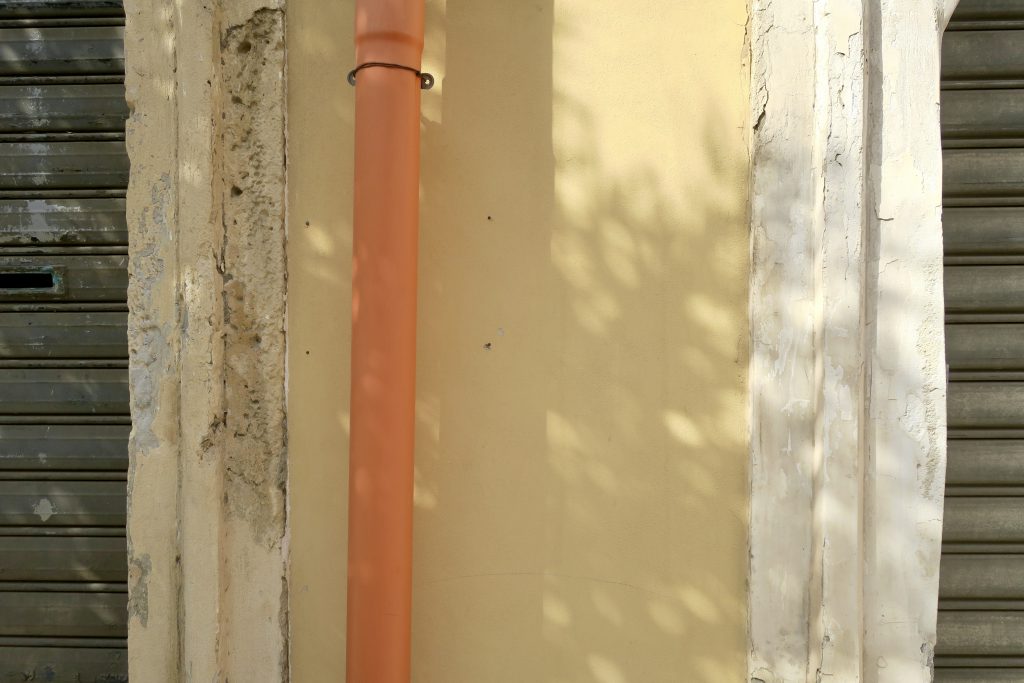
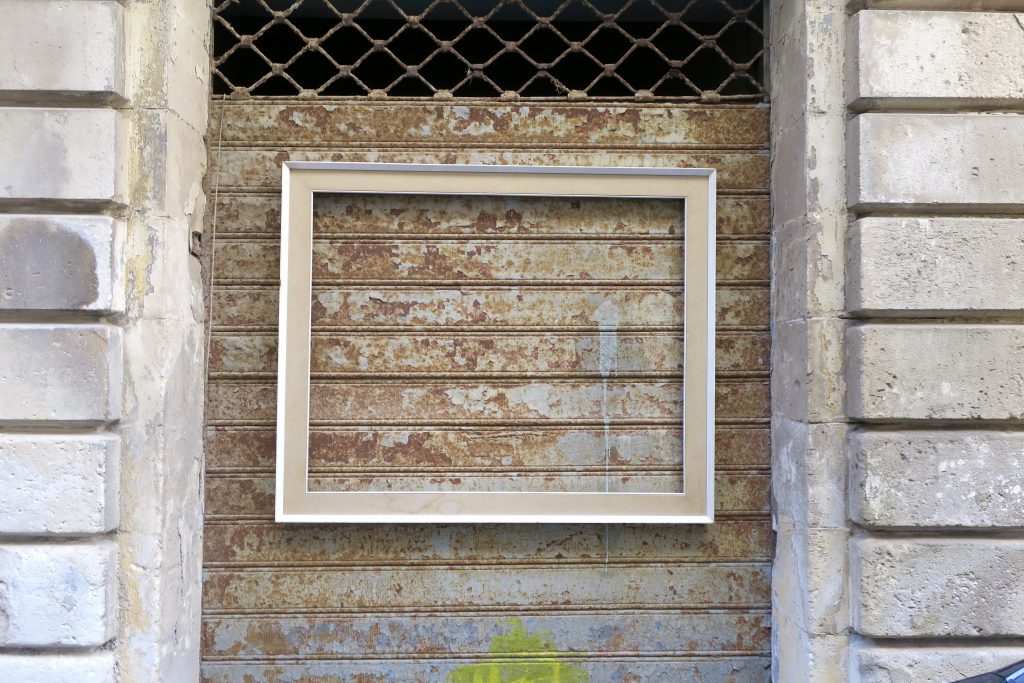
※
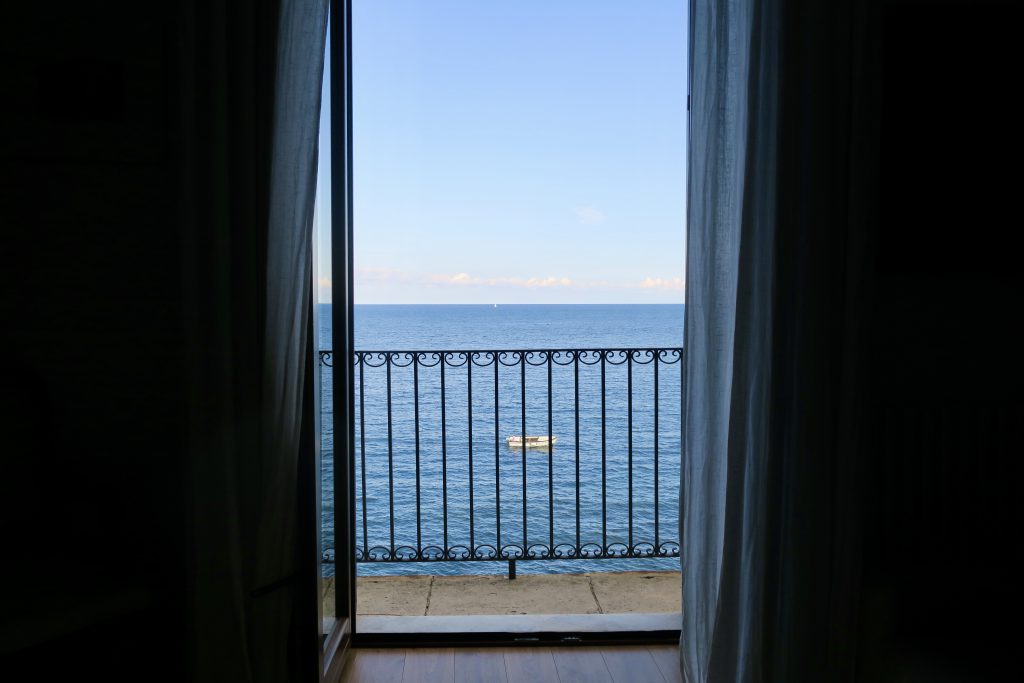
This is the last photo I took from our widow. And this is the last blogpost from Sicily. Here’s a list below of links to all the previous Sicilian posts.
※
Passeggiata In Ortigia / Fonte Ciane / Noto / Noto Antica / Neapolis Archaeological Park / Ispica & Modica / The Chestnut Of A Hundred Horses / Cava Ispica / Akrai / One Last Day In Ortigia / Pantalica


Gorgeous Sicily very cheering on a murky morning. My favourite photo is Sue looking glamorous in The Big Theatre.
Down your Sicilian memory maze on a sleepless starry night. Loved the walk, the images, the chestnut of a hundred horses, and read on about the trinacria, and it’s long wander through history, even to the Isle of Man. Who emptied those shelves of the dead, and where did they take them? Sunken garden beautiful, thanks for digging out those days!